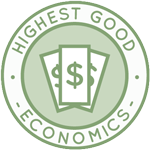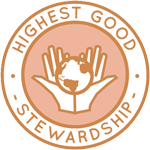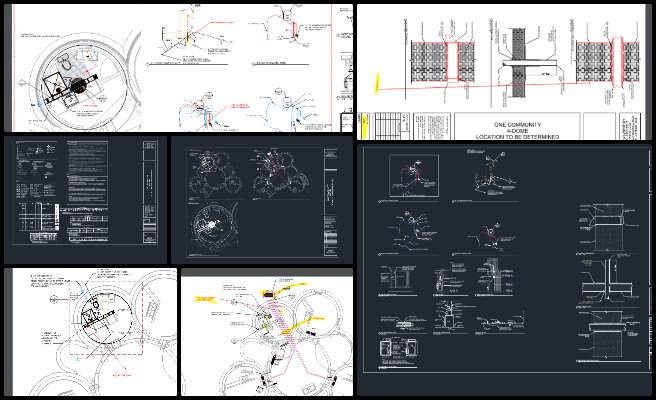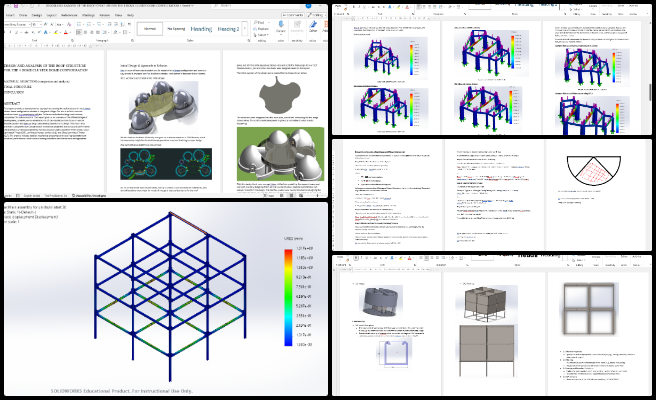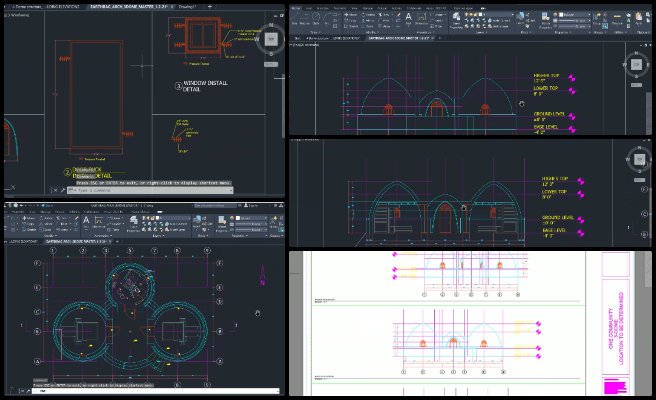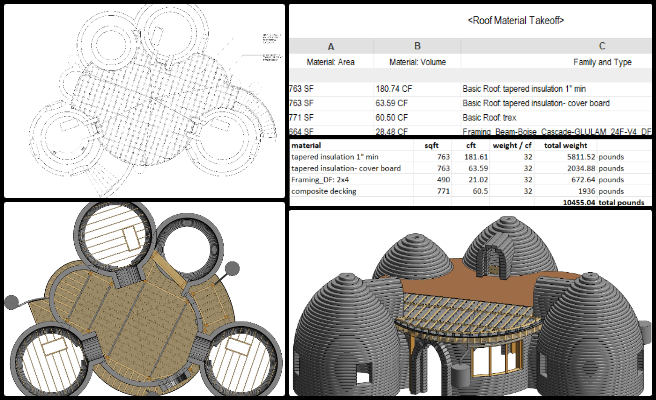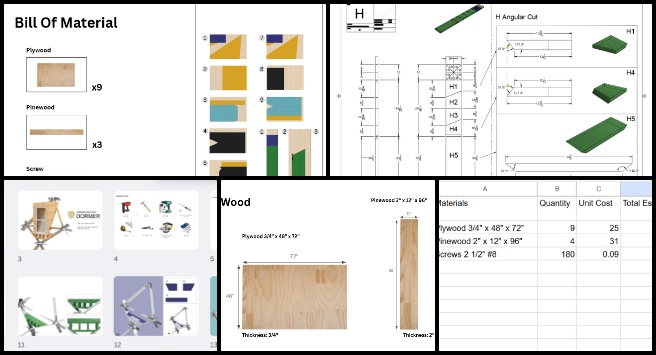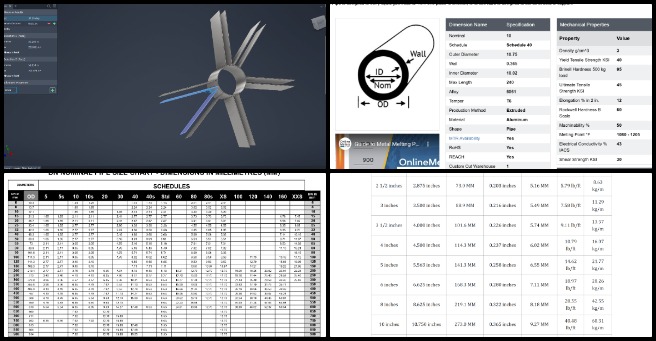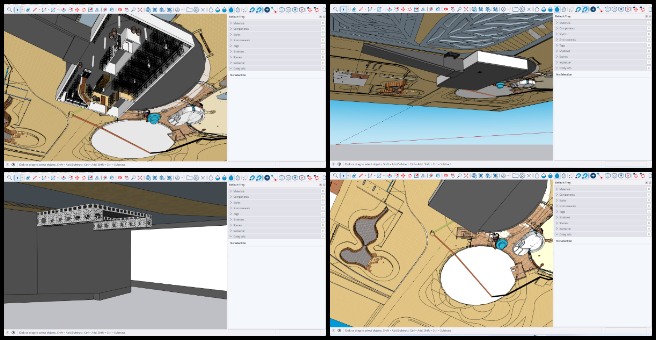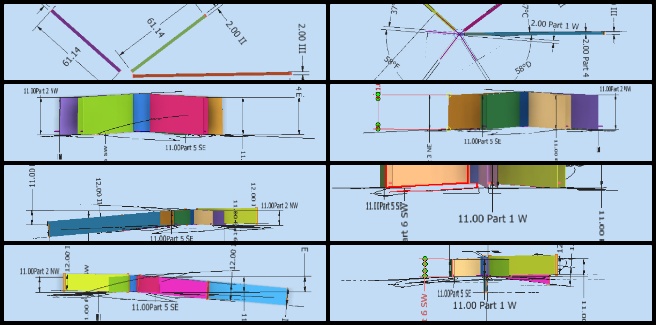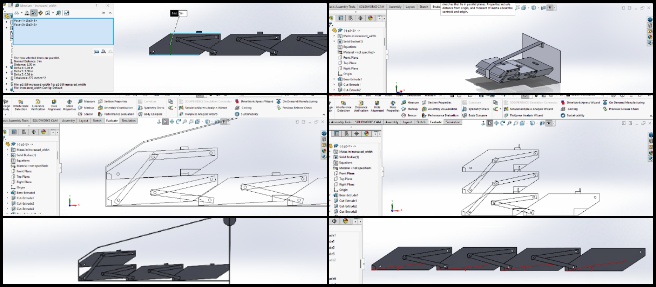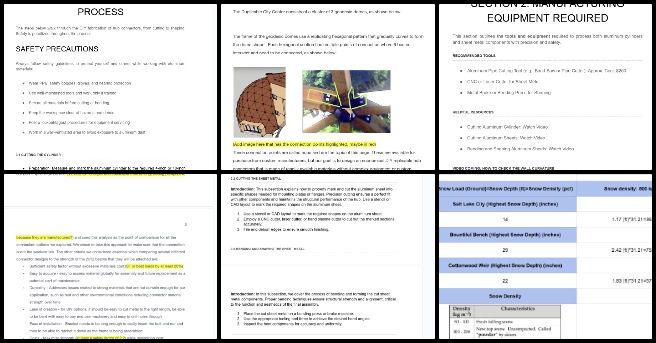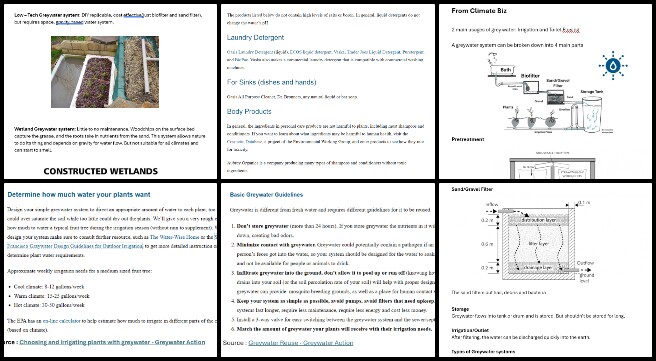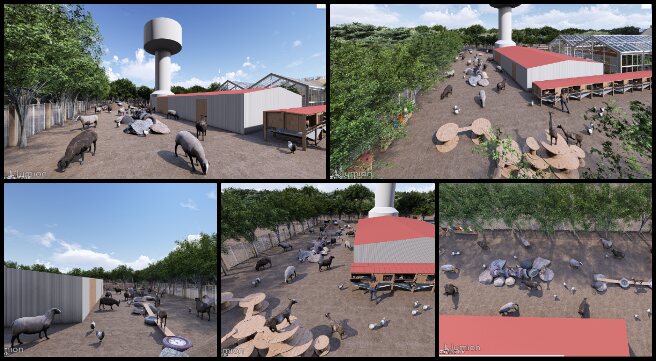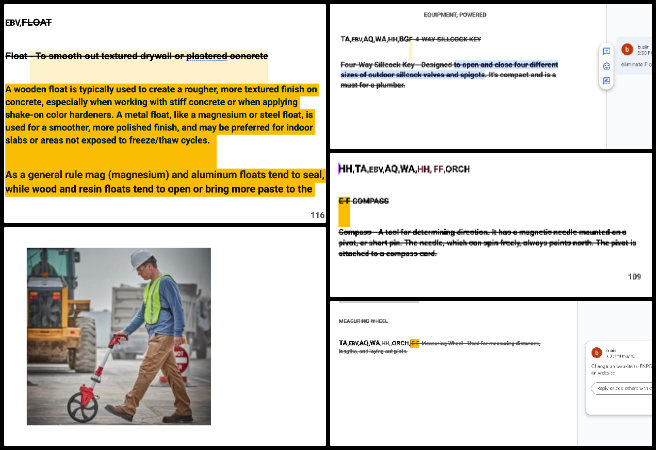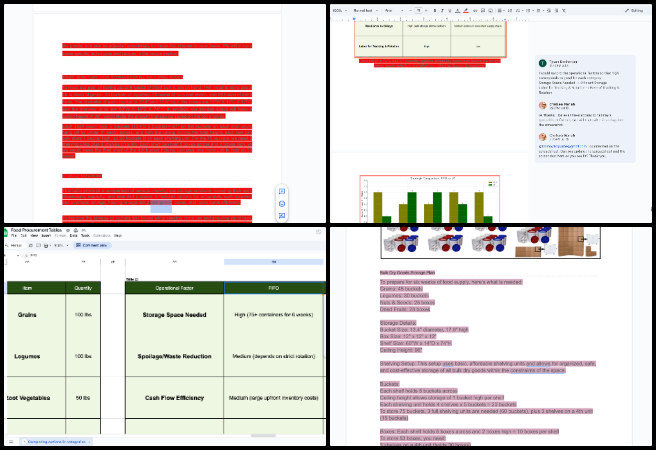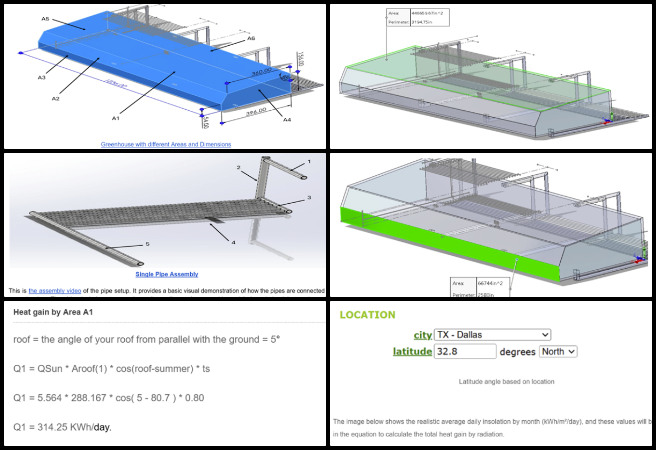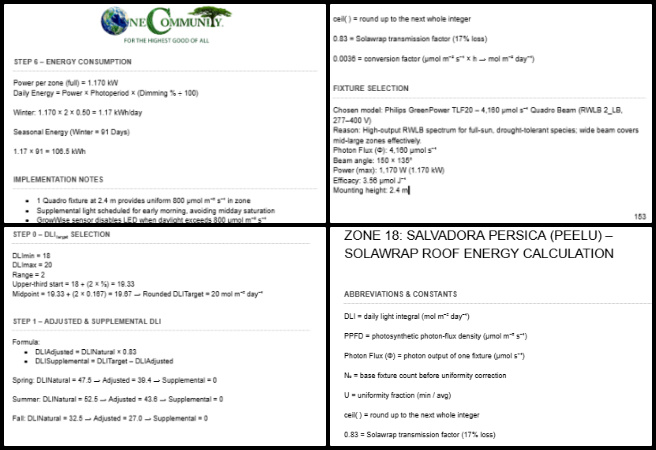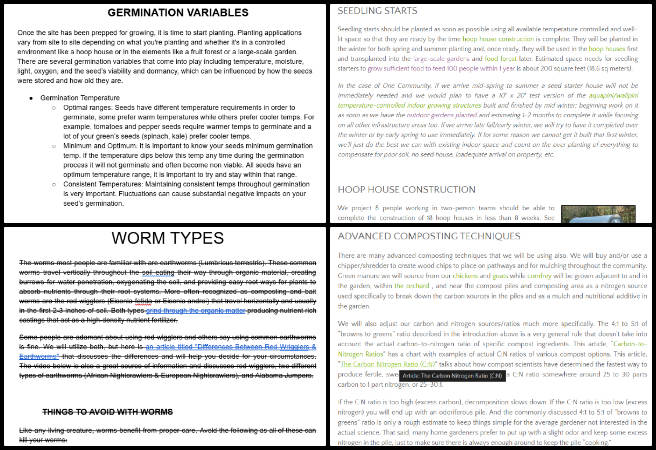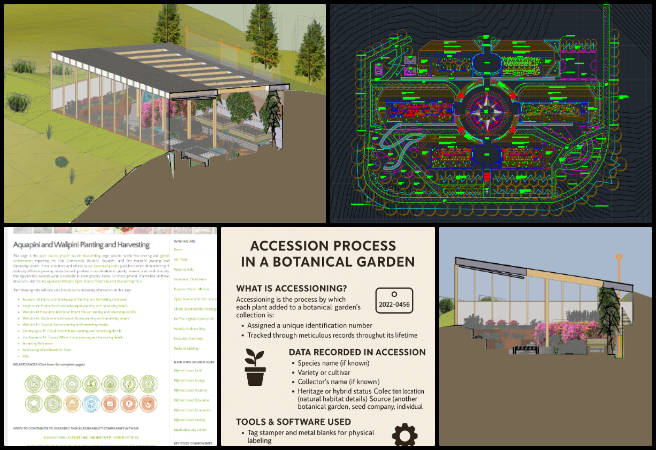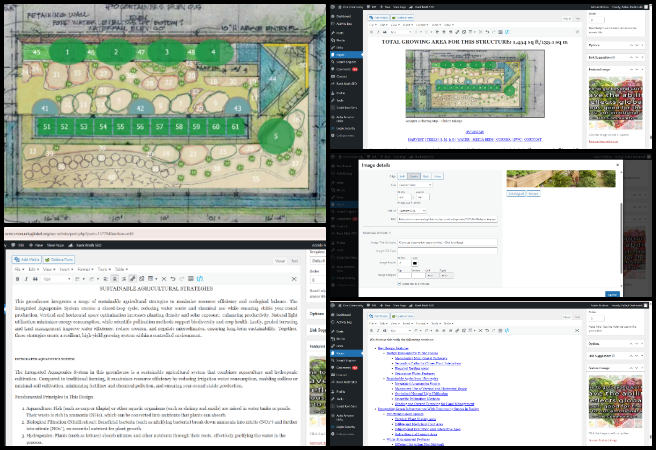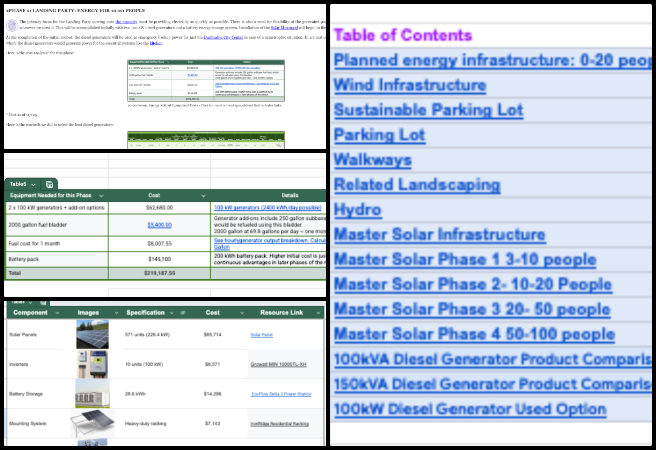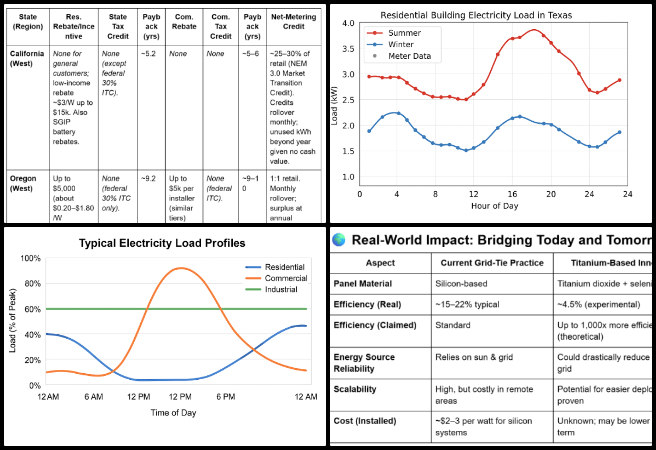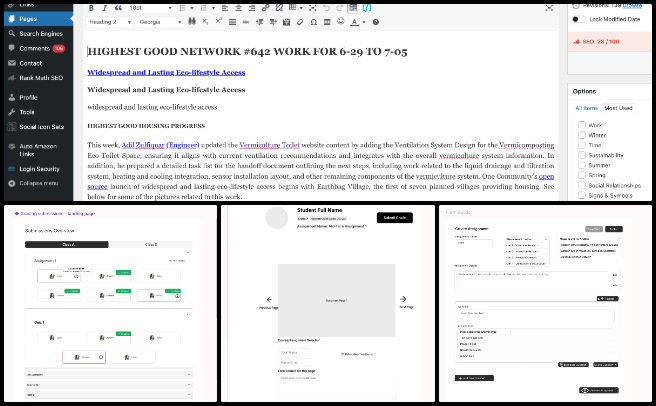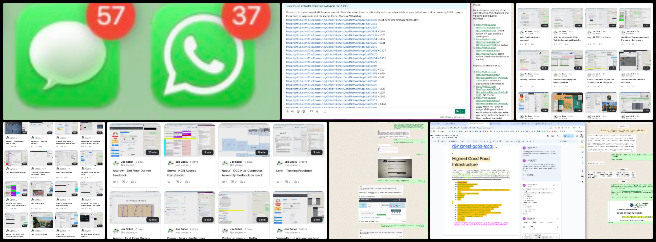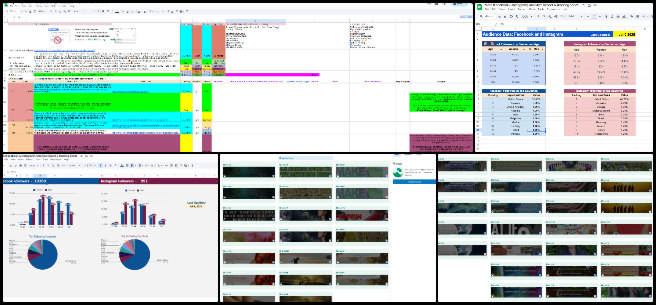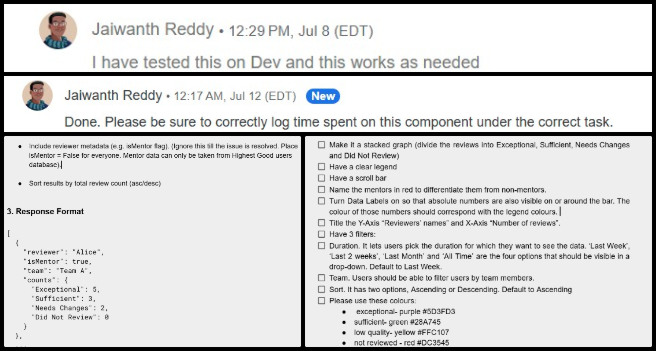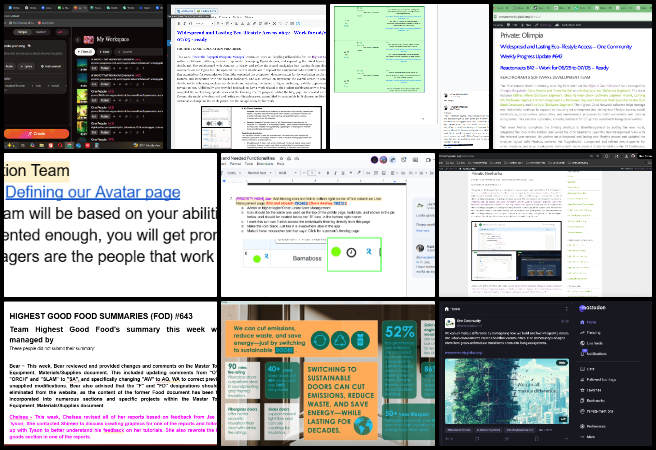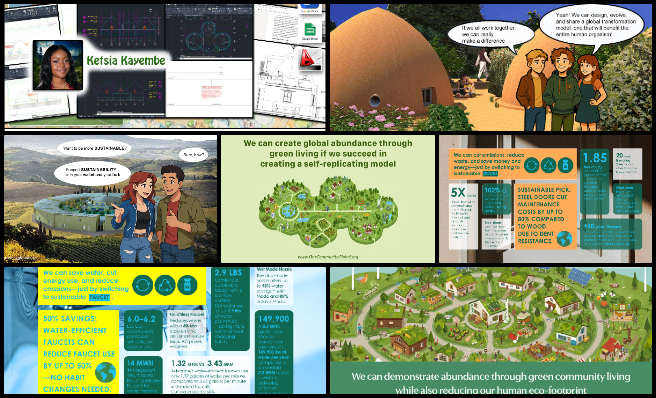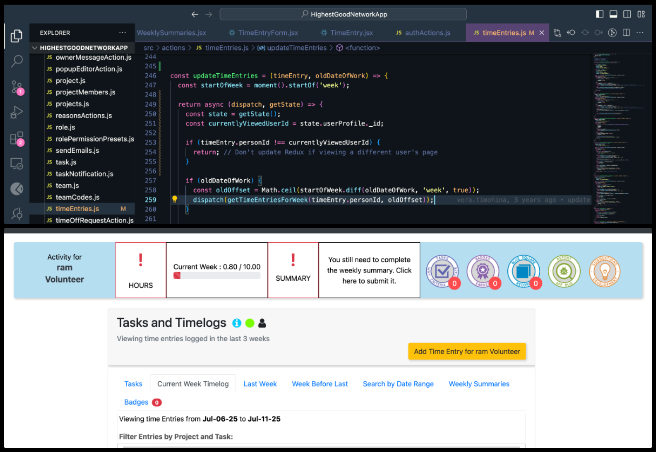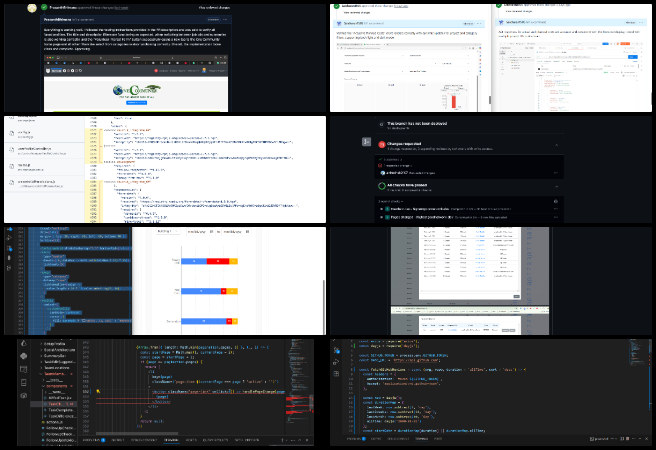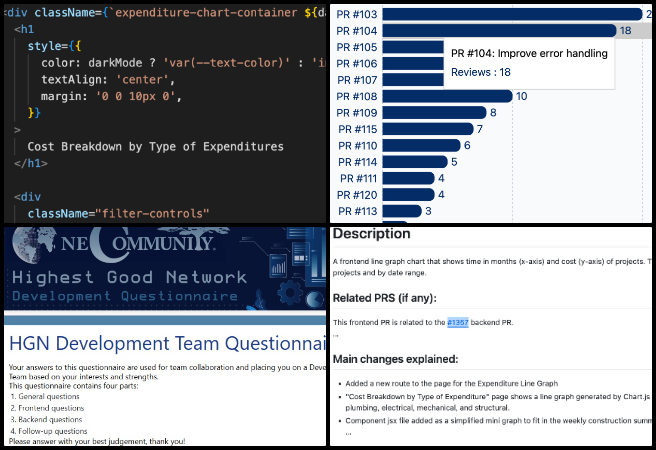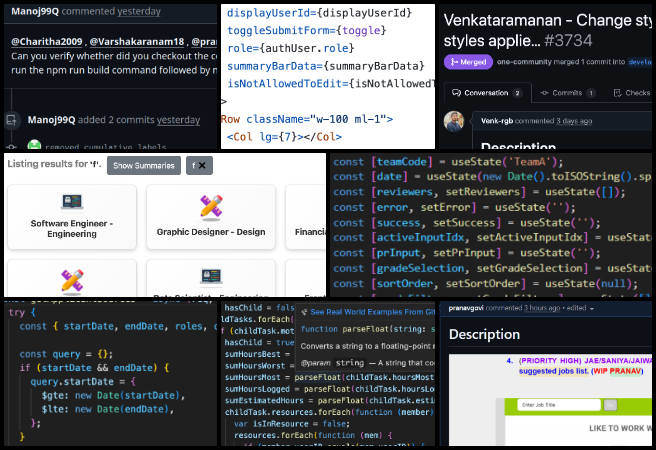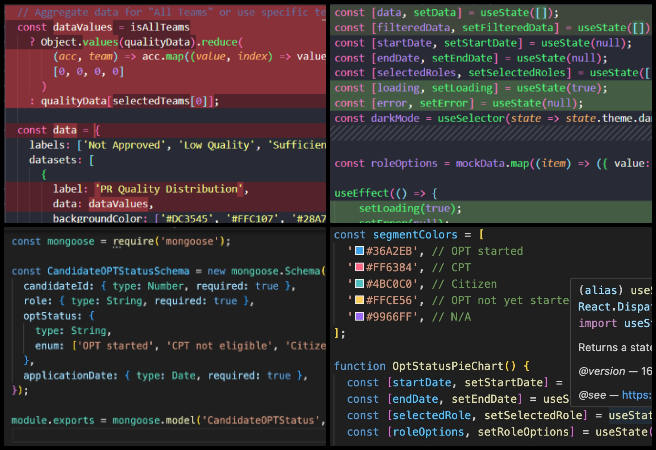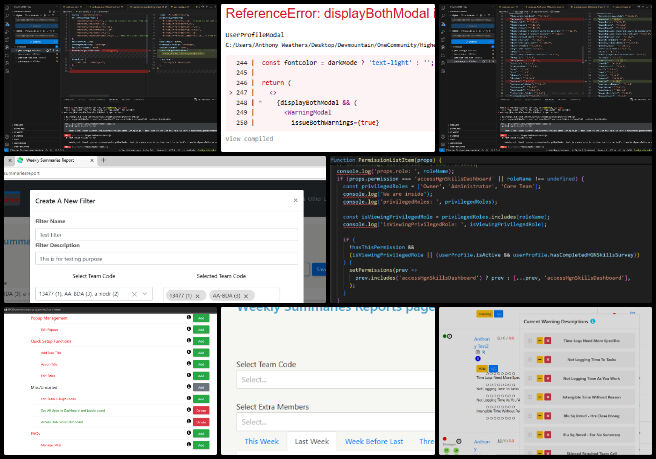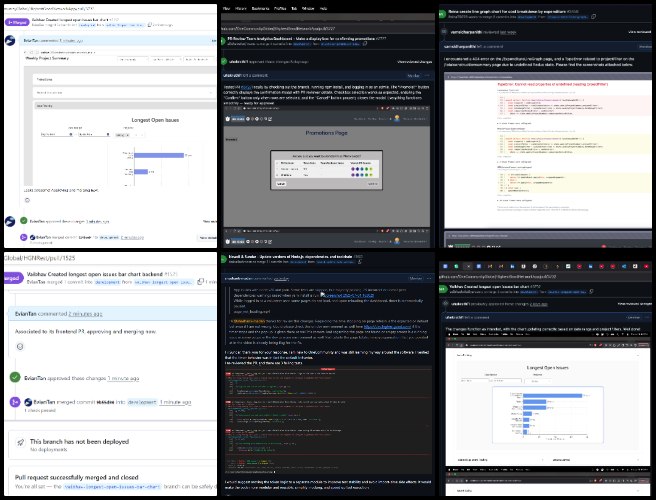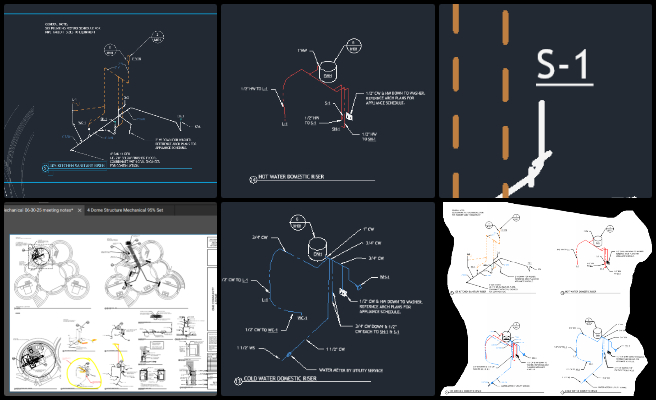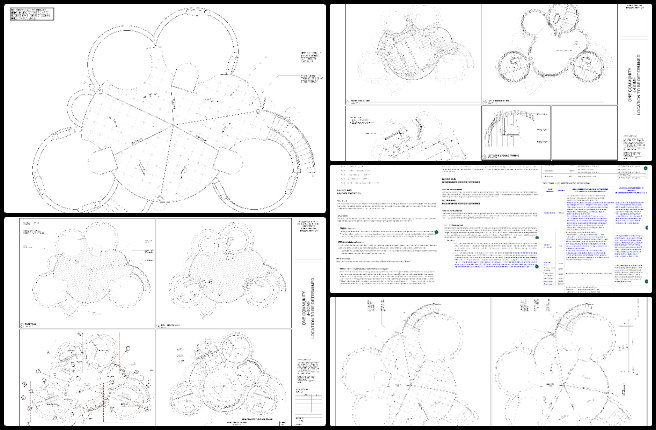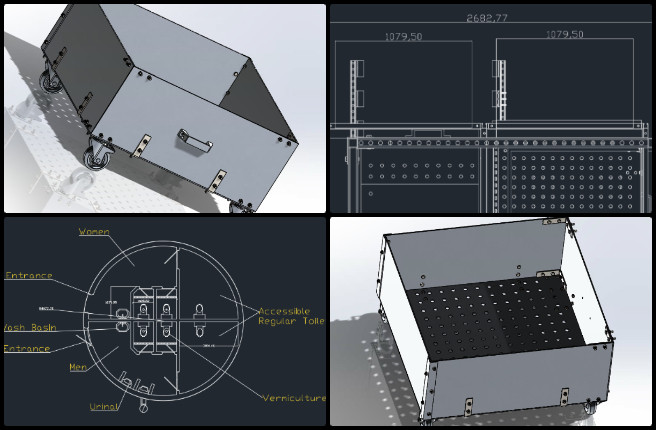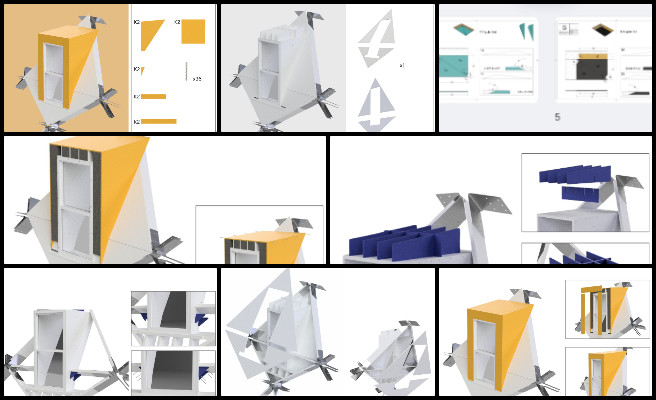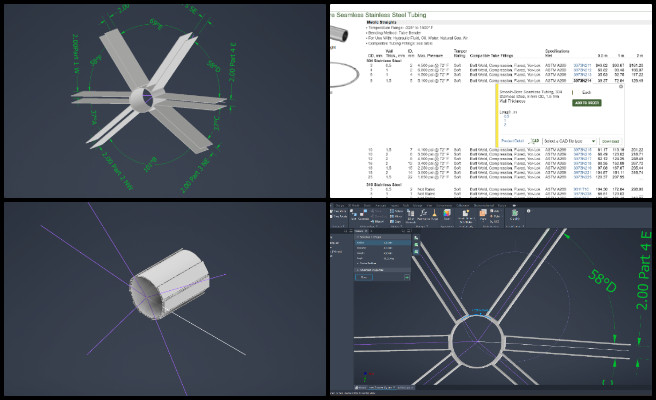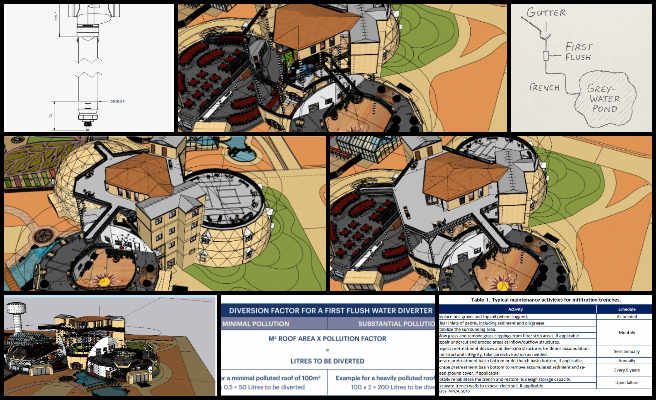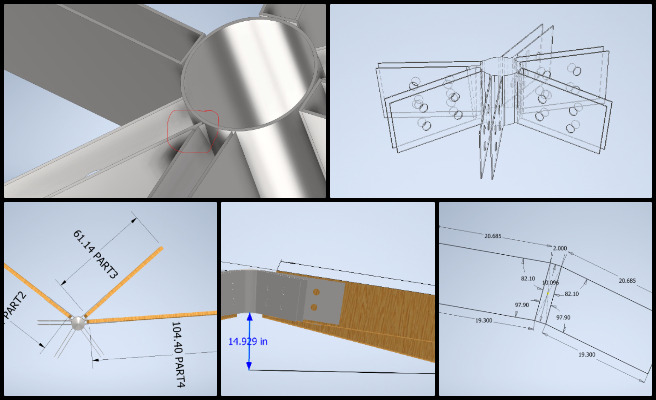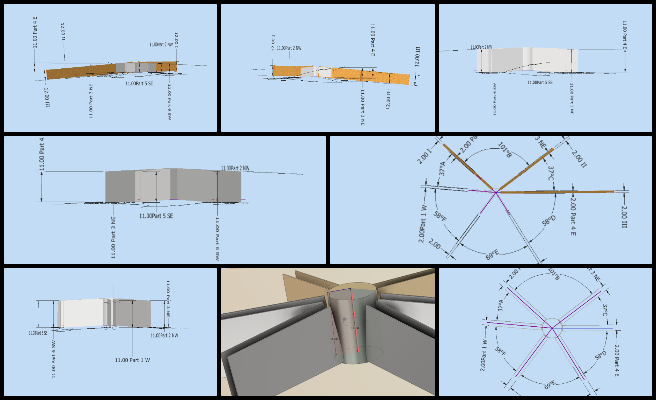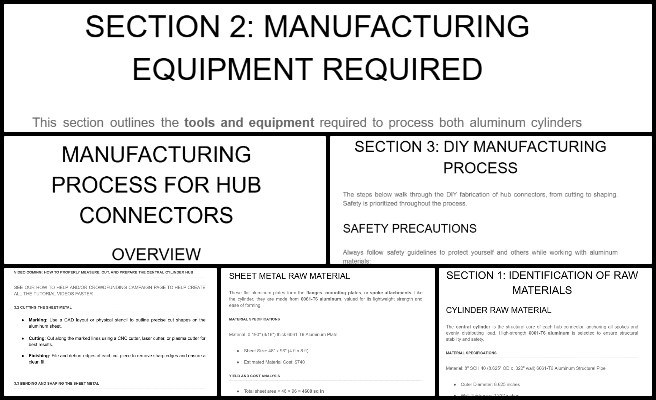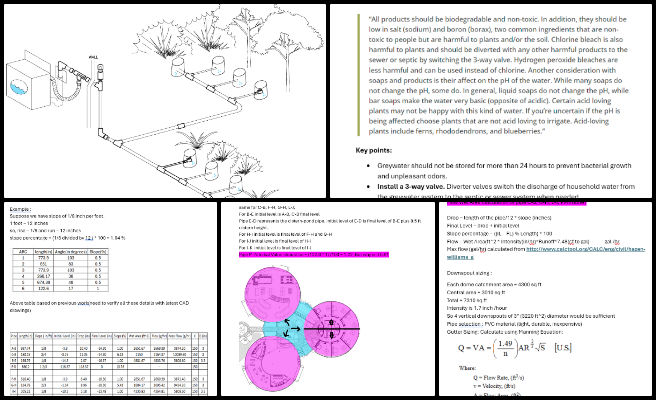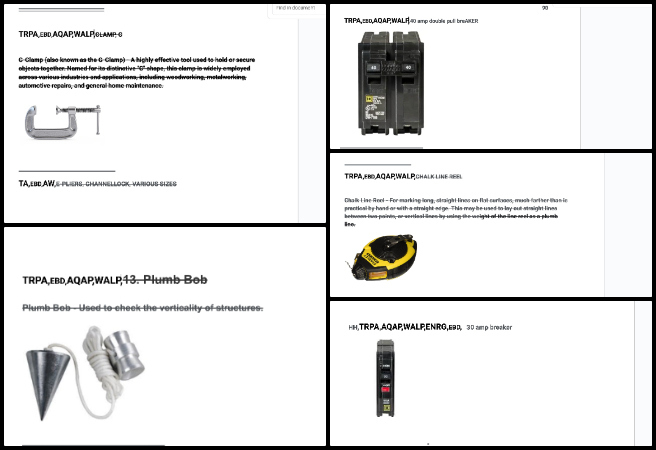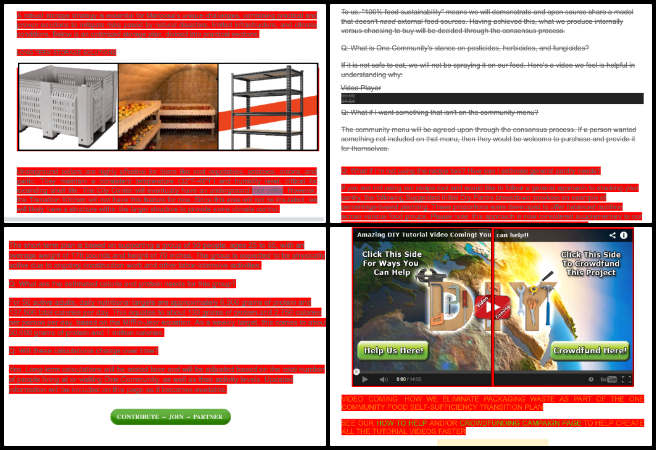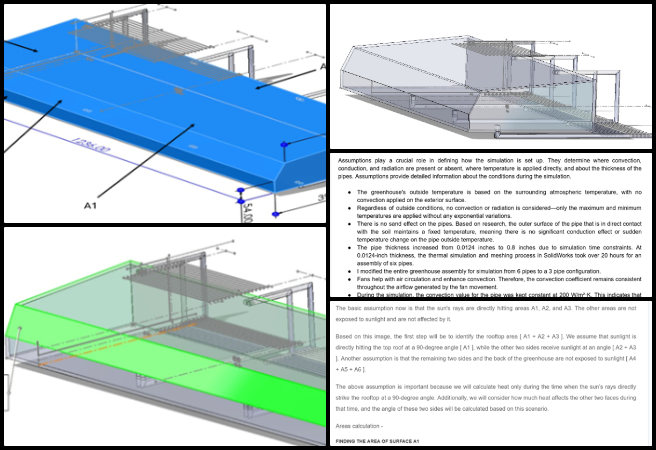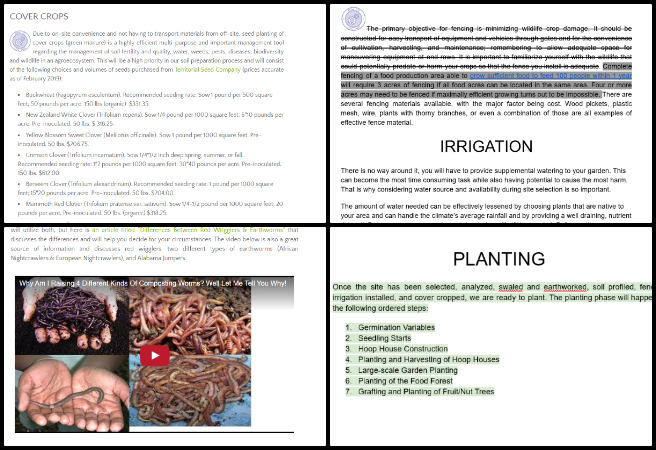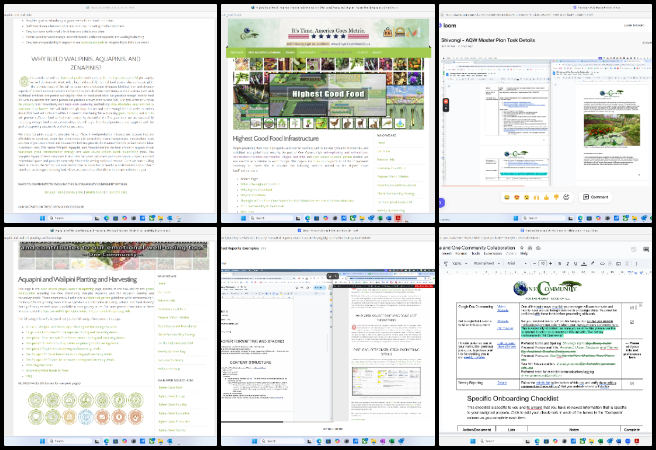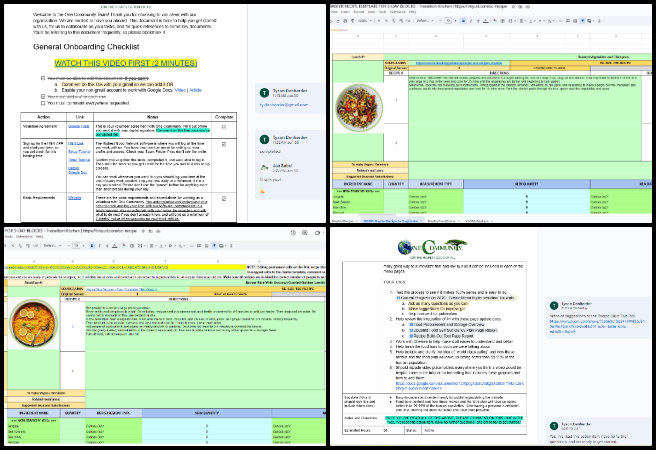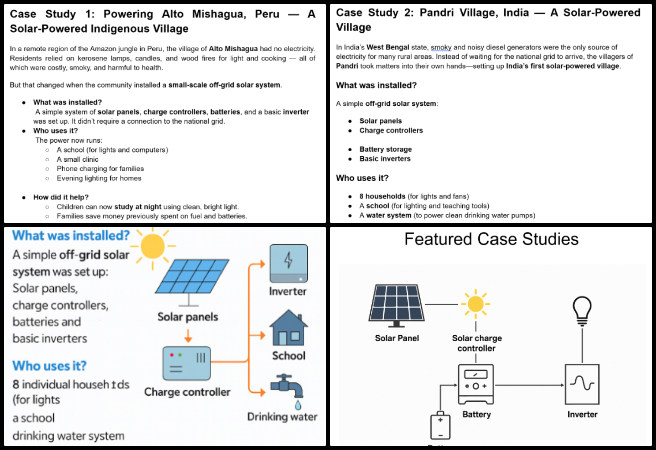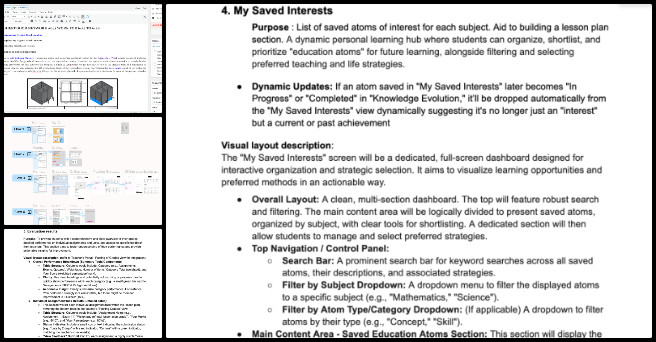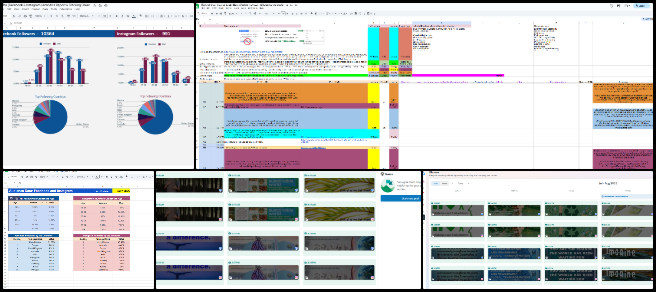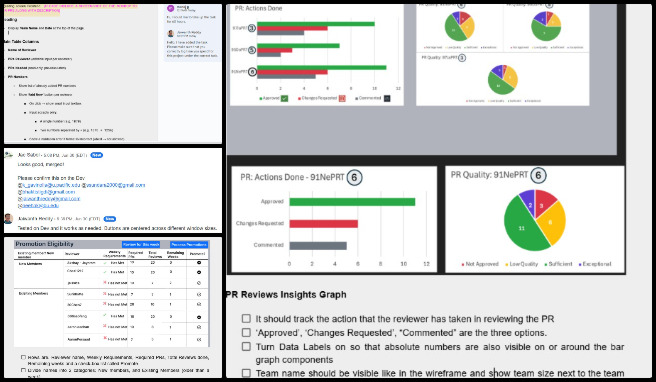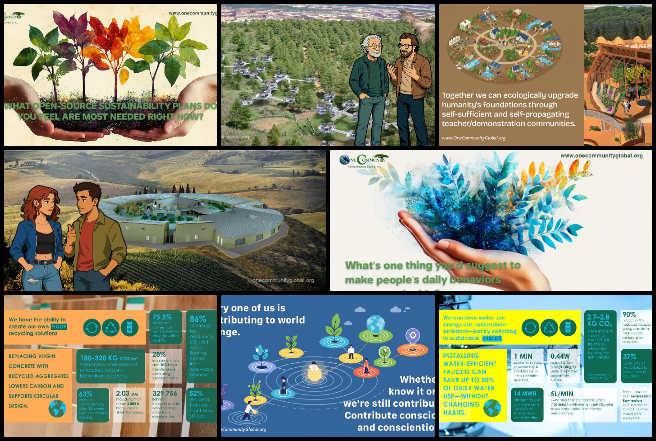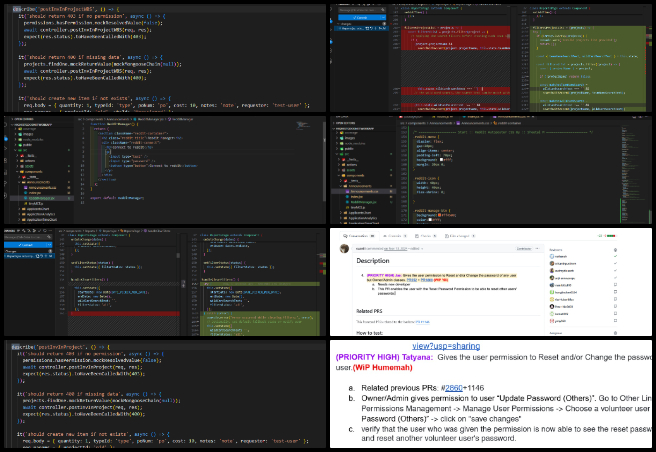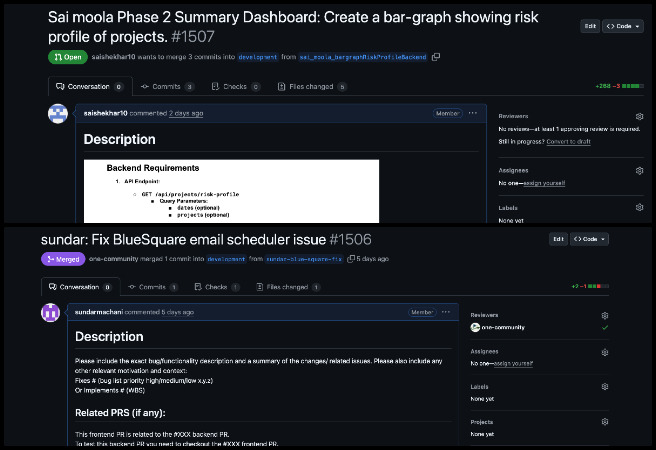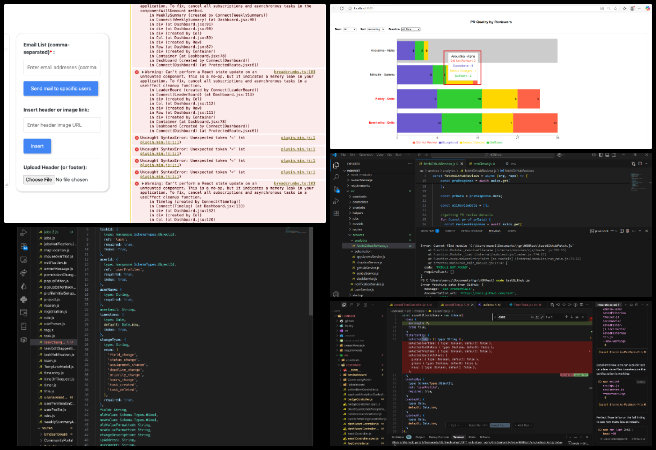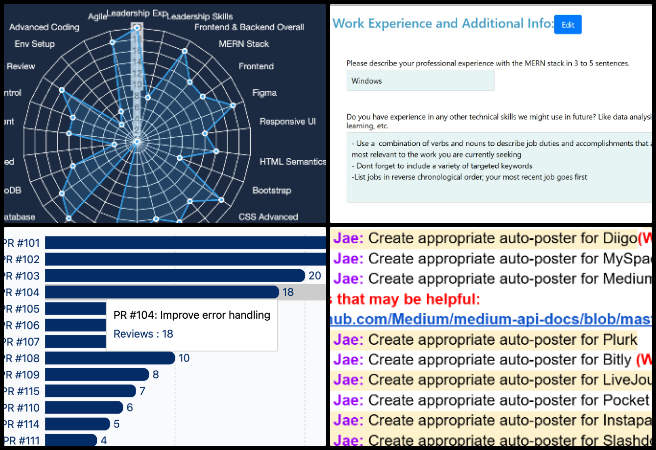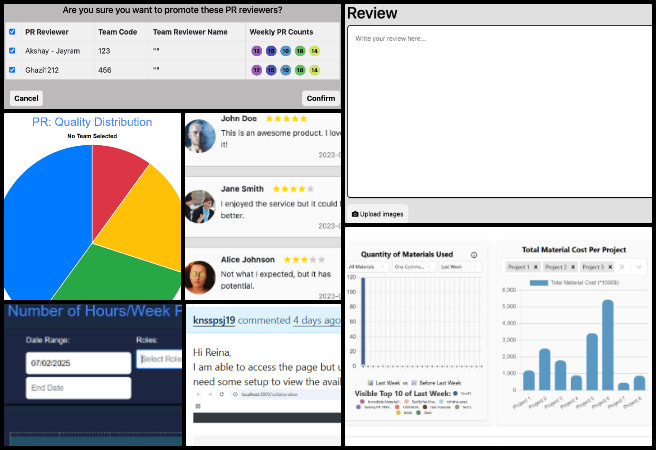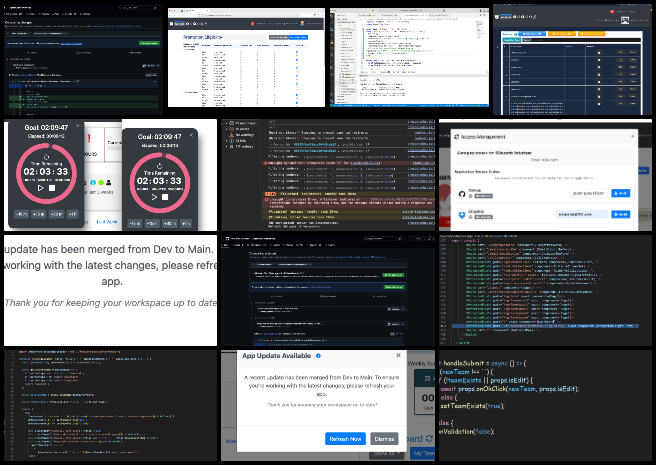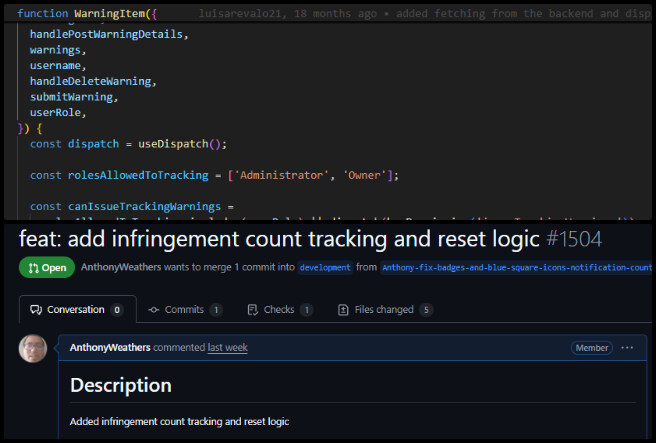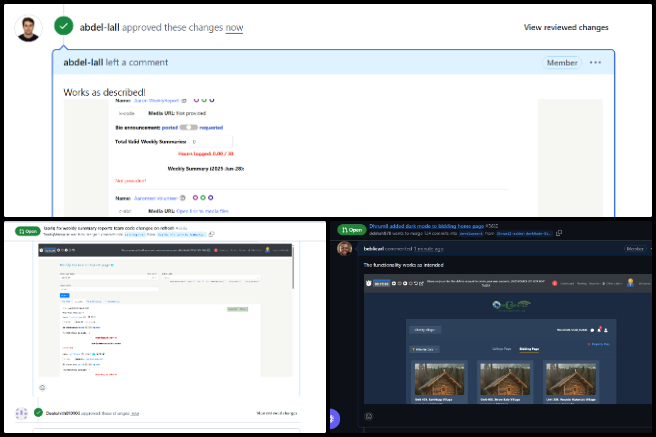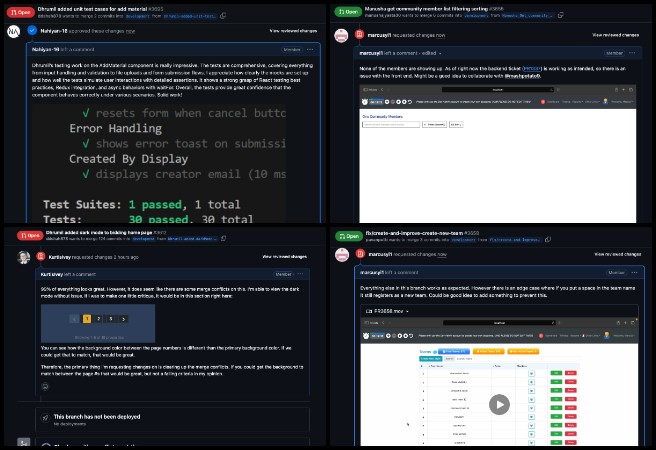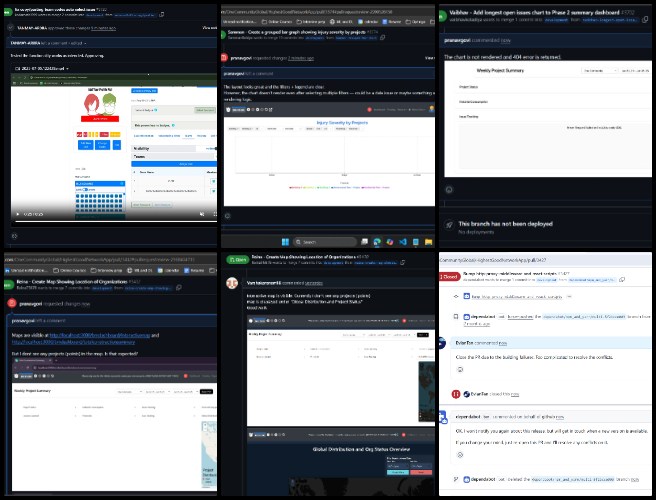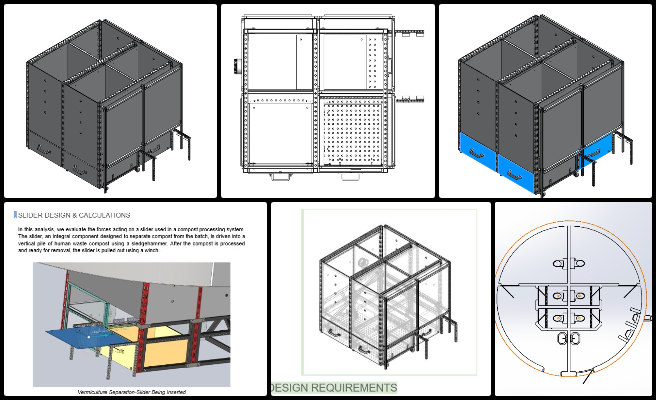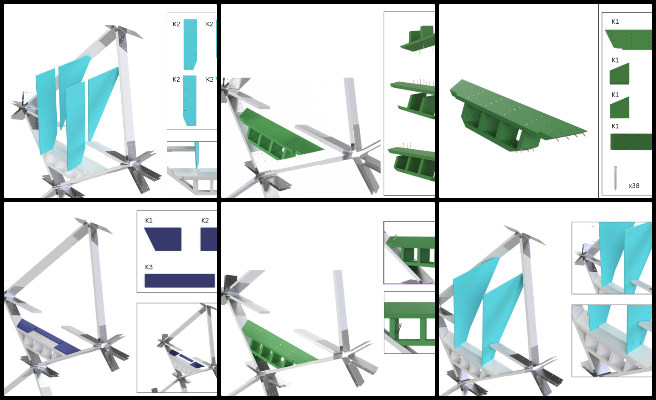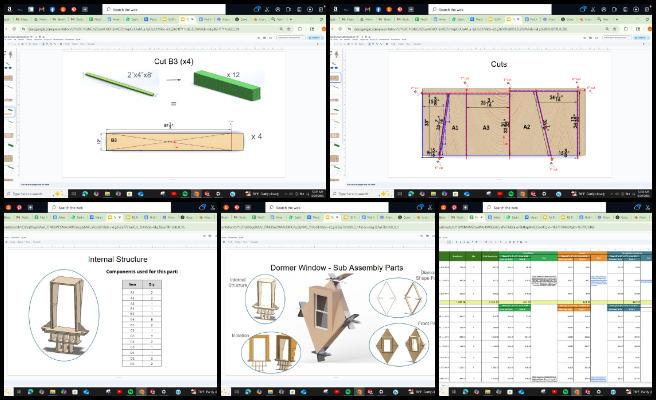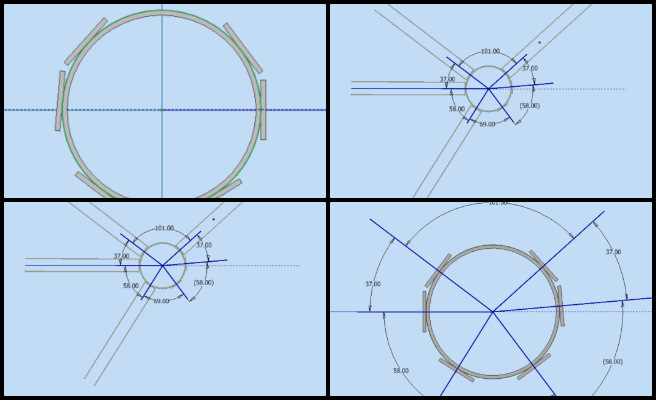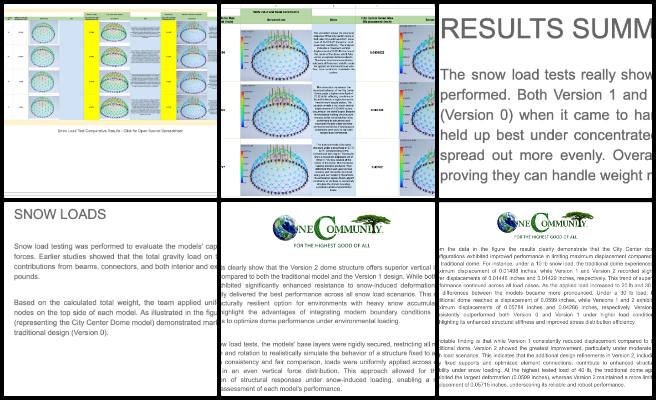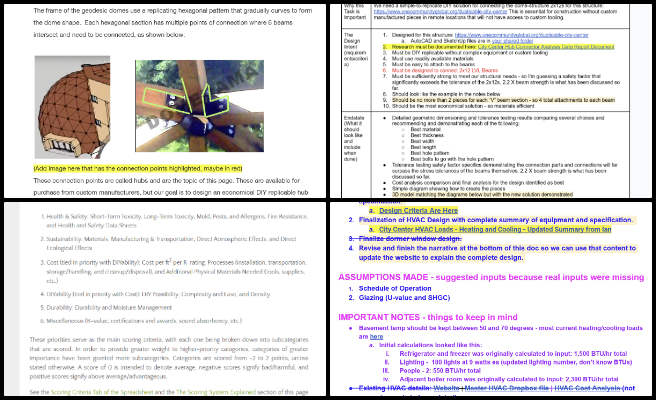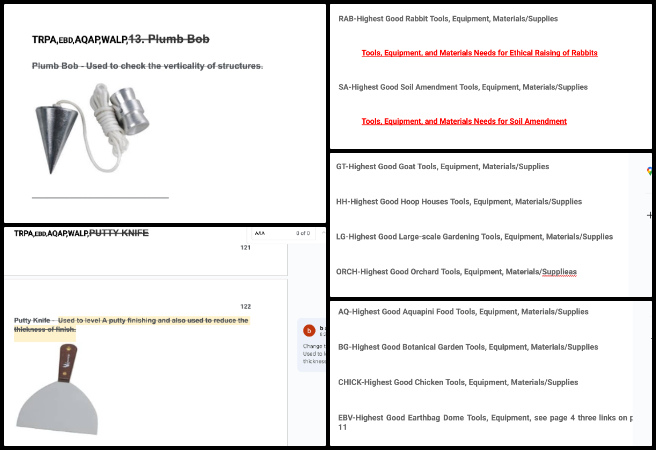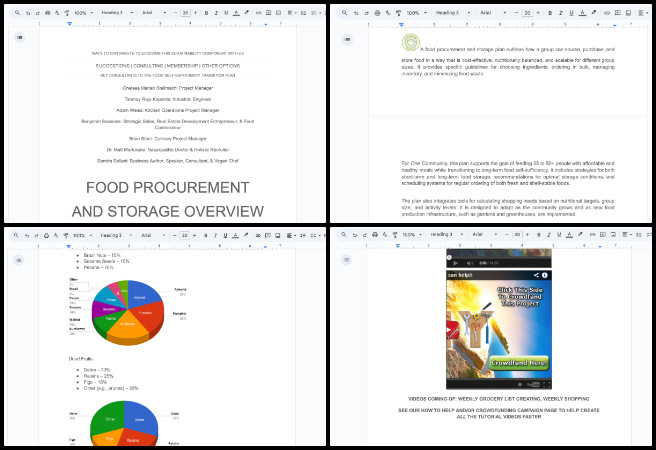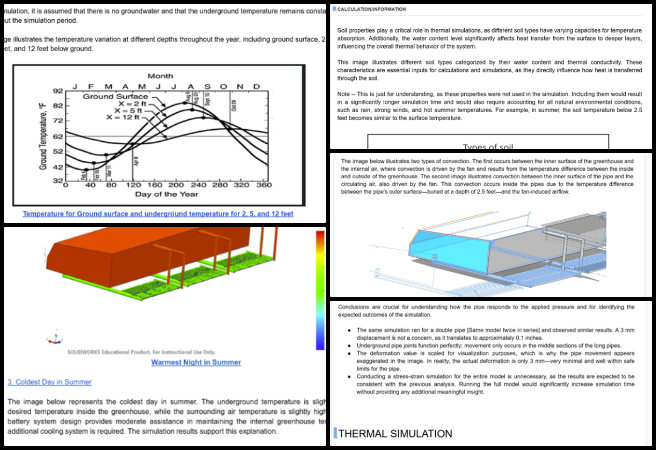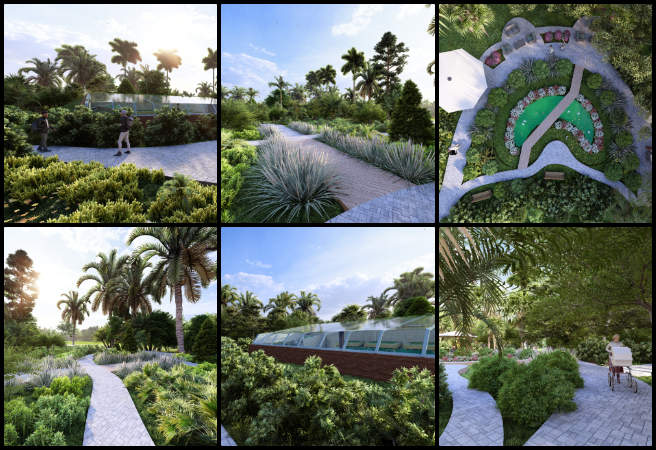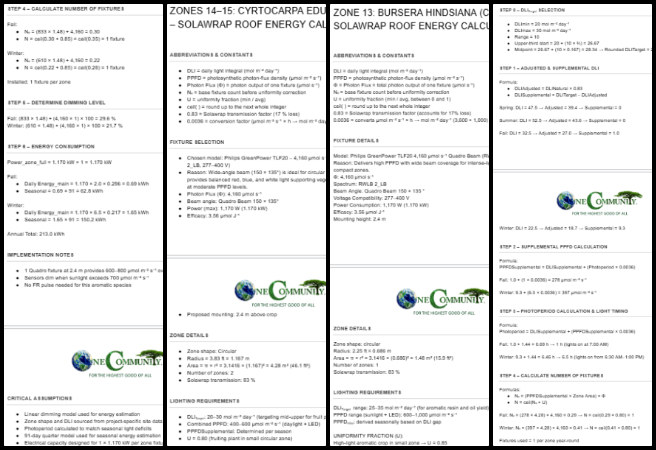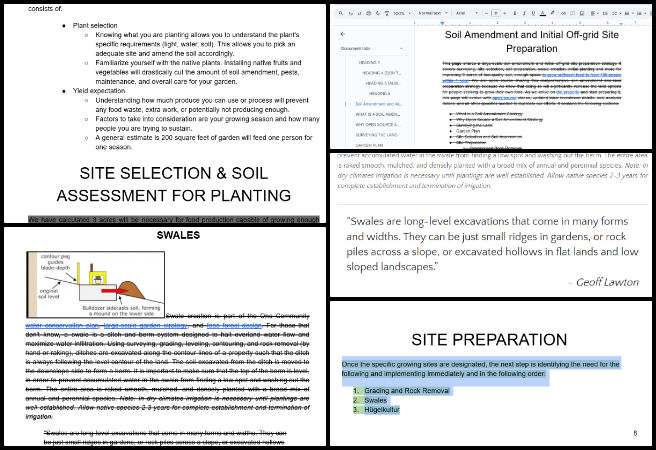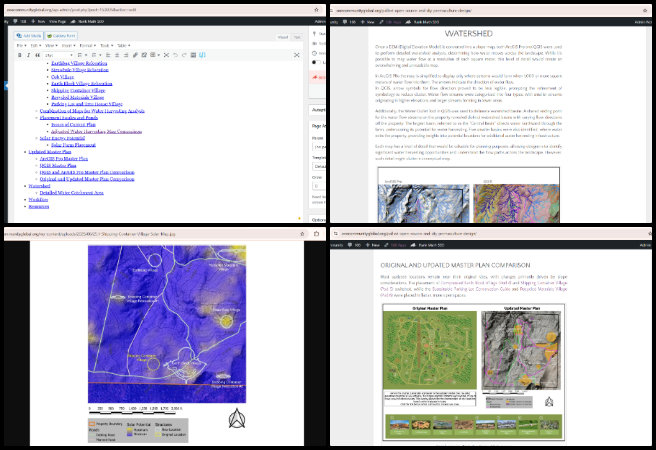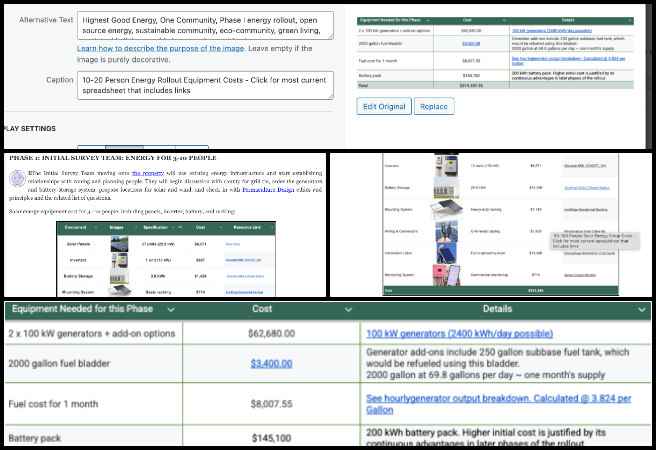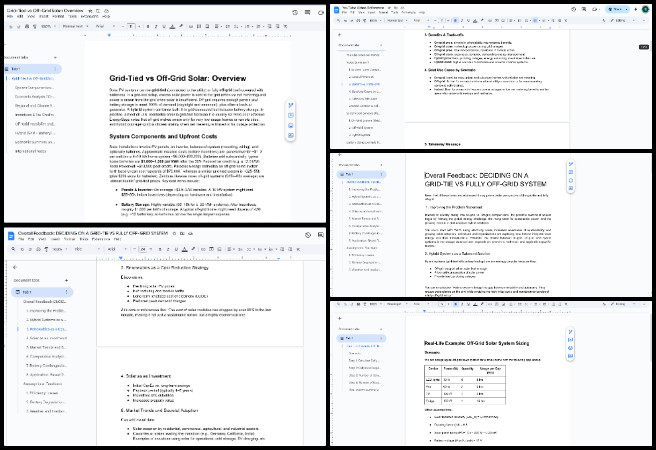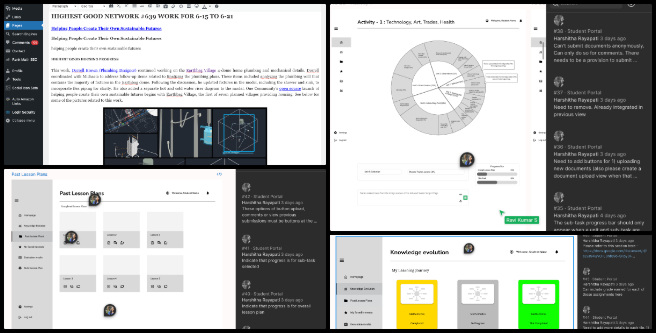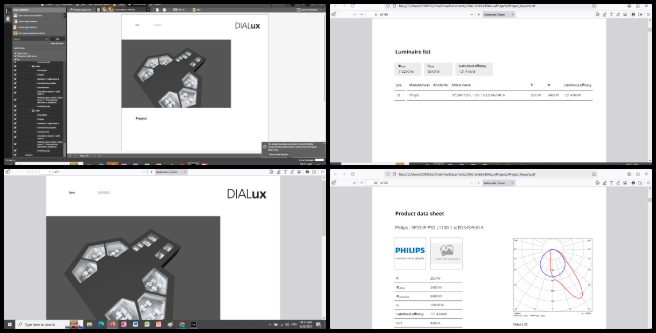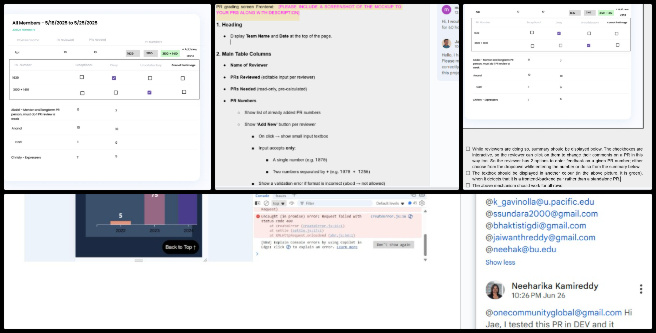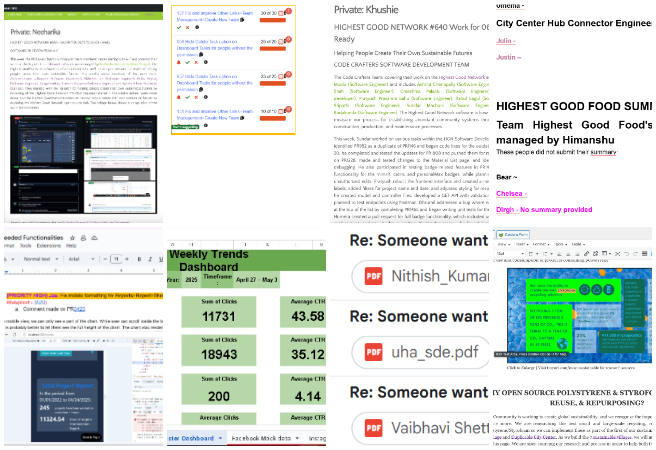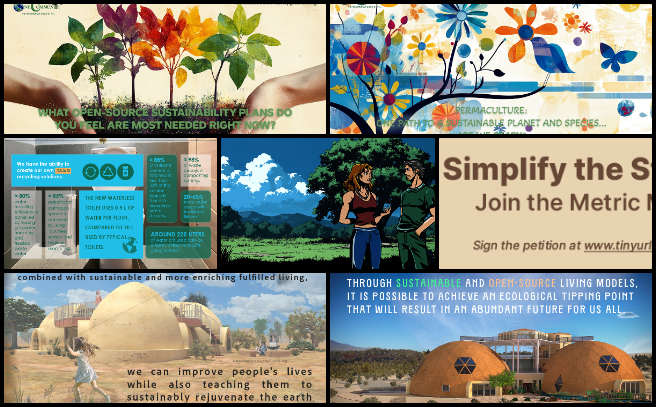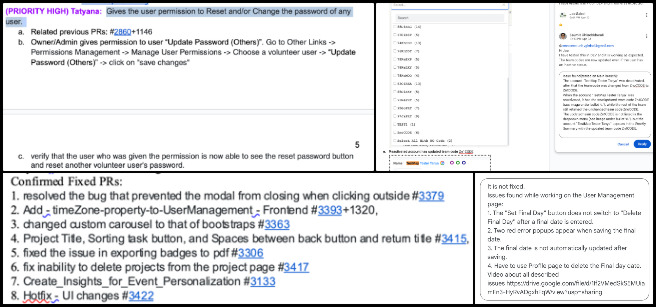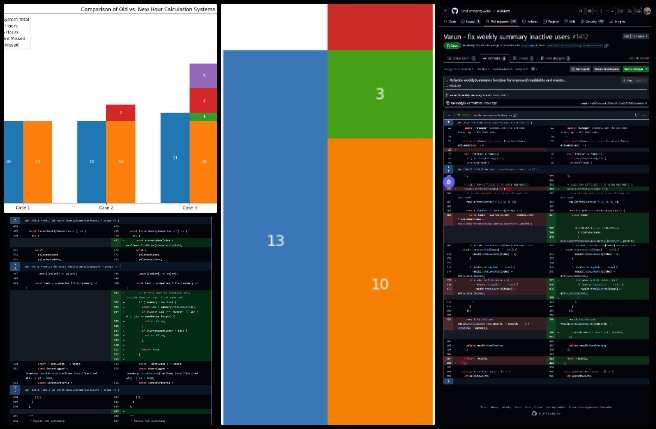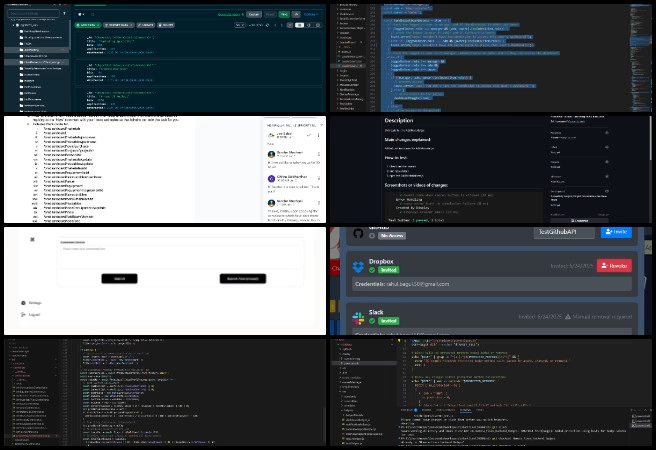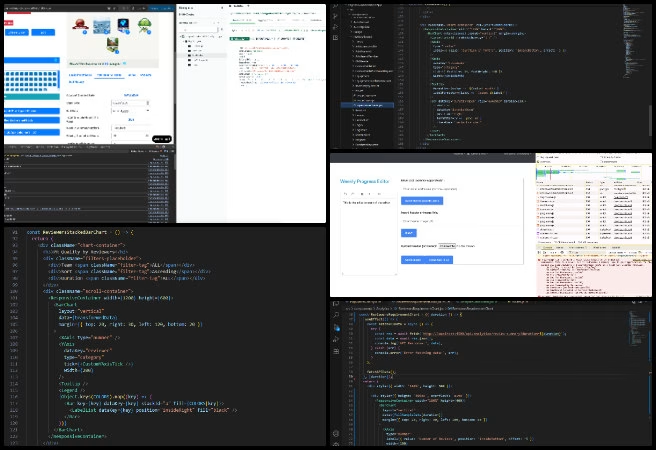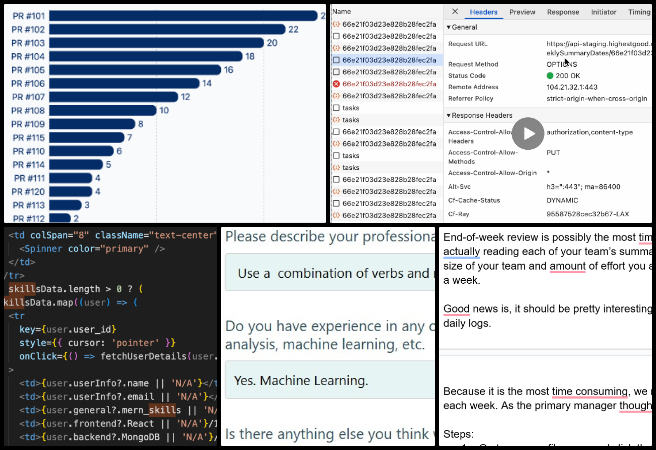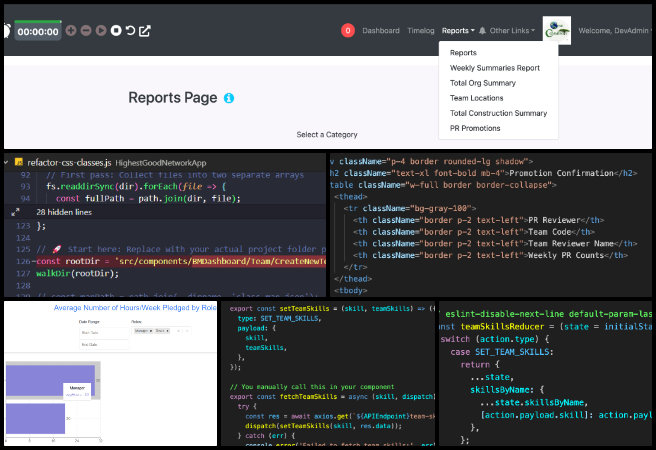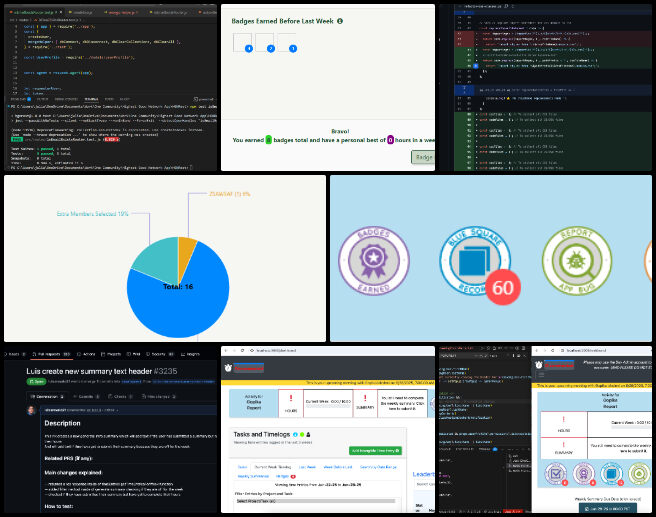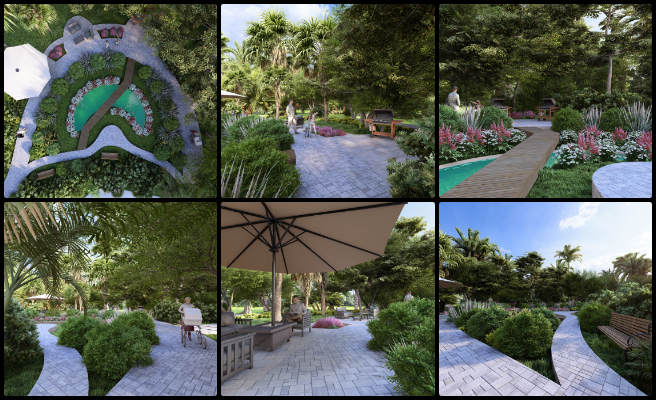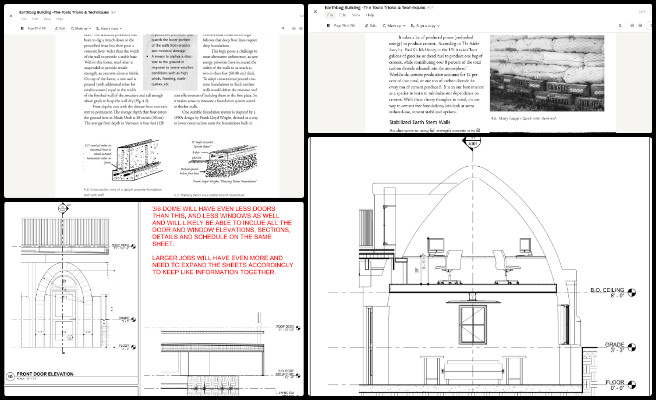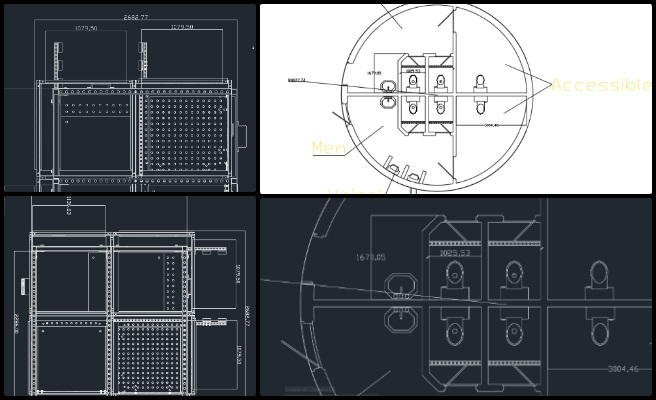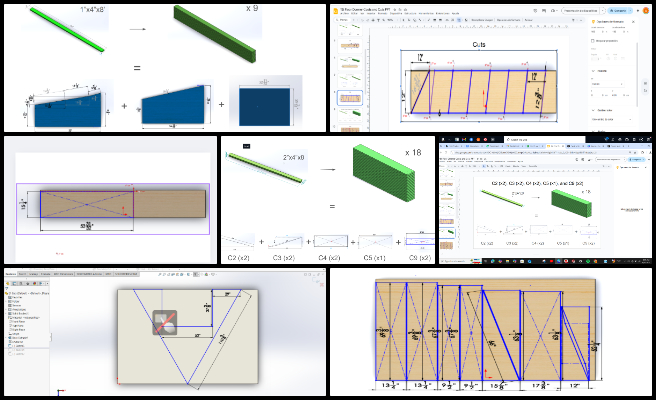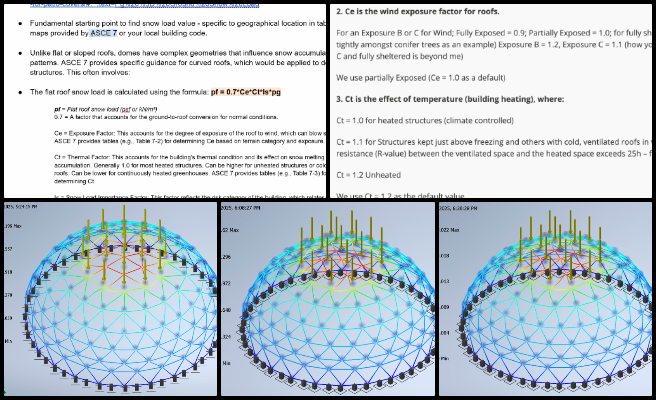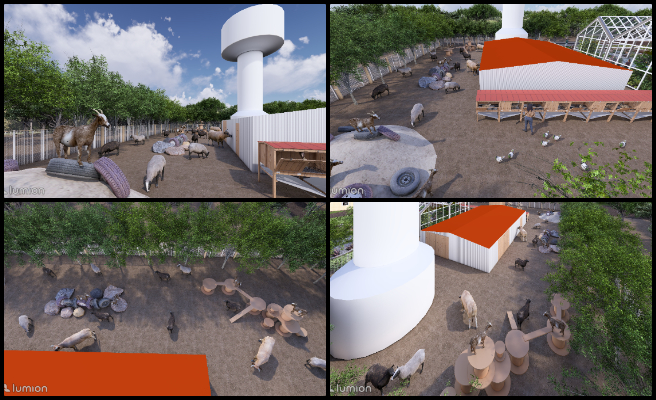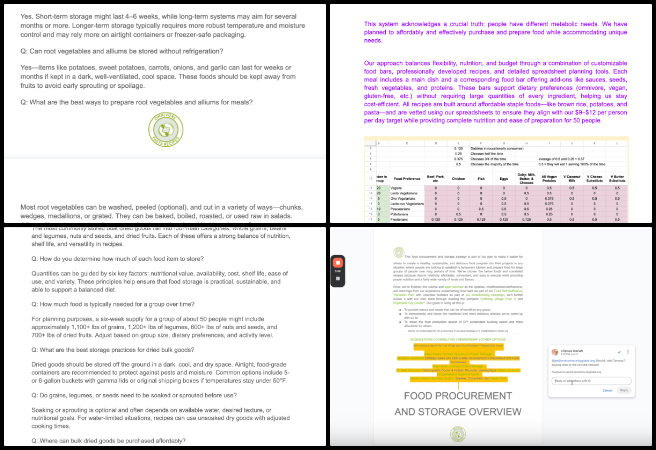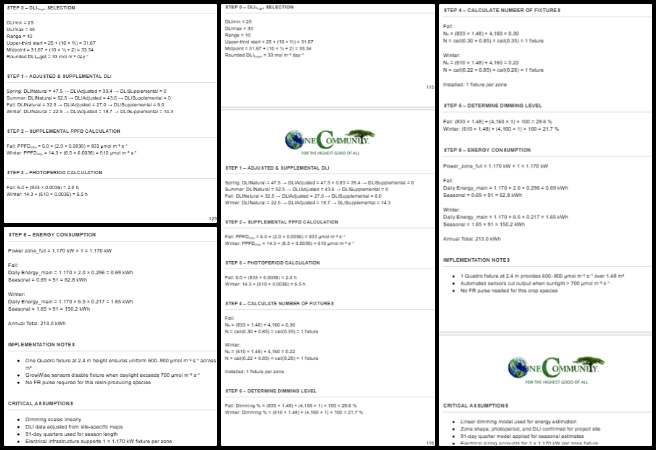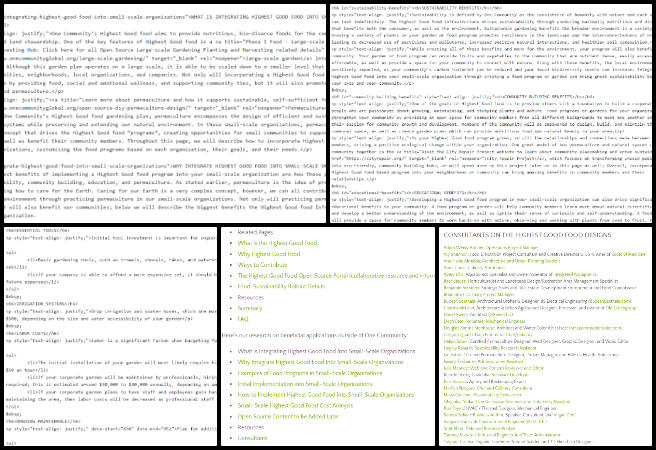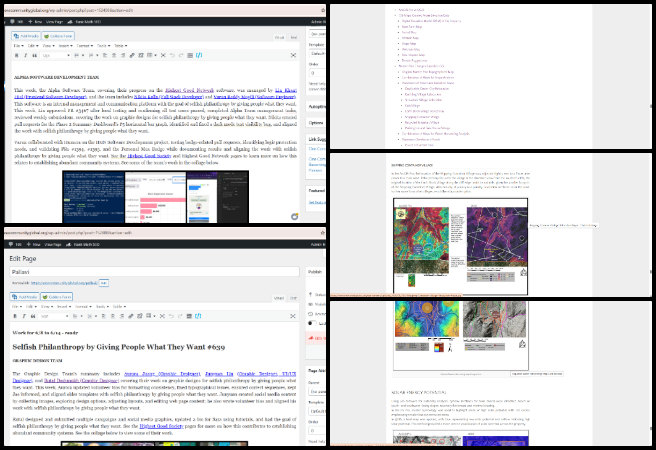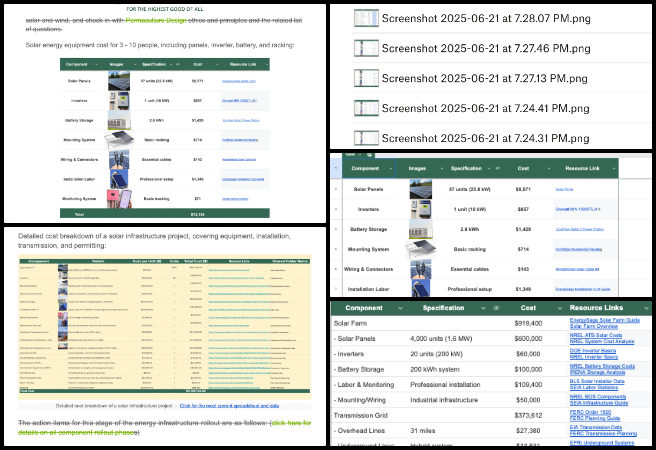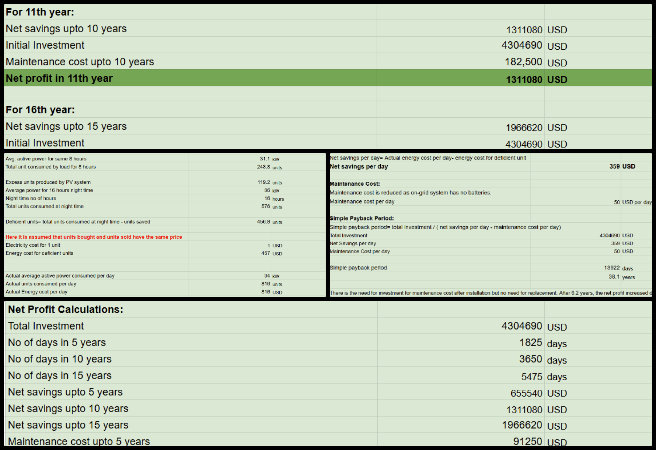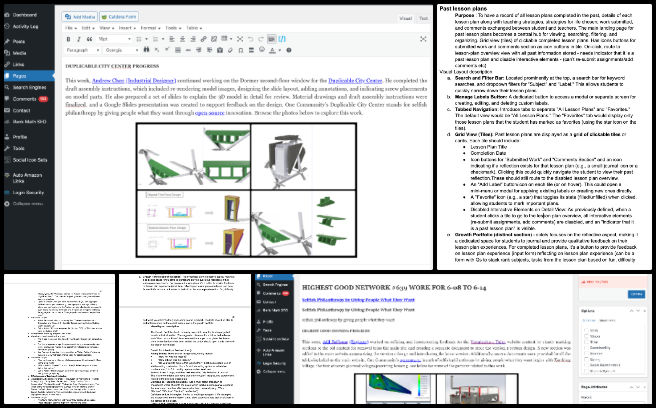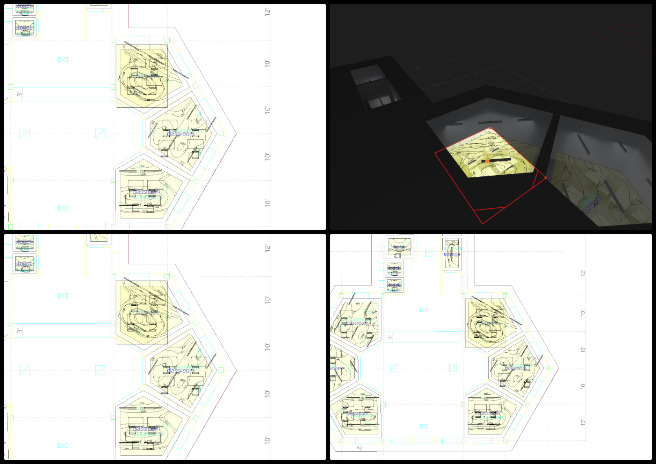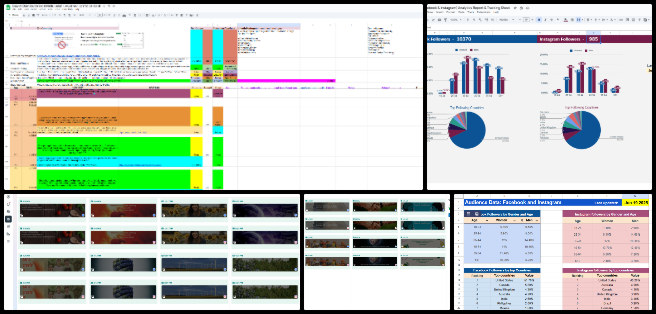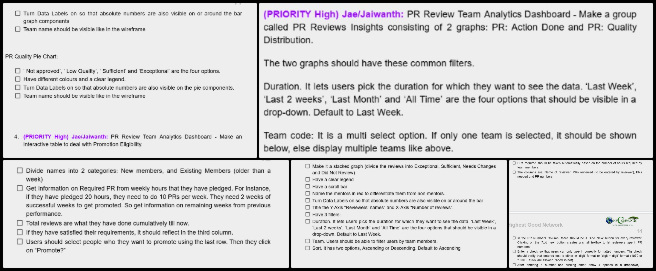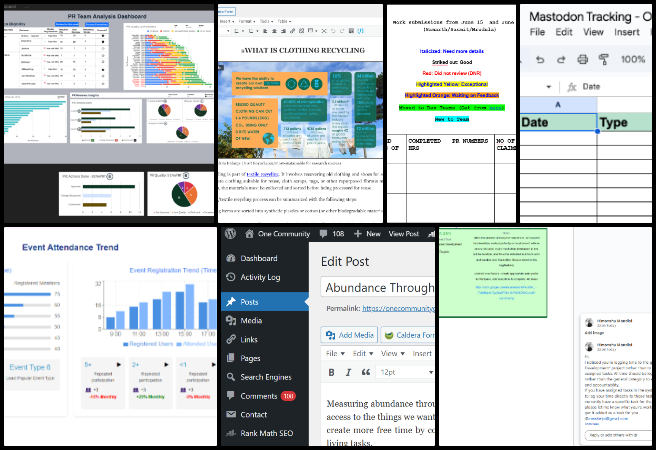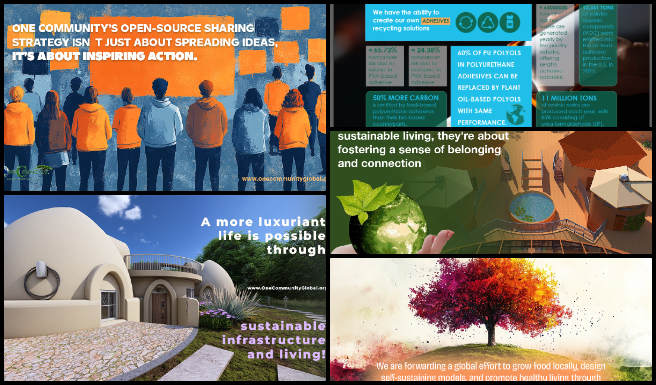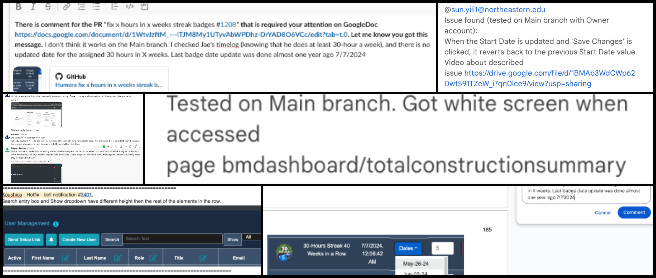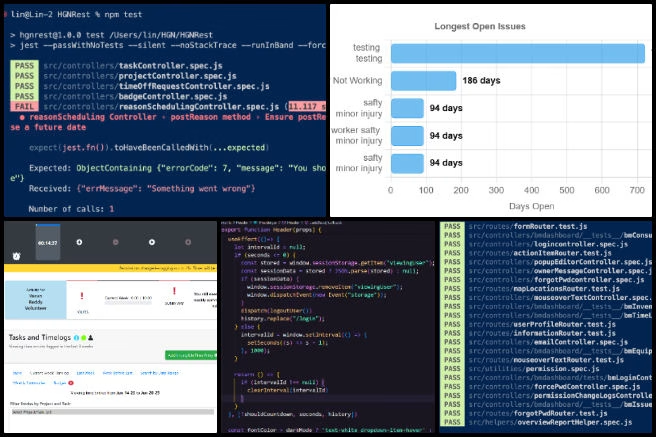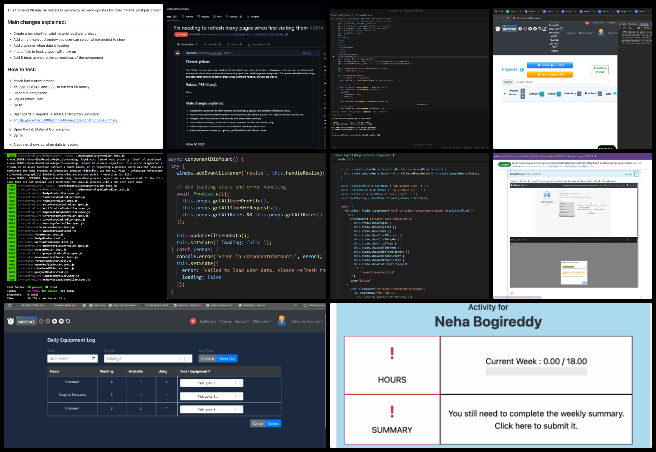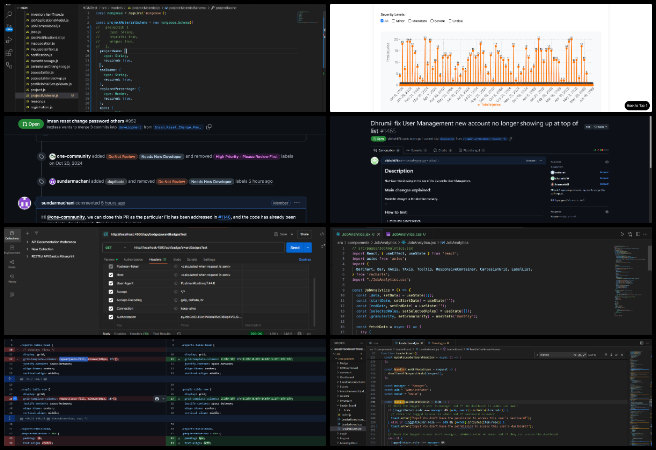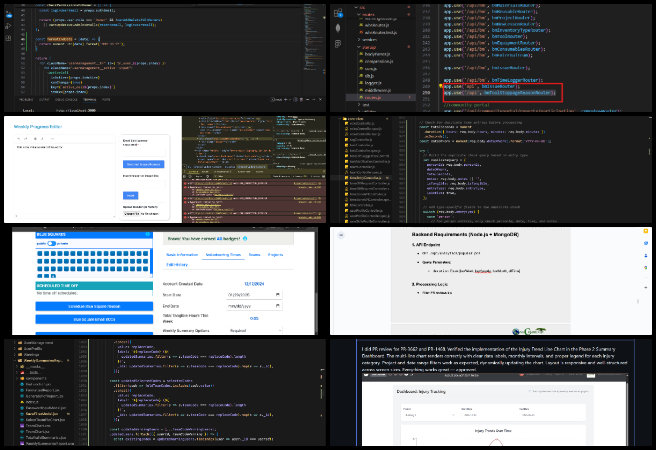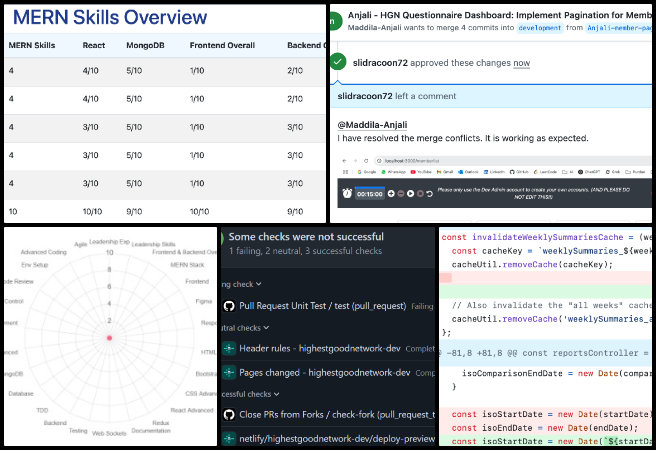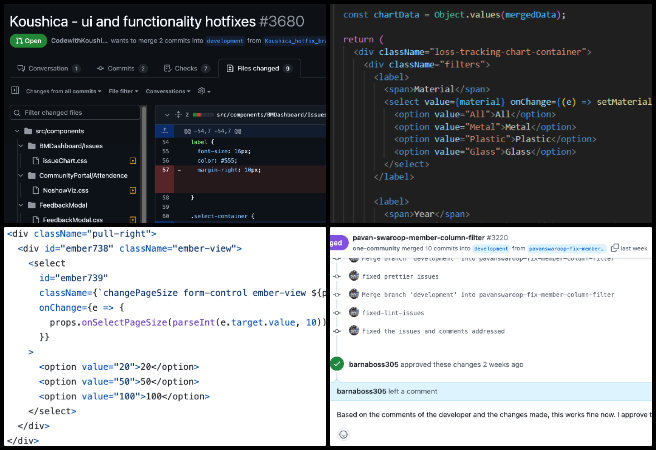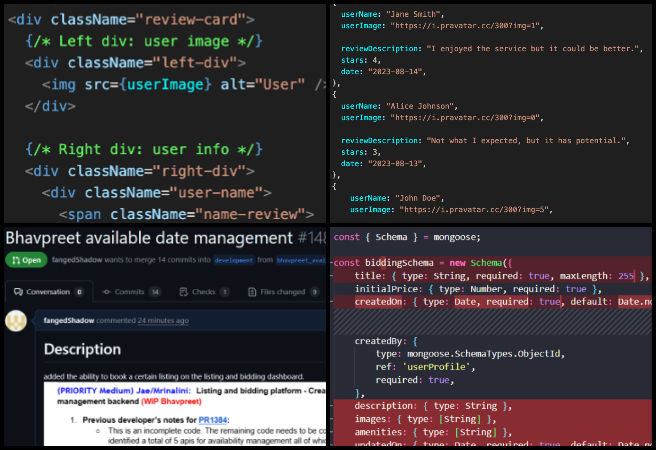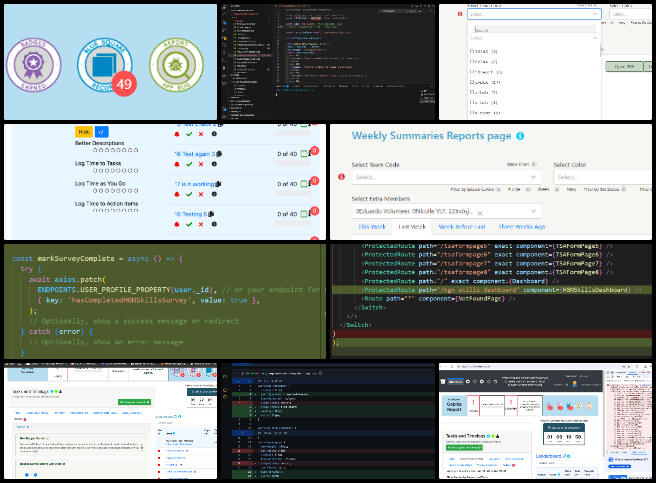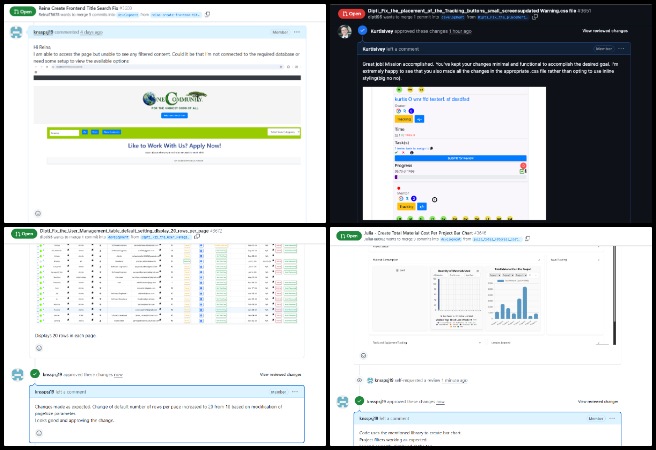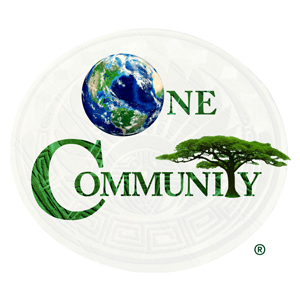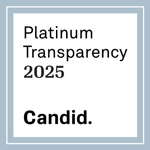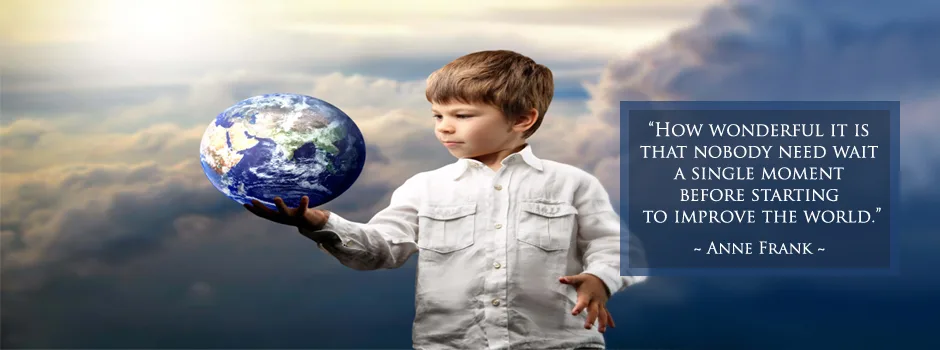
One Community Welcomes Vamshi Gutha to the Software Development Team!
Posted on July 16, 2025 by One Community Hs
One Community welcomes Vamshi Gutha to the Software Team as our newest Volunteer/Consultant!
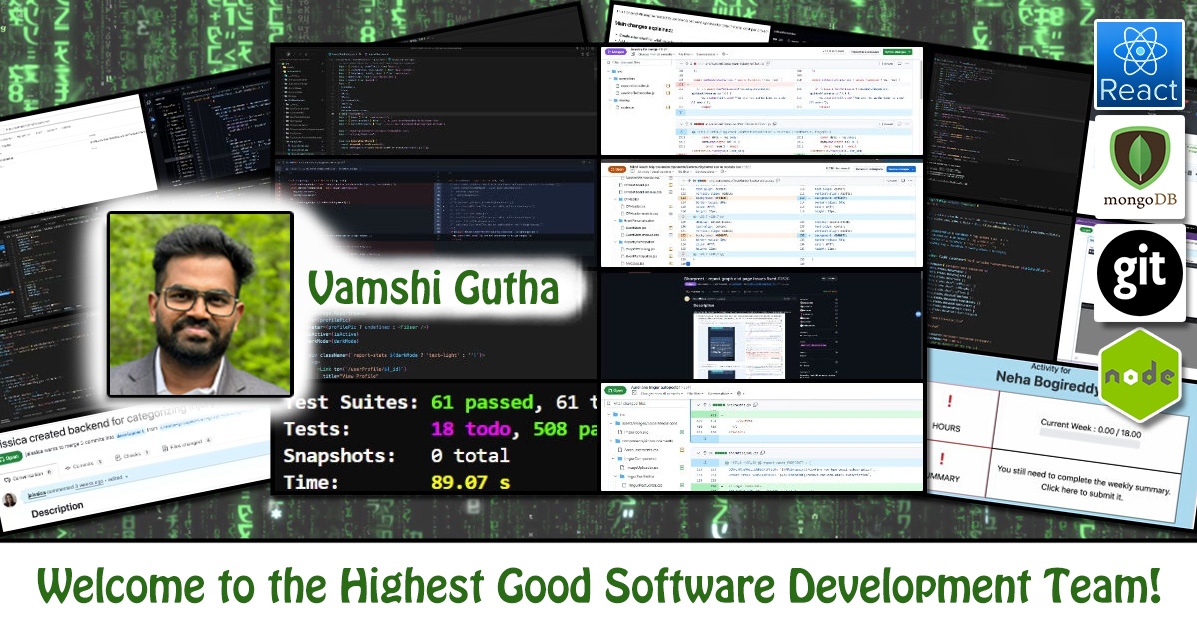
Vamshi is a passionate software developer with experience in building scalable and user-friendly applications using technologies such as Node.js, React.js, Salesforce (Apex, LWC), and RESTful APIs. With a background in both frontend and backend development, he has worked across diverse tech stacks to develop solutions that integrate efficiency with thoughtful UI/UX design. His approach emphasizes writing clean, maintainable code and creating intuitive experiences that support long-term sustainability and usability. As part of his professional journey, he has also collaborated on cross-functional teams, ensuring seamless delivery of tech solutions aligned with organizational goals. As a member of the Software Team for One Community, Vamshi contributes to building backend APIs and frontend components for the Highest Good Network’s Phase 2 Summary Dashboard, supporting real-time injury trend analysis and interactive chart updates.
WELCOME TO THE TEAM VAMSHI!
FOLLOW ONE COMMUNITY’S PROGRESS (click icons for our pages)
INVESTOR PAGES
GET INVOLVED
Sustainable Future Building – One Community Weekly Progress Update #643
Posted on July 14, 2025 by One Community Hs
At One Community, we are advancing sustainable future building by creating and open sourcing comprehensive solutions for food, energy, housing, education, economics, social architecture, fulfilled living, global stewardship practices, and more. Developed by our all-volunteer team, everything we produce is free-shared to support a global network of teacher/demonstration hubs working together for The Highest Good of All. By evolving sustainability into something self-replicating and accessible to everyone, we’re helping regenerate our planet and create a world that works for all.
- Here’s our project overview
- Here’s our world-change methodology
- Here’s how this becomes self-replicating
- Here’s how we are open source and free-sharing all the do-it-yourself designs
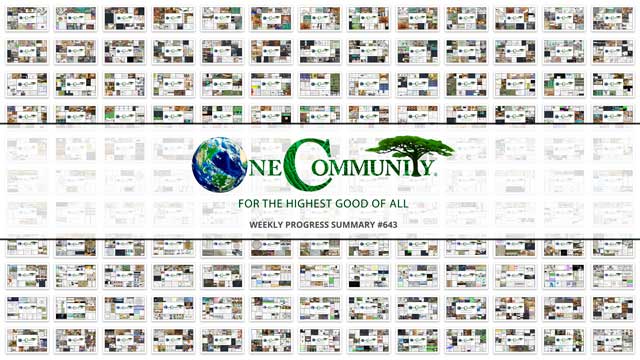
OUR MAIN OPEN SOURCE HUBS
Click on each icon to be taken to the corresponding Highest Good hub page.
One Community’s physical location will forward this movement as the first of many self-replicating teacher/demonstration communities, villages, and cities to be built around the world. This is the July 14th, 2025 edition (#643) of our weekly progress update detailing our team’s development and accomplishments:
Sustainable Future Building
One Community Progress Update #643
DONATE | COLLABORATE | HELP WITH LARGE-SCALE FUNDING
CLICK HERE IF YOU’D LIKE TO RECEIVE AN EMAIL EACH WEEK WHEN WE RELEASE A NEW UPDATE
YOU CAN ALSO JOIN US THROUGH SOCIAL MEDIA
ONE COMMUNITY WEEKLY UPDATE DETAILS
HIGHEST GOOD HOUSING PROGRESS
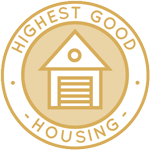 One Community is advancing sustainable future building through Highest Good housing that is artistic and beautiful, more affordable, more space efficient, lasts longer, DIY buildable, and constructed with healthy and sustainable materials:
One Community is advancing sustainable future building through Highest Good housing that is artistic and beautiful, more affordable, more space efficient, lasts longer, DIY buildable, and constructed with healthy and sustainable materials:
- Learn about: Our Upcoming Crowdfunding Campaign
- Learn about the different village models: 7 Sustainable Village Models
- Visit the open source portals for the first two: Earthbag Village OS Hub | Straw Bale Village OS Hub
This week, Derrell Brown (Plumbing Designer) continued working on the Earthbag Village 4-dome home plumbing and mechanical details. He coordinated with Michaela to address follow-up items related to finalizing the plumbing plans, including analyzing the plumbing isometrics and enlarged floor plans. Following the discussion, he updated the plans based on received comments, added a separate sheet to include isometric views with details, and corrected minor plotting errors. He then plotted a color set for the architect to review. One Community’s open source launching of sustainable future building begins with Earthbag Village, the first of seven planned villages providing housing. See below for some of the pictures related to this work.
Karthik Pillai (Mechanical Engineer) continued working on the ongoing report for the Earthbag Village 4-dome cluster roof design, with a focus on material details needed to improve the accuracy of the live load calculations. This week he worked on updating the project report and re-running structural analyses to include quantitative data. For the Vermiculture Toilet project, he modified the drawer design and continued work on the associated report. Karthik also focused on adjusting the waste dumping mechanism and is aiming to complete the modifications within the estimated project hours. As the first of seven planned villages, the Earthbag Village provides the initial housing within One Community’s open source designs for sustainable future building. See the work in the collage below.
Ketsia Kayembe (Civil Engineer) worked on the windows and doors details drawings for the three-dome structure of the Earthbag Village. She received feedback from Rumi and edited the files accordingly. Ketsia also began working on the excavation drawings by gathering the necessary information to edit the files in AutoCAD and bring them to a construction-ready level while following the standards. One Community’s open source framework of sustainable future building begins with Earthbag Village, the first of seven planned villages providing housing. See below for some of the pictures related to this work.
Michaela Silva (Architect) continued working on finalizing the interior of the Earthbag Village. She gathered the weights of the XPS tapered insulation, cover board, 2×4 framing, and composite decking in the roof assembly and calculated their areas and total weights. She also updated the pedestals and framing to a 16-inch by 16-inch on center grid to align with the maximum joist spacing allowed for composite decking. The Earthbag Village is the first of seven villages to be built as part of One Community’s open source model for sustainable future building. See her work in the collage below.
Rumi Shah (Civil Engineer) continued working on the Earthbag Village. This week she focused on building the action list for the Google Doc by creating clear, step-by-step instructions and attaching relevant links to support clarity and understanding. Rumi also reviewed Ketsia’s work for accuracy and completeness, followed by providing feedback to address any issues and improve the overall quality. One Community’s open source resources for sustainable future building begins with the Earthbag Village, the first of seven planned villages providing housing. See below for some of the pictures related to this work.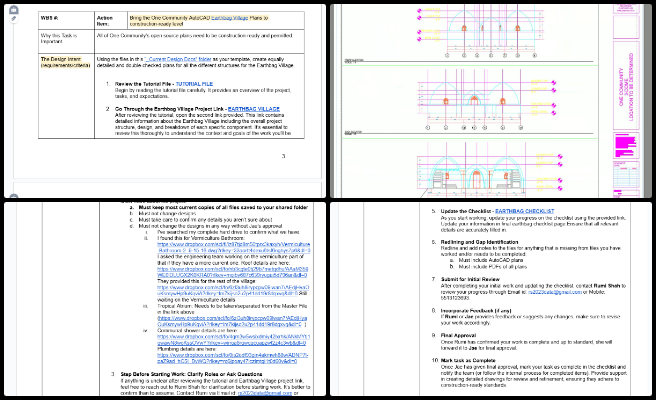
DUPLICABLE CITY CENTER PROGRESS
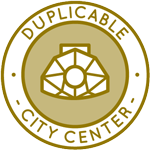 One Community is advancing sustainable future building through a Duplicable and Sustainable City Center that is LEED Platinum certified/Sustainable, can feed 200 people at a time, provide laundry for over 300 people, is beautiful, spacious, and saves resources, money, and space:
One Community is advancing sustainable future building through a Duplicable and Sustainable City Center that is LEED Platinum certified/Sustainable, can feed 200 people at a time, provide laundry for over 300 people, is beautiful, spacious, and saves resources, money, and space:
- Learn about this building and it’s function: Duplicable City Center Open Source Hub
This week, Andrew Chen (Industrial Designer) continued work on the Dormer second-floor window for the Duplicable City Center, contributing to the larger goal of sustainable future building. He incorporated new feedback from Jae and discussed material updates with Ariana. His research focused on identifying alternative wood material boards that are wide and strong enough without requiring gluing—supporting more efficient and eco-conscious construction methods central to sustainable future building. Andrew also explored kerf width to calculate the necessary gap between parts for cutting sheets and applied Jae’s feedback by updating material drawings with more accurate fractional units and reworking the instruction manual. Browse the visuals below.
Ariana V. Gutierrez Doria Medina (Industrial Designer) focused on redrawing parts to eliminate the use of glue and minimize the number of cuts efforts aligned with the principles of sustainable future building. To support this goal, some components were merged and complex shapes were intentionally avoided. Additional research was conducted on lumber and plywood options to enhance construction efficiency without compromising structural integrity or previously established measurements, further contributing to sustainable future building practices. Check out the photos below.
Ayushman Dutta (Mechanical Engineer) continued working on reviewing pipe materials for the Duplicable City Center hub connector design, and analyzed the hub connector to identify the lowest angles across all rows efforts that directly support the goals of sustainable future building. He examined the tolerance implications of changing the connector pipe diameter, testing various configurations including 8-inch and 10-inch pipe options. After careful evaluation, Ayushman and the design team determined that a 10-inch pipe would best meet the structural and performance requirements. He also explored different bolting options and identified the appropriate bolt and hole diameter specifications needed for the design. His analysis aimed to optimize performance while considering material availability and structural integrity key factors in advancing sustainable future building through efficient and scalable design practices. Browse the photos below to explore this work.
Lokesh Keshav Mali (Mechanical Engineer) continued focusing on developing the rain- and grey-water system layout for the Duplicable City Center, contributing to the broader mission of sustainable future building. He met with Mihir to clarify catchment zone details, then refined the SketchUp model by adjusting pipe routing, downspout tie-ins, and preliminary trench layouts. He also reviewed previous design references and researched grey-water pond sizing, trench infiltration methods, and first-flush diverter options—critical elements in creating water-efficient systems aligned with sustainable future building goals. The CAD updates reflect this research and are helping shape the final layout. Browse the photos below to explore this work.
Nupur Shah (Mechanical Engineer) continued reworking the Duplicable City Center hub connector Row 2 assembly with new team members and guided them through the ongoing tasks to help them get aligned with the project goals. She also worked on rebuilding the Row 2 components to address previous inconsistencies and ensure alignment with updated design requirements—an essential step in advancing sustainable future building. In addition to the CAD work, she organized and cleaned the main project spreadsheet to improve clarity and usability. A separate, dedicated sheet was created specifically for Row 2 to isolate its details, enabling easier tracking of part names, dimensions, and corresponding angles. These updates were implemented to streamline future revisions and reduce confusion when navigating the larger dataset. The revised spreadsheet layout now serves as a clearer reference for both design work and team collaboration, supporting the efficiency and accuracy needed for sustainable future building initiatives. Check out the photos below.
Sandesh Kumawat (Mechanical Engineer) continued working on the City Center Natural Pool and Eco-spa Designs. This week he developed a new folding mechanism in response to managerial feedback that the previous iteration could result in excessive losses. In support of sustainable future building, he implemented a simplified design where two plates are connected by a pair of rigid arms, and a timing belt drives one plate to slide over the other—reducing part count and streamlining assembly compared to earlier slot-based and four-bar configurations. Sandesh also proposed integrating a torsion spring at the hinge to automatically return the plates to their closed position once belt tension is released. Supporting CAD screenshots and motion study frames have been uploaded to the shared Dropbox folder to aid in ongoing sustainable future building design reviews. Browse the visuals below.
Srujan Pandya (Mechanical Engineer) continued helping with the Duplicable City Center FEA analysis. He reviewed Shu’s feedback and extracted key points to prepare for an upcoming discussion with Dipak regarding the potential need for re-analyzing the snow load data—an important consideration in sustainable future building. He updated and reformatted the Snow Loads section to align with review standards and edited for clarity and structure. While reviewing the Version 1 set, he identified missing gravity load data, began addressing the gaps where possible, and documented areas requiring further input. Additionally, Srujan finalized the Manufacturing Process section and confirmed that both the Snow Loads and Manufacturing Process content are ready for internal review, contributing to the accuracy and reliability essential for sustainable future building initiatives. The photos can be found below for your reference.
Vineela Reddy Pippera Badguna (Mechanical Engineer) continued working on conducted in-depth research on the Duplicable City Center greywater reuse systems as part of ongoing efforts to support sustainable future building. This week she examined common household sources such as washing machines, sinks, and showers, and reviewed products labeled as greywater-friendly. Her research included the use of greywater for plant irrigation, assessment of typical plant water requirements, and the integration of greywater-supportive features in new construction—all critical elements of sustainable future building. Vineela also studied percolation tests to evaluate soil infiltration, explored the role of constructed wetlands in filtering sediment and pollutants, and reviewed plumbing systems related to greywater, including sewer lines, ventilation pipes, grease interceptors, and septic tanks. To further her understanding of drainage layouts and applicable standards, she analyzed various greywater system designs through educational videos, covering Laundry-to-Landscape configurations, gravity-flow branched drains, pumped systems, commercial applications, and whole-house solutions. Additionally, she reviewed a DIY greywater system guide to understand the essential components of greywater collection, filtration, storage, and distribution. Have a look at the images below.
Yan “Jenni” Zu (Architectural Designer) adjusted the arrangement and variety of animals in the animal area to create a more natural and engaging environment aligned with the principles of sustainable future building. She repositioned the animals to improve their interaction with the landscape and enhance the realism of the scene. In addition, she optimized various details throughout the animal area, including the placement of plants, the texture of materials, and the alignment of small landscape elements. These refinements contributed to a more cohesive and visually appealing design. By focusing on both the animals and the surrounding elements, Jenni strengthened the overall atmosphere of the space and supported the broader goals of sustainable future building through thoughtful and immersive environmental design. See the photos below for more details.
HIGHEST GOOD FOOD PROGRESS
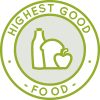 One Community is advancing sustainable future building through Highest Good food that is more diverse, more nutritious, locally grown and sustainable, and part of our open source botanical garden model to support and share bio-diversity:
One Community is advancing sustainable future building through Highest Good food that is more diverse, more nutritious, locally grown and sustainable, and part of our open source botanical garden model to support and share bio-diversity:
- Learn about the structures: Hoop House Hub | Aquapini & Walipini Open Source Hub
- See what we’ll be growing: Gardens & Hoop Houses | Large-scale Structures | Food Forest | TA
This week, the core team completed adding photos to the Master Tools, Equipment, and Materials/Supplies document. They continued reviewing and provided changes and comments on the Master Tools, Equipment, Materials/Supplies document. This included updating comments from “O” to “ORCH” and “SLAM” to “SA”, and specifically changing “AW” to AQ, WA to correct previous unapplied modifications. They also advised that the “F” and “FD” designations should be eliminated from the website, as the content of the former Food document has been fully incorporated into numerous sections and specific projects within the Master Tools, Equipment, Materials/Supplies document. The Highest Good Food initiative is a key component of One Community’s open source plans, focused on sustainable future building, and exemplifies the organization’s commitment through innovative design and implementation. Below are some of the images showcasing this work.
Chelsea Mariah Stellmach (Project Manager) continued her work on the Transition Food Self-sufficiency Plan menus and customization spreadsheets. She revised all of her reports based on feedback from Jae and Tyson. She contacted Shireen to discuss creating graphics for one of the reports and followed up with Tyson to better understand his feedback on her tutorials. Chelsea also rewrote the bulk goods section in one of the reports. As an essential aspect of One Community’s open source goals, the Highest Good Food initiative supports sustainable future building as a foundation for sustainable living. Below are some of the images showcasing this work.
Dirgh Patel (Volunteer Mechanical Engineer) continued assisting with the Climate Battery design evolutions. He worked on calculating heat gain from solar radiation by applying values for the summer angle, latitude, solar insolation, and roof angle. He completed the total heat gain estimation by dividing the roof into three sections and applying a transmissivity value of 0.80 for HDPE greenhouse glazing. He revised the boundary conditions explanation in the report to improve clarity, updated thermal simulation case descriptions, and provided a reference link for CAD file placement. Additionally, Dirgh edited boundary condition images to clearly indicate their significance and aligned thermal case results with related research. He simplified the pipe assembly explanation by removing rotational components and focused on showing how buried parts are connected and how the system can be disassembled and reassembled. One Community’s open source mission is powerfully reflected in the Highest Good Food initiative, which is focused on advancing sustainable future building for global benefit. The following visuals highlight key outcomes of this initiative.
Faeq Abu Alya (Architectural Engineer) continued his work on the Earthbag Village. He developed the Southwest and Southeast regions in Lumion, updated material settings, and added landscape elements to enhance the quality of visualizations. He updated the Southeast region by applying targeted material adjustments and integrating new terrain features and vegetation, improving scene realism. The work included modifying texture maps, tuning light interaction properties, and placing plant models and hardscape components. These updates standardized visual output and provided a clearer representation of design intentions for stakeholder review. One Community’s open source launch of sustainable future building begins with Earthbag Village, the first of seven planned villages providing housing. See below for some of the pictures related to this work.
Jay Nair (BIM Designer) continued working on Aquapini and Walipini Planting and Harvesting lighting and HVAC design. He continued working on the lighting energy calculations for Greenhouse Walipini 1. He focused on updating the inputs for each zone using updated fixture specifications and seasonal light availability data. The adjustments were made within the standardized project format to ensure accurate representation of energy requirements and support effective planning for lighting integration. The Highest Good Food initiative plays a leading role in One Community’s open source platform, promoting sustainable future building through sustainable and participatory development. Below are some of the images showcasing this work.
Keerthi Reddy Gavinolla (Software Developer) continued working on the Highest Good Food page, specifically details for the Soil Amendment page. She edited the document based on the current website content. She compared the document with the website, removed outdated sections, refined the formatting, and made improvements to enhance clarity and maintain consistency. She also went through the bugs document and tested some pull requests on the development site. And Keerthi updated the Moonfall, Expressers, and Lucky Star Team Blog #642. Built on One Community’s open source foundation, the Highest Good Food initiative is dedicated to sustainable future building, empowering communities through self-sustaining systems. Her contributions are showcased in the collage below.
Nitin Parate (Architect) started contributing to the Highest Good Food and reviewed the software environment and agreement documents, then examined the HGN system, video tutorials, setup instructions, and communication protocols. He studied underground greenhouse systems—Walipini, Aquapini, and Zenapini—that use the earth’s stable temperature of around 13°C to enable year-round cultivation. A Walipini is the basic model, Aquapini incorporates aquaponics, and Zenapini focuses on biodiversity and aesthetics. Nitin also researched the frost line in India, which is shallow or absent in most areas, and studied plant placement strategies such as positioning tall light-filtering trees on the south side and grouping cross-pollinating species. He focused on three Walipini types: Walipini 1, designed for arid frost-free zones, supports 26 desert species including the endangered yeheb nut and is zoned by light and maintenance needs. Walipini 2 accommodates 142 temperate and subtropical fruit trees, maintains a temperature range of 0–32°C, provides 400 chill hours, and employs espalier training, defoliation, and supplemental LED lighting. Walipini 3 uses a layered structure with overstory, mid-story, understory, and ground cover to maximize space, light, and heat efficiency. Zenapini 1 replicates a cool, humid cloud forest for rare and medicinal species, while Zenapini 2 mimics a tropical rainforest with a focus on biodiversity and education. Nitin created a comparative table summarizing key differences among these structures. He also reviewed renders and the master plan to better understand spatial layout and system integration. He proposed contributing to a section explaining the difference between ground level and structural depth, as well as systems like gravity-fed drainage to a central pond and passive cooling using underground piping. To support this, he suggested adding an infographic or animated graphic and offered to create a reference layout for the graphics team. He is currently working on an explanatory sectional elevation infographic of Zenapini 2, based on its structural and environmental similarities to Zenapini 1. The Highest Good Food initiative plays a leading role in One Community’s open source platform, promoting sustainable future building through sustainable and participatory development. Below are some of the images showcasing this work.
Pallavi Deshmukh (Software Engineer) continued working on adding the new Zenapini 2 content to the Aquapini and Walipini Planting and Harvesting page. She completed and submitted information for two interviews. She continued working on adding Zenapini #2 content from Silin to the website, completed the page, and submitted it for review. Pallavi also created new content for blog 642 and collaborated closely with her teammates, reviewing their suggestions and incorporating feedback to help produce a clear, consistent, and polished final version. In alignment with One Community’s open source objectives, the Highest Good Food project integrates sustainable future building into a larger vision of regenerative living. Her contributions are highlighted in the collage below.
Shivangi Varma (Volunteer Architectural Designer And Planner) continued contributing to the Highest Good Food and developed an understanding of its various components, including the design and masterplan as well as the overall intent and organizational structure of the initiative. Her tasks focused on suggesting image additions where needed, creating sublists, updating the contents page, highlighting key quotes, and improving legibility and accessibility to different sections of the page. She adjusted formatting and refined the page’s structure. Shivangi also watched Loom videos explaining how to add different types of media and began inserting placeholders for images, text, and hyperlinks as instructed. The Highest Good Food initiative plays a leading role in One Community’s open source platform, promoting sustainable future building through sustainable and participatory development. Below are some of the images showcasing this work.
Tyson Denherder (Volunteer Pioneer Team Member) continued contributing to the Highest Good Food by reviewing and providing comments on the Food Procurement and Storage Overview, the Updated Food Self-Sufficiency Plan Page Report, and the Recipe Build-Out Tool Page Report. He completed inputting recipes into the recipe build-out tool to test the instructions and assess its usability. He made several edits to improve the tool’s functionality and recorded and shared videos describing the changes. Tyson also contacted Chelsea to discuss the updates, and they are working on scheduling a virtual meeting to review ideas and align on next steps. The Highest Good Food initiative plays a leading role in One Community’s open source platform, promoting sustainable future building through sustainable and participatory development. Below are some of the images showcasing this work.
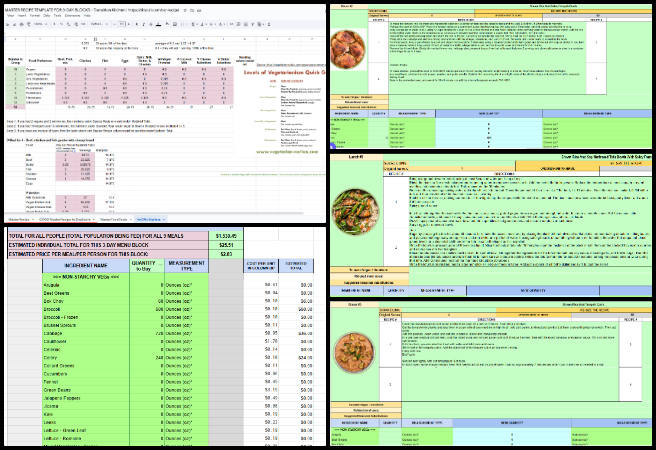
HIGHEST GOOD ENERGY PROGRESS
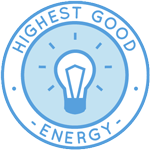 One Community is advancing sustainable future building through Highest Good energy that is more sustainable, resilient, supports self-sufficiency and includes solar, wind, hydro and more:
One Community is advancing sustainable future building through Highest Good energy that is more sustainable, resilient, supports self-sufficiency and includes solar, wind, hydro and more:
- Learn about the open source sustainable-energy foundations: Solar, Hydro, and Wind
- Explore our research into the most sustainable products and companies for saving water and energy: Insulation, Eco-laundry, Lightbulbs and Light Bulb Companies, Doors and Door Companies, Windows and Window Companies, Toilets, Faucets and Faucet Accessories, Urinals, and more.
This week, Dishita Jain (Data Analyst) continued supporting with the Highest Good Energy research and cost analysis for helping people create their own sustainable futures. Her tasks focused on the Energy Infrastructure Cost Analysis and Visualizations task under the HG Energy project. She replaced image links using the master Excel sheet, and consolidated multiple tabs from separate spreadsheets into a single master file. She organized all charts into one spreadsheet, applied color coding, and created a table of contents on the first page linking to individual tabs. Dishita also implemented feedback from Jae by adjusting line spacing and updating captions. Under OC Administration, she completed team reviews for the Blue Steel and Binary Brigade teams, added comments, and uploaded collage to WordPress for both the teams. One Community’s open source mission is powerfully reflected in the Highest Good Energy initiative, which advances sustainable future building as a model for global benefit. Below are some of the images showcasing this work.
Shravan Murlidharan (Volunteer Electrical Engineer) continued contributing to the Highest Good Energy component by assisting with off-grid and grid-tied solar microgrid. He worked on analyzing and improving off-grid versus on-grid profit calculations by identifying key limitations in the original example and proposing a revised, visually supported version. He also researched solar microgrids, locating relevant research papers to expand his technical understanding of their architecture and implementation. He summarized content from the Highest Good Energy section of the One Community platform and reviewed supporting articles to build a clearer picture of sustainable energy practices. This project furthers One Community’s goal of sustainable future building. A comparison of solar incentive programs, net metering policies, and financial benefits across various U.S. regions was developed, including a structured summary and recommendations based on residential and commercial viability. Further analysis was conducted on grid-tied remote energy infrastructure, focusing on solar panel setup, inverter configuration, utility interface, and cost modeling relevant to off-grid deployment. In parallel, he examined titanium-based solar technology developed in Japan, paying attention to its experimental performance characteristics and potential applications in renewable energy systems. Insights from both infrastructure design and materials innovation were connected to assess the future direction of clean energy solutions, especially for remote environments. The week concluded with a comparative review of energy load profiles across residential, commercial, and industrial sectors in the U.S., evaluating hourly, daily, and monthly demand trends, typical appliance contributions, and seasonal variations in energy usage. Load shape differences and peak demand behaviors were also assessed to understand sector-specific patterns and inform system planning considerations.Guided by its open source philosophy, One Community developed the Highest Good Energy initiative to pioneer sustainable solutions by sustainable future building. His contributions are shown in the collage below.
HIGHEST GOOD EDUCATION PROGRESS
 One Community is advancing sustainable future building through Highest Good education that is for all ages, applicable in any environment, adaptable to individual needs, far exceeds traditional education standards, and more fun for both the teachers and the students. This component of One Community is about 95% complete with only the Open Source School Licensing and Ultimate Classroom construction and assembly details remaining to be finished. We’ll report on the final two elements to be finished as we develop them. With over 8 years of work invested in the process, the sections below are all complete until we move onto the property and continue the development and open sourcing process with teachers and students – a development process that is built directly into the structure of the education program and everything else we’re creating too:
One Community is advancing sustainable future building through Highest Good education that is for all ages, applicable in any environment, adaptable to individual needs, far exceeds traditional education standards, and more fun for both the teachers and the students. This component of One Community is about 95% complete with only the Open Source School Licensing and Ultimate Classroom construction and assembly details remaining to be finished. We’ll report on the final two elements to be finished as we develop them. With over 8 years of work invested in the process, the sections below are all complete until we move onto the property and continue the development and open sourcing process with teachers and students – a development process that is built directly into the structure of the education program and everything else we’re creating too:
- Program Overview: Education Open Source Hub
- How the components work together in designing human orchestrated eco-abundance: How to use the Education for Life Program
- Lesson Plans for Life – Lesson Plans How-to
- Foundations of Outstanding Leaders, Teachers, and Communicators
- Curriculum for Life
- Teaching Strategies for Life
- Learning Tools and Toys for Life
- Evaluation and Evolution
This week, Harshitha Rayapati (Program Manager) continued work on detailing deliverables for the Highest Good Education software platform, outlining various components, developing Figma designs, and expanding the visual layout of the student dashboard. She focused on refining the Figma design for both the teacher and student dashboards. She incorporated prior feedback into the student dashboard’s activity dropdown page, ensuring clearer functionality and a cleaner interface. On the teacher’s side, she updated the grade submissions landing page to enhance usability and visual consistency. Harshitha also revised the assignment submission view across both dashboards to create a more unified user experience. Additionally, she improved the design and function of the generic form task builder within the teacher dashboard. She also compiled the weekly blog update, reviewed the housing team’s progress, edited the blog page, and created a collage. The One Community model of sustainable future building, exemplified by sustainably built classrooms like this, represents sustainable change for the whole planet. See the collage below for her work.
HIGHEST GOOD SOCIETY PROGRESS
 One Community is advancing sustainable future building through a Highest Good society approach to living that is founded on fulfilled living, the study of meeting human needs, Community, and making a difference in the world:
One Community is advancing sustainable future building through a Highest Good society approach to living that is founded on fulfilled living, the study of meeting human needs, Community, and making a difference in the world:
- Read the Highest Good society overview: Highest Good Society
- Learn about the model for fulfilled living and sharing: A Day in the Life
- Learn about the 4 economic models: RBE | For-profit | Non-profit | Entrepreneurship
- Learn about our open source community collaboration and management software: The Highest Good Network
This week, the core team completed over 32 hours managing One Community’s volunteer-work review (not included in the summaries here), emails, social media accounts, web development, new bug identification, and bug-fix integration for the Highest Good Network software, as well as interviewing and onboarding new volunteer team members. They shot and incorporated the video above which explains how sustainable future building is a foundation of the bigger picture of everything One Community is doing. The image below shows some of this work.
Govind Sajithkumar (Project Manager) continued focusing on analytics and content management for Facebook and Instagram on Meta platforms. He managed content for Meta’s social channels by refreshing the Facebook and Instagram feeds with new posts and setting up a regular posting schedule. He entered content details and metadata into the Open Source spreadsheet for tracking and analysis. Govind also finished the weekly update of social media analytics, which included collecting and processing new audience data for both platforms. Additionally, he performed PR Review Team Management by providing feedback on team members’ documents, modifying a WordPress site with the team’s weekly summary and collage, and updating the PR Review Team Table and HGN PR spreadsheet. He also reviewed fellow admins and submitted his admin feedback table. This effort supports One Community’s broader mission of sustainable future building. The images below showcase some of this work.
Jaiwanth Reddy Adavalli (Project Manager) continued developing the Job Applicants page along with components of the Highest Good Network Phase 2 and Phase 4 dashboards, including the PR Team analytics section. He tested several pull requests in the Highest Good Network software and continued work on the development of the PR Review Team Analytics software and dashboard. He updated the action items for the corresponding Figma wireframes. Jaiwanth also monitored software team management documents to manage task creation and followed up on the progress of those tasks. As part of the PR review team, he reviewed the pull requests of the volunteer team assigned to him. This project plays an important role in One Community’s commitment to sustainable future building. The following images show his work for the week.
ADMINISTRATION TEAM
The Administration Team summary, covering their work administrating and managing most of One Community’s ongoing process for sustainable future building was managed by Bhakti Tigdi (Project Manager) and includes Anuneet Kaur (Administrator), Harsha Ramanathan (Administrator), Himanshu Mandloi (Engineering Project Manager), Khushie Zaveri (Communication Strategist), Neeharika Kamireddy (Data Analyst), Olawunmi “Ola” Ijisesan (Administrative and Management Support), Olimpia Borgohain (Data Analyst and Team Administrator), Rachna Malav (Data Analyst), Rishi Sundara (Quality Control Engineer and Team Administrator), and Vedansh Rathi (Administrator). The Highest Good Network software is how we’ll be managing and objectively measuring our process for sustainable future building through our social architecture, construction, production, and maintenance processes.
This week, the Administration team supported a variety of content, coordination, and technical tasks that spanned sustainability research, blog development, SEO optimization, and software testing. Anuneet focused on identifying sustainable materials across multiple categories, managed volunteer bios, and began drafting the Licensing and Accreditation page for the Highest Good Education Program. She also contributed to interface design using Figma and completed several admin-related reviews and content updates. Harsha conducted in-depth research on sustainable door materials, particularly fiberglass, and compiled supporting data and scholarly references to guide graphic content creation. Himanshu managed the timelog process, followed up on member submissions, created new content features for the Job Application Listing Page, authored a blog post on sustainable living, and reviewed admin contributions for quality and accuracy. This progress reinforces One Community’s strategy for sustainable future building.
Khushie launched social media efforts for the metric system campaign, managed scheduled content across platforms, responded to new team questions, and completed blog formatting and publication tasks. Neeharika coordinated with the software team by assigning tasks, reviewing PR dashboards, and following up with developers, while also completing interviews and weekly admin duties. Ola reviewed pull request documentation for consistency, prepared workspace materials for the team, and organized weekly report folders. Olimpia analyzed LinkedIn analytics, created visual KPI reports, and contributed to blog and admin duties while progressing on new post creation. Rachna worked on her pending SEO pages and internal follow-ups, though interviews couldn’t proceed due to a lack of candidate outreach. Rishi finalized team collages, consolidated and optimized blog posts, and reviewed and tested multiple pull requests. Vedansh completed his training, organized over 500 AI-generated songs, and ensured quality control across all output in alignment with project guidelines. This work contributes to One Community’s commitment to sustainable future building. See below to view images of their work.
GRAPHIC DESIGN TEAM
The Graphic Design Team’s summary includes Aurora Juang (Graphic Designer), Yulin Li (Graphic Designer), Qinyi Liu (Graphic Designer), and Rutal Deshmukh (Graphic Designer), covering their work on graphic designs for sustainable future building.
This week, Aurora refined new volunteer bio announcements and updated outdated resources using past tutorial references to ensure formatting and accuracy. Through clear communication with Jae and Sara, she supported onboarding improvements aligned with sustainable future building. Qinyi Liu designed and refined game-style characters and social media visuals using MidJourney, ChatGPT, and Photoshop, adding gesture variations and bio images. Rutal updated social media graphics, completed announcement bios, and coordinated next steps with the team to support sustainable future building. Yulin revised infographics and created visuals to improve clarity and consistency. See the Highest Good Society pages for more on how this contributes to sustainable future building. See the collage below to view some of their work.
HIGHEST GOOD NETWORK PROGRESS
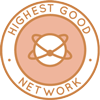 One Community is advancing sustainable future building through open source Highest Good Network® software that is a web-based application for collaboration, time tracking, and objective data collection. The purpose of the Highest Good Network is to provide software for internal operations and external cooperation. It is being designed for global use in support of the different countries and communities replicating the One Community sustainable village models and related components.
One Community is advancing sustainable future building through open source Highest Good Network® software that is a web-based application for collaboration, time tracking, and objective data collection. The purpose of the Highest Good Network is to provide software for internal operations and external cooperation. It is being designed for global use in support of the different countries and communities replicating the One Community sustainable village models and related components.
- Learn about our open source community collaboration and management software: The Highest Good Network
This week, the core team continued their work on the Highest Good Network pull requests and confirmed the following fixes: Create New User form issues (#3169), formatting issue in the Select Featured window badges list (#3342), display of suggestion categories showing “nan” (#3443), role icons and header/table adjustments (#3276), date autofill (#3162), bounding box limitation of the management checkbox info to the actual image (#3088), hotfixes on the User Profile Page (#3462), profile page loading optimization (#3445), checkbox notification functionality on the Reports page (#3195), button functionality for ‘Edit Job Application Email CC’ (#3455), ability to edit and limit link type (#3337), interaction with the deadline check-in box (#2926), name overflow on the dashboard (#2864), team weekly summaries in dark mode (#3429), and functions added to the material list in the BM dashboard (#3362). This output reflects One Community’s work in sustainable future building.
The following issues were not fixed: member column filter (#3220 and #1257) and implementation of the Skills section on the hgnhelp/profile page (#3400). Additional tasks included assigning work to six volunteers. They were unable to test PR #2417 and #1020 (Force new password for new users) due to a bug preventing the creation of a new team, and also unable to test PR #3254 (update equipment tool) because Phase 2 data is not available on the main branch. See the Highest Good Society and Highest Good Network pages for more on how this aligns with One Community’s commitment to sustainable future building. The collage below shows some of this work.
ALPHA SOFTWARE DEVELOPMENT TEAM
The Alpha Software Team, covering their progress on the Highest Good Network software, was managed by Lin Khant Htel (Frontend Software Developer) and includes Nikita Kolla (Full Stack Developer). This software is an internal management and communication platform with the goal of sustainable future building.
This week, Lin reviewed and approved PR #1470 after testing the code locally and confirming all test cases passed. She also verified weekly summaries, photos, and videos from the Alpha Team, supported team coordination, and contributed to sustainable future building. Nikita resolved environment setup issues and the necessary functions for cron job testing, then wrote additional test cases. See the Highest Good Society and Highest Good Network pages to learn more on how this relates to sustainable future building. See some of the team’s work in the collage below.
BINARY BRIGADE SOFTWARE DEVELOPMENT TEAM
The Binary Brigade Team’s summary, overseeing advancements in the Highest Good Network, was managed by Dishita Jain (Data Analyst) and includes Ramsundar Konety Govindarajan (Software Engineer). The Highest Good Network software is how we’ll be managing and objectively measuring our progress in sustainable future building through our social architecture, construction, production, and maintenance processes.
This week, Ramsundar worked on task 1004, which involved a bug where, if a user (User A) was viewing another team member’s timelog (User B) and logged time using the timer, the frontend temporarily displayed User A’s new time entry within User B’s view. While the backend correctly attributed the logged time to User A, the UI created a momentary inconsistency. He initially suspected the issue was related to Redux architecture but later identified that the problem was due to the Redux timeEntries slice being updated immediately after a time entry was created, without considering whose page was being viewed. This caused the updated data for User A to appear on User B’s page. The fix involved adding a check before updating Redux to determine whether the page being viewed belongs to the person who just logged time. If the user is viewing someone else’s page, the UI state is left unchanged. If the user is viewing their own page, the state is updated as expected. A page refresh always loads the correct data from the server. He implemented the fix and created a new pull request (#3742). See the Highest Good Society and Highest Good Network pages to learn more about how this work relates to sustainable future building. View some of the team’s work in the collage below.
BLUE STEEL SOFTWARE DEVELOPMENT TEAM.
The Blue Steel Team’s summary, presenting their work on the Highest Good Network software, was managed by Dishita Jain (Data Analyst) and includes Humemah Khalid (Software Engineer/Backend Developer), Linh Huynh (Software Engineer), and Ramakrishna Aruva (Software Engineer). The Highest Good Network software is how we’ll be managing and objectively measuring our process for sustainable future building.
This week, Humemah worked on enabling functionality for users with appropriate permissions to reset or change the passwords of other users. This required modifying the system to allow admins or owners to assign the “Update Password (Others)” permission through the Permissions Management section. The work relates to previous pull requests #2860 and #1146 and remains in progress. Linh focused on writing and refining unit tests for several backend controller files, including popupEditorController.js, bmMaterialsController.js, emailController.js, and inventoryController.js. For inventoryController.js, Linh expanded and updated eight test cases to improve coverage, targeting scenarios such as inventory retrieval by project and WBS ID, handling permission checks using hasPermission, and simulating different database outcomes using mocked Mongoose models like Item, ItemType, and projects. These tests addressed both success and error responses, including 403 and 500 status codes, as well as cases involving missing inputs or dependent data. In popupEditorController.js, Linh added tests focused on editor configuration and error handling for invalid inputs. Updates to bmMaterialsController.js and emailController.js included test cases for retrieving material entries and validating email content. All tests were implemented using Jest with mock modules to ensure isolation, and changes were committed to the linh_unitTest_inventoryController branch under PR #1530. A total of five hours was logged for test development and integration. Ramakrishna resumed work on an issue from the previous week by syncing with the latest development changes and reviewing project updates. He examined the structure of report-related methods and APIs, and analyzed the implementation of lost hours tracking, focusing on how these methods integrate with projects and individual members to understand the current data flow and system behavior. See the Highest Good Society and Highest Good Network pages to learn more about how their work contributes to sustainable future building. See below to view images of their work.
CODE CRAFTERS SOFTWARE DEVELOPMENT TEAM
The Code Crafters Team, covering their work on the Highest Good Network software, was managed by Sai Moola (Software Engineer) and includes Ashrita Cherlapally (Software Engineer), Greeshma Palanki (Software Engineer), Humera Naaz (MERN developer), Pratyush Prasanna Sahu (Software Engineer), Ravikumar Sripathi (Software Engineer), and Sundar Machani (Software Engineer). The Highest Good Network software is how we’ll manage and objectively measure our process for establishing abundant community systems through our social architecture, construction, production, and maintenance processes, and support widespread and lasting eco-lifestyle access. This aligns with One Community’s broader goal of sustainable future building.
This week, Ashrita worked on implementing key features for the interactive map application. She developed API endpoints to aggregate applicant data by country and time range using MongoDB and Express, enabling role-based and date-based filtering. She also created a data seeding script to populate the database with realistic sample entries, which allowed for functional testing of weekly, monthly, yearly, and custom date filters. Greeshma cleaned and refactored code related to hierarchy access, raised a pull request for verification, and confirmed the feature was working as expected. She reviewed a new task, requested assignment of the corresponding timelog, and made changes to update a person’s end date based on the last week they logged hours instead of their deactivation date, ensuring the change was reflected across the application. Greeshma also spent time learning more about Azure and Redux state management to better support current and future tasks. This activity contributes to One Community’s sustainable future building objectives. Ravi focused on refining components of the education platform’s analytics and progress-tracking features. An actionable analytics dashboard was designed to help students identify performance trends, strengths, and gaps across subjects, featuring an interactive line graph with a subject selection filter. A visual layout was developed to display mastery levels across subjects by categorizing education atoms into completed, in-progress, or not completed states, with the ability to explore suggested atoms and save them based on performance or prerequisites. A dynamic interface was also built for the Education Molecules section, allowing atoms to visually change states — gold for completed, greyed-out for not completed, and colored for in-progress — with clickable atoms opening a floating details view that includes an option to save the atom to the “My Saved Interests” section. All of this work contributes to advancing sustainable future building by supporting personalized learning paths and better educational outcomes. The enhanced analytics and visual interfaces are aligned with sustainable future building by empowering learners with actionable insights. This effort to improve platform interactivity is another step toward sustainable future building through accessible and meaningful data visualization. The continued focus on performance tracking tools reflects a commitment to sustainable future building that supports long-term user engagement and growth. See the Highest Good Society and Highest Good Network pages for more on how this relates to sustainable future building. View some of the team’s work in the collage below.
DEV DYNASTY SOFTWARE DEVELOPMENT TEAM
The Dev Dynasty Team’s summary, covering their work on the Highest Good Network software, was managed by Zhifan Jia (Software Engineer) and includes Dharmik Patel (Software Engineer), Manvitha Yeeli (Software Engineer), Mohan Satya Ram Sara (Software Engineer), Prasanth Bhimana (Software Engineer), Saicharan Reddy Kotha (Software Engineer) Shraddha Shahari (Software Engineer), Vamsi Krishna Rolla (Software Engineer), and Varsha Karanam (Software Engineer). The Highest Good Network software is how we’ll manage and objectively measure our process for establishing abundant community systems through our social architecture, construction, production, and maintenance processes to support widespread and lasting eco-lifestyle access. This supports One Community’s aim of creating sustainable future building models.
This week, Dharmik completed the team code filter set feature by resolving linting issues, submitting final pull requests for frontend and backend, and recording a demo video. He began exploring requirements for the Team Analytics Dashboard, reviewed related documentation and older pull requests, and created a new branch to begin routing development. Manvitha modified backend responses to support pull request review data aggregation from both HighestGoodNetworkApp and HGNRest using the GitHub API, added filters and pagination, and investigated further optimizations due to slow data retrieval. She also addressed a comment from PR3670. Mohan worked on two key areas of the HGN Software Development project. First, he resolved a crash issue during manual date editing on the task page by refactoring the input component and wrapping logic in a try-catch block, ensuring the application remained stable. Second, he implemented dark mode and login functionality for the HGNForm page by integrating the ThemeProvider, applying Tailwind classes, and testing interface behavior. These updates supported usability enhancements tied to sustainable future building by strengthening infrastructure reliability. Prasanth reviewed and tested PRs 3727, 3684, 3603, 3582, 1337, 3548, and 1375, covering promotion confirmations, job posting logic, listing filters, analytics, and API functionality for member data. He also collaborated on the Phase-2 document review with a focus on sustainable future building, verifying features and preparing a structured action item list.
Saicharan reviewed PRs 3548, 1375, 3603, 3620, 3629, and 3727, validating promotion confirmation boxes, team member creation, job filters, dashboard expense graphs, and job posting workflows. He joined the Development Team and was assigned to audit Phase-2 documentation with teammates, focusing on ensuring the codebase advances sustainable future building objectives. Shraddha reviewed the AddConsumable PR tests and resolved lint errors causing pipeline failures. She continued work on PR2891 by resolving conflicts, updating UI code, and identifying dark mode issues, and began addressing conflicts in PR3612. Vamsi fixed missing data fields in the database affecting the stacked horizontal bar chart and addressed integration issues between frontend and backend APIs. He introduced interactive tooltips for review category breakdowns, adjusted styling for clarity, and refactored the codebase by modularizing components, isolating logic, and creating a service layer. His work improved dashboard usability as part of broader goals tied to sustainable future building. Varsha reviewed the HGN tasks document, identified unassigned items, and submitted a pull request for her assigned task. She fetched and formatted FAQ data for the Job Application Listing Page, embedded a video in an answer, and began testing the Phase-2 implementation. She also started work on the teams search endpoint, contributing toward sustainable future building through clearer information access. Zhifan continued work on task edit logs by debugging duplicate success messages and resolving a backend issue that logged resource changes unnecessarily. He updated dashboard task count logic, created a pull request with testing and video demos, and fixed merge conflicts and prior test failures. He also addressed a bug causing incorrect popup messages during task edits and updated the submitTasks function accordingly, with backend progress depending on additional merged fixes. See the Highest Good Society and Highest Good Network pages for more on how this relates to sustainable future building. View some of the team’s work in the collage below.
EXPRESSERS SOFTWARE DEVELOPMENT TEAM
The Expressers Team’s summary, which covers their work on the Highest Good Network, was managed by Casstiel Pi (Software Engineer) and includes Meenashi Jeyanthinatha (Full Stack Developer), Rahul Trivedi (Software Engineer), and Reina Takahara (Software Developer). The Highest Good Network software helps us manage and objectively measure our progress toward sustainable future building through innovative software development, testing, and collaboration. This week, Casstiel continued handling managerial responsibilities for end-of-week summaries and the team’s weekly review in the absence of manager Strallia Chao. After determining that the previously claimed feature could not be completed due to the termination of the MySpace API service, he identified and claimed a new feature involving the creation of an appropriate auto-poster for Plurk. He also reviewed the end-of-week summaries and weekly work submissions for all team members. Rahul focused on enhancing the performance and visual consistency of the graph components by implementing a loading screen to indicate data fetching and updating progress. He refined the horizontal graph with updated colors and styling to match Figma design specifications and adjusted the layout for better alignment with the intended design, including optimizing the PR bar graph for smaller screens, improving animations, and adjusting component alignment for improved responsiveness. This aligns with One Community’s pathway to sustainable future building.
Reina addressed feedback on pull request 3458 by reinstating dark mode compatibility for the cost breakdown line graph chart and adjusting styling based on reviewer comments. She also began work on dark mode support and permission handling for the skill addition feature on the hgn/skills page. Meenashi updated the userSkillsProfile page to fetch data based on a specified userId rather than defaulting to the logged-in user and incorporated role-based permissions into the AdditionalInfo component to limit editing access. She fixed alignment issues in the Question mern-work section, replaced alerts with toast.error for better user feedback, added required field validations, and implemented sorting to ensure questions appear in a consistent order. She identified that the updateUserSkillsProfileFollowUp function needs to be updated to accommodate the Administrator role and discovered that volunteers lack the necessary getUserProfiles permission in the frontPermissions array, which is needed to display basic user information. Additionally, she modified the backend API to accept a userId as a query parameter and return matching records, though the frontend continues to show a loading state which is still under investigation. See the Highest Good Society and Highest Good Network pages for more on how this contributed to sustainable future building. See the collage below to view the team’s work.
LUCKY STAR SOFTWARE DEVELOPMENT TEAM
The Lucky Star Team’s summary, which covers their work on the Highest Good Network, was managed by Barnaboss Puli (Volunteer Software Engineer) and includes contributions from Dipti Yadav (Software Engineer), Ganesh Karnati (Software Engineer), Kedarnath Ravi Shankar Gubbi (Software Engineer), Manoj Gembali (Software Engineer), Pranav Govindaswamy (Software Developer), Veda Bellam (Software Engineer), and Venkataramanan Venkateswaran (Software Engineer). Their work continued to support our goal of sustainable future building through collaborative and cross-functional software development. This week, Barnaboss worked on the deadline tracking system for the Elite Bug-fix Team and also developed backend APIs for the Phase 2 Summary Dashboard’s Utilization Rate and Downtime of Tools/Equipment bar graph and for the Twitter/X auto-poster feature. Dipti worked on two tasks, focusing on aligning a column in the WBS tasks table to the left and fixing the layout of a red circular icon. She reviewed the task details, identified relevant files, used debugging tools and console logs to understand the code, and began applying the necessary changes. Ganesh worked on the frontend of the Weekly PR Grading screen for the PR Review Team Analytics Dashboard by implementing an editable table, input validation for PR numbers, grade selection inputs, real-time synchronization, and visual improvements, while preparing for backend integration. Kedarnath analyzed the Job Application Listing Page to determine layout and placement for a new What We Do section, ensuring icons link to the correct pages and that descriptions are presented clearly. Manoj integrated the backend of the Cost Prediction Chart with its frontend component, ensured compatibility with light and dark modes, resolved merge conflicts, fixed UI issues, and updated chart labels in response to earlier feedback.
Pranav worked on displaying a suggested job list based on user responses by integrating the One Community logo, creating a category dropdown, building a navbar with search and filtering functionality, and implementing pagination for job ads. He ensured that data was fetched correctly from the backend and dark mode compatibility was addressed. All changes were submitted in pull request 3741. Veda implemented a new frontend component named ApplicantSourceDonutChart to display applicant source data using a donut chart. The chart supports percentage and value labels along with filters for date range, role selection, and comparison type. On the backend, she added a controller method for the analytics route using MongoDB aggregation. The component is currently placed on a test page while the final UI location is determined, and additional integration and enhancements are still in progress. Venkataramanan raised three pull requests—3734, 3735, and 3736—focused on UI and UX improvements including alignment fixes and label formatting. He monitored Slack for blockers, resolved issues, and reviewed internal bug documentation to understand system architecture and debugging patterns. He also explored Redux usage and reviewed reducers to better understand global state management. See the Highest Good Society and Highest Good Network pages for more on how this relates to sustainable future building. See the collage below to view the team’s work.
MOONFALL SOFTWARE DEVELOPMENT TEAM
The Moonfall Team’s summary, which covers their work on the Highest Good Network, includes Alisha Walunj (Software Engineer) and Bhavpreet Singh (Software Engineer). The Highest Good Network software is how we’ll manage and objectively measure our progress toward sustainable future building through innovative software development, testing, and collaboration. This week, Alisha began working on the Job Posting Page Analytics task, which involved creating a pie chart to display the breakdown of applicants by reason for volunteering. She started by reviewing the requirements and configuring the API on the backend. The database schema was updated according to the specified fields. While setting up the API route, she encountered uncertainty about whether to integrate it into the main routing file or place it within an existing analytics structure, ultimately deciding to configure a new route. Once the backend was set up, she moved on to the frontend, where she implemented the pie chart using the react-chartjs library, configured the chart labels and colors, and began styling the component. The frontend development is still in progress. Bhavpreet worked on frontend changes for three different features, focusing on adjustments related to data input handling and the display of charts when users select all or multiple teams. These changes included implementing logic to support multiple chart views depending on team selection. In addition to the frontend updates, Bhavpreet also created the basic backend structure to support these three features. See the Highest Good Society and Highest Good Network pages for more details on how this work supports sustainable future building. See the collage below to view the team’s work.
REACTONAUTS SOFTWARE DEVELOPMENT TEAM
The Reactonauts Team’s summary, covering their work on the Highest Good Network was managed by Olimpia Borgohain (Data Analyst and Team Admin) and Akshay Jayaram (Software Engineer). The team includes Fatima Villena (Software Engineer), Guirong Wu (Software Engineer), Haocheng Xu (Software Engineer), Kristin Dingchuan Hu (Software Engineer), Peterson Rodrigues dos Santos (Full Stack Developer), Rishwa Patel (Software Developer), and Siva Putti (Software Engineer). The Highest Good Network software helps manage and objectively continue to support by focusing on sustainable future building, social architecture, construction, production, and maintenance processes to build sustainable and thriving ecosystems. This solution is portable, scalable, and ideal for off-grid or sustainable living communities.
This week, Akshay worked on sustainable future building and focused on making the PeopleReport component more responsive and visually consistent, improved layout logic for pie charts, and provided steady coordination for the Reactonauts team through tracking and reporting. Fatima continued frontend work on the PR Dashboard, focused on the promotion eligibility table layout, implemented CSS styling, fixed alignment issues, and adjusted backend API routing to ensure proper data flow. Guirong worked on testing the automation task and collaborated with Rahul to prepare for deployment. She implemented UI fixes for dashboard components on small screens and addressed the blue square chart issue by identifying that the backend was returning zeros.
Haocheng encountered repository permission issues that resulted in a 403 error, reviewed and studied the codebase to understand the project. Kristin resolved a bug where tasks were not displaying under the “Projects” section of user profiles and contributed to backend development for the Promotion Eligibility table by adding a controller, route, and tested the GET endpoint using Thunder Client. Peterson updated the Teams page by adding a message and a button when a user searches for a non-existent team, that allowed for new team creation. Rishwa worked on the backend task for the PR Review Team Analytics Dashboard, focused on the Promotion Eligibility interactive table by implementing GET and POST API endpoints to fetch and update reviewer data. She also included backend logic to calculate required PRs. Siva restored the missing visual representation of assigned versus completed tasks in the “Task Completed” section of the Total Organization Summary dashboard, and ensured task completion metrics display correctly. See below for the work done on sustainable future building.
SKYE SOFTWARE DEVELOPMENT TEAM
Skye Team’s summary, covering their work on the Highest Good Network was managed by Olimpia Borgohain (Data Analyst and Team Admin) and Anthony Weathers (Software Engineer). The team includes Julia Ha (Software Engineer), Marcus Yi (Software Engineer), and Prit Patel (Software Engineer). The Highest Good Network software helps manage and objectively continue to support by focusing on sustainable future building, social architecture, construction, production, and maintenance processes to build sustainable and thriving ecosystems. This solution is portable, scalable, and ideal for off-grid or sustainable living communities.
This week, Anthony worked on sustainable future building and merged frontend and backend pull requests with the development branch. He confirmed that warning tracker icons displayed consistent names and ensured the Both warning button appeared correctly on the Blue Square details modal. He also set up a Google API and tested the email functionality related to the warning modal. Julia resolved a conflict between pull request 3646 and the development branch, allowing it to be merged. She also worked on the special filter feature on the Weekly Summaries Report page, added a dropdown to the Save Filter button so users could create or update filters. She also implemented a modal for users to enter filter names, add descriptions, and review their selections before saving.
Marcus was promoted to the development team. He addressed a Dependabot issue by applying backend dependency updates and made necessary repository adjustments. The frontend Dependabot remained paused and under review. Prit focused on removing unnecessary backend logic, reimplemented frontend logic for assigning default permissions to specific roles, and ensured access was granted to active Software Development Team members who had completed the required survey. See below for the work done on sustainable future building.
SOFTWARE PR REVIEW TEAM A-F
This week, the PR Review Team’s summary for team members with names starting from A–F, covering their work on the Highest Good Network software, was managed by Neeharika Kamireddy (Data Analyst). The Highest Good Network software is a foundation of what we’ll be using to measure our results of advancing sustainable future building. This week’s active members of this team were: Aayush Jayant Shetty (Software Engineer), Abdelmounaim Lallouache (Software Developer), Adithya Cherukuri (Volunteer Software Engineer), Ajay Naidu (Software Engineer), Akshay Gadsing (Software Engineer), Bangaru Babu Kota (Software Engineer), Carl Bebli (Software Developer), Carlos Martinez (Full-Stack Software Developer), Chinmay Joshi (Software Developer), and Deekshith Kumar Singirikonda (Developer). They contributed to advancing sustainable future building by thoroughly reviewing all the Highest Good Network pull requests shared in this week’s update. Learn more about how the Highest Good Network measures progress toward sustainable future building by exploring the Highest Good Network open-source hub. The collage below showcases a compilation of this team’s work.
SOFTWARE PR REVIEW TEAM G-N
This week, the PR Review Team’s summary for team members with names starting from G–N, covering their work on the Highest Good Network software, was managed by Govind Sajithkumar (Software Project Manager). The Highest Good Network software is a foundation for measuring our results of advancing sustainable future building. This week’s active members of this team were: Jaydeep Mulani (Software Developer), Juhitha Reddy Penumalli (Software Engineer), Kurtis Ivey (Full Stack Developer), Nahiyan Ahmed (Full Stack Software Developer), Nathan Hoffman (Software Engineer), and Neeraj Kondaveeti (Software Engineer). They contributed by reviewing all the Highest Good Network pull requests shared in this week’s update. Learn more about how the Highest Good Network measures progress toward sustainable future building by exploring the Highest Good Network open-source hub. The collage below showcases a compilation of this team’s work.
SOFTWARE PR REVIEW TEAM O-Z
This week, the PR Review Team’s summary for team members with names starting from O–Z, covering their work on the Highest Good Network software, was managed by Jaiwanth Reddy Adavalli (Software Project Manager). The Highest Good Network software is a foundation for measuring our results of advancing sustainable future building. This week’s active members of this team were: Rohith Mallipudi (Software Engineer), Sai Krishna (Software Engineer), Shashank Madan (Software Engineer), Uha Kruthi (Software Engineer), Vamsidhar Panithi (Software Engineer), and Yiyun Tan (Software Engineer). They contributed by reviewing all the Highest Good Network pull requests shared in this week’s update. Learn more about how the Highest Good Network measures progress toward sustainable future building by exploring the Highest Good Network open-source hub. The collage below showcases a compilation of this team’s work.
AND WE PRODUCED THIS WEEKLY UPDATES BLOG – CLICK HERE TO SUBSCRIBE
FOLLOW ONE COMMUNITY’S PROGRESS (click icons for our pages)
INVESTOR PAGES
GET INVOLVED
One Community Welcomes Humemah Khalid to the Software Development Team!
Posted on July 12, 2025 by One Community Hs
One Community welcomes Humemah Khalid to the Software Development Team as our newest Volunteer/Consultant!

Humemah is a detail-oriented software engineer with practical experience developing scalable web applications using React.js, Node.js, Express, and Socket.io. She holds a Bachelor’s degree in Software Engineering from UIT-NED and has contributed to both frontend and backend development in fast-paced, collaborative environments. Skilled in building microservice-based architectures and integrating APIs, she is passionate about creating responsive, user-focused applications. Her professional work is showcased on LinkedIn and GitHub. While a member of the One Community team, Humemah has contributed to the backend of the Highest Good Network software. Her work includes building the Community Members List with filtering and search functionality, as well as enhancing admin controls such as notification handling and task visibility.
WELCOME TO THE TEAM HUMEMAH!
FOLLOW ONE COMMUNITY’S PROGRESS (click icons for our pages)
INVESTOR PAGES
GET INVOLVED
One Community Welcomes Vaibhav Koladiya to the Software Development Team!
Posted on July 12, 2025 by One Community Hs
One Community welcomes Vaibhav Koladiya to the Software Development Team as our newest Volunteer/Consultant!

Vaibhav is a software engineer with 1.5 years of experience in full-stack development, cloud computing, and system design. He has contributed to a variety of technical projects across domains such as education, bike rentals, and media platforms, with a strong focus on scalable architecture, performance optimization, and user-centered design. He values clean, testable code and advocates for automation and reusability to maximize technological impact. Driven by a passion for building efficient solutions, Vaibhav is dedicated to streamlining workflows and improving delivery outcomes. His GitHub highlights a diverse range of personal and collaborative projects, while his LeetCode profile demonstrates his strong problem-solving abilities and commitment to continuous learning. While a member of the One Community team, Vaibhav contributed to the Highest Good Network software by creating a horizontal bar graph that visualizes the longest open issues—helping the team track and prioritize persistent tasks to enhance project transparency and issue resolution.
WELCOME TO THE TEAM VAIBHAV!
FOLLOW ONE COMMUNITY’S PROGRESS (click icons for our pages)
INVESTOR PAGES
GET INVOLVED
Widespread and Lasting Eco-lifestyle Access – One Community Weekly Progress Update #642
Posted on July 7, 2025 by One Community Hs
At One Community, we are demonstrating widespread and lasting eco-lifestyle access through sustainable approaches to food, energy, housing, education, economics, social architecture, fulfilled living, and global stewardship practices. Everything we create is open source and free-shared by our all-volunteer team to support global collaboration and the development of teacher/demonstration hubs worldwide. By evolving sustainability into something self-replicating and accessible to all, we’re helping regenerate our planet and create a world that works for everyone—guided always by the values of The Highest Good of All.
- Here’s our project overview
- Here’s our world-change methodology
- Here’s how this becomes self-replicating
- Here’s how we are open source and free-sharing all the do-it-yourself designs
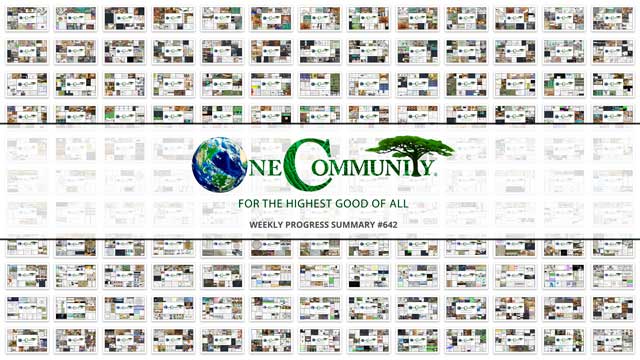
OUR MAIN OPEN SOURCE HUBS
Click on each icon to be taken to the corresponding Highest Good hub page.
One Community’s physical location will forward this movement as the first of many self-replicating teacher/demonstration communities, villages, and cities to be built around the world. This is the July 7th, 2025 edition (#642) of our weekly progress update detailing our team’s development and accomplishments:
Widespread and Lasting Eco-lifestyle Access
One Community Progress Update #642
DONATE | COLLABORATE | HELP WITH LARGE-SCALE FUNDING
CLICK HERE IF YOU’D LIKE TO RECEIVE AN EMAIL EACH WEEK WHEN WE RELEASE A NEW UPDATE
YOU CAN ALSO JOIN US THROUGH SOCIAL MEDIA
ONE COMMUNITY WEEKLY UPDATE DETAILS
HIGHEST GOOD HOUSING PROGRESS
 One Community is demonstrating widespread and lasting eco-lifestyle access through Highest Good housing that is artistic and beautiful, more affordable, more space efficient, lasts longer, DIY buildable, and constructed with healthy and sustainable materials:
One Community is demonstrating widespread and lasting eco-lifestyle access through Highest Good housing that is artistic and beautiful, more affordable, more space efficient, lasts longer, DIY buildable, and constructed with healthy and sustainable materials:
- Learn about: Our Upcoming Crowdfunding Campaign
- Learn about the different village models: 7 Sustainable Village Models
- Visit the open source portals for the first two: Earthbag Village OS Hub | Straw Bale Village OS Hub
This week, Adil Zulfiquar (Engineer) continued updating the Vermiculture Toilet website content by adding the Ventilation System Design for the Vermicomposting Eco-Toilet Space, ensuring it aligned with current ventilation recommendations and integrated with the overall vermiculture system information. In addition, he prepared a detailed task list for the handoff document outlining the next steps, including work related to the liquid drainage and filtration system, heating and cooling integration, sensor installation layout, and the remaining components of the vermiculture system. One Community’s open source launch of widespread and lasting eco-lifestyle access begins with Earthbag Village, the first of seven planned villages, each designed to provide housing. See below for some of the pictures related to this work.
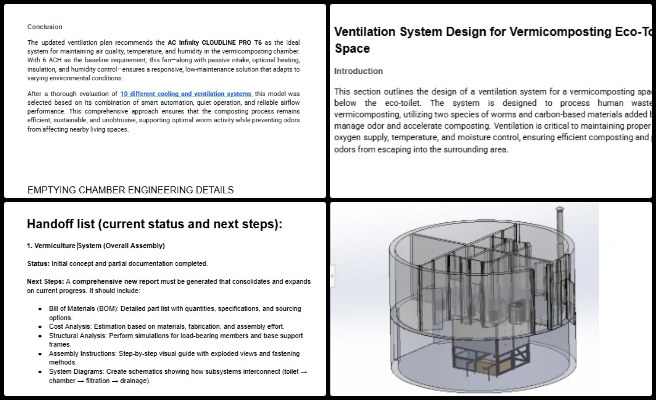
Derrell Brown (Plumbing Designer) continued working on the Earthbag Village 4-dome home plumbing and mechanical details. He coordinated with Michaela to address follow-up items related to finalizing the plumbing plans, including analyzing the plumbing wall in an isometric format for improved clarity. Following the discussion, he updated comments received, revised sanitary lines to match the floor plan, and adjusted the hot and cold water riser diagrams for consistency. Derrell then plotted two sets of the drawing, one in grayscale and one in color, for clarity. One Community’s open source launching of widespread and lasting eco-lifestyle access begins with Earthbag Village, the first of seven planned villages providing housing. See below for some of the pictures related to this work.
Karthik Pillai (Mechanical Engineer) continued working on the ongoing report for the Earthbag Village 4-dome cluster roof project, focusing on gathering relevant online resources and references that support the final design approach for the roof structure. He also started developing a render image intended for inclusion in the report, which is still in progress and will be completed in the following weeks. In addition, he revisited the finite element analysis and carried out reruns with more detailed parameters to enhance the accuracy of the structural assessment. On the Vermiculture Team, he is now managing multiple components of the project, including finalizing the design of the drawer and making required modifications to improve its functionality. Additionally, Karthik is also working on completing the design and implementation of the waste dumping mechanism, along with drafting the report that outlines the Unistrut assembly used in the system. As the first of seven planned villages, the Earthbag Village provides the initial housing within One Community’s open source designs for widespread and lasting eco-lifestyle access. See the work in the collage below.
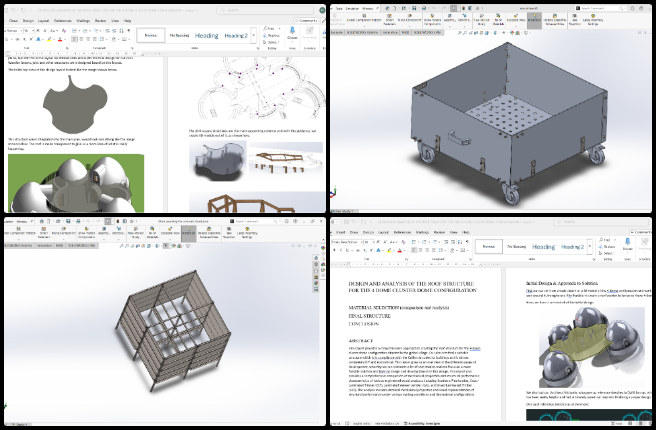
Ketsia Kayembe (Civil Engineer) continued working on the elevation drawings for the three-dome structure of the Earthbag Village. This week, she completed the drawings by midweek and incorporated feedback from Rumi to revise the files accordingly. Ketsia also began developing the window and door details for the same structure by gathering the necessary information to update the AutoCAD files and advance them to a construction-ready level.One Community’s open source framework of widespread and lasting eco-lifestyle access begins with Earthbag Village, the first of seven planned villages providing housing. See below for some of the pictures related to this work.
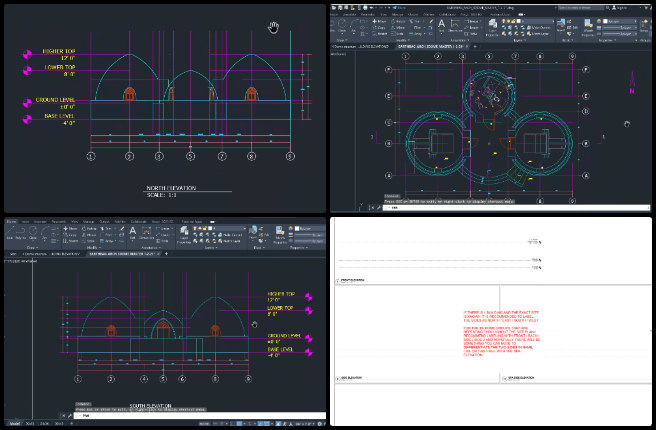
Michaela Silva (Architect) continued working on finalizing the interior of the Earthbag Village. She modeled the roof decking pedestal system and framing on top of the rigid insulation and cover board. During this process, adjustments were made to the locations of the insulation slopes and roof drains to ensure that the pedestals are positioned around the drains with appropriate framing to protect them. The Earthbag Village is the first of seven villages to be built as part of One Community’s open source model for widespread and lasting eco-lifestyle access. See her work in the collage below.
Tejas Chhajer (Mechanical Engineer) continued working on the mechanical and plumbing aspects of the Vermiculture Toilet, focusing on the vermi pit where sludge is processed. He analyzed options for an openable and lockable side drawer, chose a hinge assembly for the drawer’s movement, and selected a latch with a bolt mechanism to secure the drawer when closed. One Community’s open source launch of widespread and lasting eco-lifestyle access begins with Earthbag Village, the first of seven planned villages providing housing. See below for some of the pictures related to this work.
DUPLICABLE CITY CENTER PROGRESS
 One Community is demonstrating widespread and lasting eco-lifestyle access through a Duplicable and Sustainable City Center that is LEED Platinum certified/Sustainable, can feed 200 people at a time, provide laundry for over 300 people, is beautiful, spacious, and saves resources, money, and space:
One Community is demonstrating widespread and lasting eco-lifestyle access through a Duplicable and Sustainable City Center that is LEED Platinum certified/Sustainable, can feed 200 people at a time, provide laundry for over 300 people, is beautiful, spacious, and saves resources, money, and space:
- Learn about this building and it’s function: Duplicable City Center Open Source Hub
This week, Andrew Chen (Industrial Designer) continued working on the Dormer second-floor window for the Duplicable City Center. He completed the first version of the step-by-step assembly instruction slides and made improvements to the slide layouts and renders to ensure the information flowed consistently and was easy to understand. He also sent the updated materials to Jae for feedback, including the first version of the assembly instructions and the second version of the material drawings. The Duplicable City Center highlights One Community’s open-source work to provide widespread and lasting eco-lifestyle access. Browse the visuals below.
Ayushman Dutta (Mechanical Engineer) focused on analyzing hub connector pipe dimensions from the existing CAD files to determine optimal dimensions and angles for the new design. He researched pipe material availability in both the US and global markets, examining metric specifications and thickness options as outlined in the materials document. Ayushman investigated various bolting options and worked to identify the optimal diameter for holes and bolt configurations. He also examined whether washers would be required for attaching spokes to the cylinder pipe on both sides of the connection. Throughout the week, he continued developing his understanding of the tolerances needed for the hub connector design and evaluated different material specifications to ensure the design would be manufacturable with readily available components. One Community’s open-source Duplicable City Center advances widespread and lasting eco-lifestyle access for all. Check out the photos below.
Lokesh Mali (Mechanical Engineer) focused on early-stage planning and design refinement for the rain- and grey-water systems. He explored the SketchUp roof model in depth, reviewed layer organization, and identified all catchment-zone boundaries and gutter tie-in points. After meeting with Vineela for CAD orientation, he refined the gutter-sizing spreadsheet using IPC 2024 tables and confirmed flow capacities across the zones. Lokesh also researched EPA guidance on infiltration trench design, grey-water pond standards, and first-flush diverter sizing methods. He reviewed EPDM liner specifications and flow-rate guidelines, and began updating the CAD layout to reflect gutter and trench tie-ins. Next week, he will meet with Mihir to align on design direction and clarify key layout and trench-routing details. This foundational work sets the stage for next week’s detailed modeling and cost analysis. Through open-source innovation, the Duplicable City Center promotes widespread and lasting eco-lifestyle access. Browse the images below.
Nikhil Bharadwaj (Mechanical Engineer) worked on creating the spoke designs for row 2, during which an issue was identified involving interference between spokes during assembly. It was determined that the spokes run into each other, indicating the need for a larger hub diameter to resolve the problem. While a new diameter is being selected, updates continued on the hub connector assembly spreadsheet. The assembly instructions for row 2 were completed, including all necessary screenshots, dimensions, and corresponding notes. The screenshots will be updated once the new pipe diameter is finalized, but the current assembly document is available for review to assess the clarity and adequacy of the instructions. One Community’s open-source Duplicable City Center supports widespread and lasting eco-lifestyle access worldwide. Browse the photos below to explore this work.
Nupur Shah (Mechanical Engineer) continued reworking the Row 2 assembly with new team members and guided them through the ongoing tasks to help them get aligned with the project goals. She completed all the required views for Row 2 with support from Nikhil. The beam designs were integrated into the assembly, and each side was annotated to reflect the correct positioning and angles. These updates were aimed at improving clarity and ensuring the structural components align with the intended design. All related files were updated to include the new beam configurations and annotations. The Duplicable City Center is an open-source contribution from One Community focused on widespread and lasting eco-lifestyle access. Check out the photos below.
Sandesh Kumawat (Mechanical Engineer) continued working on the City Center Natural Pool and Eco-spa Designs. He focused on understanding the design requirements and functional considerations for a spa cover, including exploring insulation configurations and reviewing existing concepts such as thermal blanket layering and folding strategies. The first design used a four-bar linkage intended to rotate the flap over an adjacent section while maintaining a horizontal orientation, and it was well received by his senior colleague Jae for its simplicity and effectiveness. However, the mechanism faced issues due to lever collision that prevented full rotation. To address this, a second version was developed using guided slots and sliding links to control the folding motion more precisely and eliminate the collision. While this approach resolved the movement interference, it introduced increased manufacturing complexity and the potential for operational noise due to sliding contact. In the final iteration, a different approach was implemented involving a basic slide-and-fold mechanism, which enabled the flap to extend and then collapse compactly. This configuration eliminated previous collision issues, removed the need for sliding slots, and reduced part complexity while preserving the intended motion path. Supporting images, videos illustrating the motion and interference concerns, and updated CAD files were added to the shared Dropbox folder. One Community’s open-source Duplicable City Center empowers widespread and lasting eco-lifestyle access for everyone. Check out the photos below.
Shu-Tsun Huang (Engineer) continued working on the Duplicable City Center by conducting the structural and frame analysis of the City Center dome using Autodesk Inventor, as well as working on the spreadsheet for which she is responsible. She conducted an in-depth snow load analysis using real project data to validate and refine her updated structural model. Her work included detailed simulations and evaluations to ensure the model’s accuracy and performance under various loading scenarios. She also performed a comparative study on snow loads across different roof geometries, with a particular focus on the structural behavior and load distribution differences between flat and dome-shaped roofs. In addition to her technical analysis, Shu-Tsun met with Dipak to discuss her findings and received valuable feedback. She will revise her calculations based on his suggestions. Shu-Tsun also dedicated time to drafting the final report. The Duplicable City Center demonstrates One Community’s open-source commitment to widespread and lasting eco-lifestyle access. Browse the visuals below.
Srujan Pandya (Mechanical Engineer) continued helping with the Duplicable City Center FEA analysis. He worked on finalizing the “Vertical Loads” section and incorporating it into the main document for Jae’s review. He also reviewed and reformatted Shu’s progress documentation to maintain consistency, preparing it for feedback. Additionally, Srujan advanced the Manufacturing documentation, integrating early sections into the main document using the project’s standard formatting. Srujan also has arranged a talk with Dipak regarding the design alteration in hub connectors which may affect the subsequent dome analyses. With open-source principles, the Duplicable City Center advances One Community’s goal of widespread and lasting eco-lifestyle access. Browse the photos below to explore this work.
Vineela Reddy (Mechanical Engineer) focused on building a stronger understanding of the plumbing and water management systems relevant to the project. She reviewed the Plumbing Drawings to understand the layout and flow, studied the Cold Potable Water Drawings to learn about cold water distribution, and examined the rainwater catchment design to understand how rainfall is collected and directed. She also analyzed the Waste Water Drawings to understand how sewer and grey water pipes are connected. Through the City Center Plumbing and Water Catchment files, she identified appropriate pipe sizes and slope percentages and learned how to calculate wet area, elevation drop, initial level, final level, flow rate, and maximum flow for different pipe sections. She further explored pipe selection criteria and the sizing of downspouts, gutters, and cisterns. Additionally, Vineela researched grey water processing methods, focusing on simple systems such as “Laundry to Landscape” to understand practical approaches for reusing grey water. One Community’s open-source Duplicable City Center creates pathways to widespread and lasting eco-lifestyle access. Check the images below.
HIGHEST GOOD FOOD PROGRESS
 One Community is demonstrating widespread and lasting eco-lifestyle access through Highest Good food that is more diverse, more nutritious, locally grown and sustainable, and part of our open source botanical garden model to support and share bio-diversity:
One Community is demonstrating widespread and lasting eco-lifestyle access through Highest Good food that is more diverse, more nutritious, locally grown and sustainable, and part of our open source botanical garden model to support and share bio-diversity:
- Learn about the structures: Hoop House Hub | Aquapini & Walipini Open Source Hub
- See what we’ll be growing: Gardens & Hoop Houses | Large-scale Structures | Food Forest | TA
This week, the core team continued their review of the Master Tools, Equipment, and Materials/Supplies list, changing all comments of “O” to “ORCH” and “SLAM” to “SA”. It was noted that all “F” and “FD” designations should be eliminated from the website, as they represent the Food document, which is now integrated into the Master Tools, Equipment, Materials/Supplies document, with TEMS allocated to specific projects, including food. The Highest Good Food initiative is a key component of One Community’s open source plans, focused on widespread and lasting eco-lifestyle access, and exemplifies the organization’s commitment through innovative design and implementation. Below are some of the images showcasing this work.
Chelsea Mariah Stellmach (Project Manager) continued her work on the Transition Food Self-sufficiency Plan menus and customization spreadsheets. She integrated and revise the merged food procurement and storage content to incorporate details about the Mariposa case study, additional logistical information, and updates related to the transition kitchen. Chelsea then color-coded the google document to prepare it for handoff to the graphic designer. As an essential aspect of One Community’s open source goals, the Highest Good Food initiative supports widespread and lasting eco-lifestyle access as a foundation for sustainable living. Below are some of the images showcasing this work.
Dirgh Patel (Volunteer Mechanical Engineer) continued assisting with the Climate Battery design evolutions. He edited the final report by adding explanations in the Dimensions and Assembly section and updated the stress-strain simulation explanation for improved clarity. Additional assumptions were added to the thermal simulation section to improve understanding, and a “Research Needed” task was completed by providing relevant information for the remaining work. Work was started on the heat gain by solar radiation task, including inserting reference images and performing calculations to determine the total rooftop area. He worked on the heat gain section by showing how area calculations were made using SolidWorks and by outlining the key assumptions used in estimating heat gain. The assembly video was modified by removing the rotation part, and the area calculation section was updated with new images and clear explanations. One Community’s open source mission is powerfully reflected in the Highest Good Food initiative, which is focused on advancing widespread and lasting eco-lifestyle access for global benefit. The following visuals highlight key outcomes of this initiative.
Faeq Abu Alia (Architectural Engineer) continued his work on the Earthbag Village. He developed the aquapini and walipini models for the Southeast and Southwest regions in Lumion, adding vegetation clusters and pathways, updating material settings to improve render realism, refining texture mapping, and integrating ground cover and planting zones. He optimized render settings, positioned environmental elements, and adjusted landscaping details to enhance depth and spatial context. One Community’s open source launch of widespread and lasting eco-lifestyle access begins with Earthbag Village, the first of seven planned villages providing housing. See below for some of the pictures related to this work.
Jay Nair (BIM Designer) continued working on Aquapini and Walipini Planting and Harvesting lighting and HVAC design. He continued working on calculating the lighting energy requirements for each zone of Greenhouse Walipini 1. This involved analyzing zone-specific conditions, applying fixture specifications, and entering data into the standardized format. The goal was to ensure that each zone’s lighting needs were accurately represented based on environmental factors and system design. The Highest Good Food initiative plays a leading role in One Community’s open source platform, promoting widespread and lasting eco-lifestyle access through sustainable and participatory development. Below are some of the images showcasing this work.
Keerthi Reddy Gavinolla (Software Developer) continued working on the Highest Good Food page, specifically details for the Soil Amendment page. She continued working on the Soil Amendment page by editing the document based on the current website content. Keerthi reviewed both the document and the website to identify differences, struck outdated text, updated the formatting, and made necessary adjustments for clarity and consistency. She updated the Moonfall, Expressers, and Lucky Star Team Blog #641. And she tested some pull requests on the dev site. Built on One Community’s open source foundation, the Highest Good Food initiative is dedicated to widespread and lasting eco-lifestyle access, empowering communities through self-sustaining systems. Her contributions are showcased in the collage below.
Pallavi Deshmukh (Software Engineer) continued working on adding the new Zenapini 2 content to the Aquapini and Walipini Planting and Harvesting page. She completed and submitted information for six interviews, reviewed the whole Permaculture web page, and fixed the issues where needed. She uploaded the required images and specific href for that as well. She verified the proper functioning of all visual and navigation elements. She continued working on adding Zenapini #2 content from Silin to the website. Pallavi also created new content for blog 641 and collaborated closely with her teammates, reviewing their suggestions and incorporating feedback to help produce a clear, consistent, and polished final version. In alignment with One Community’s open source objectives, the Highest Good Food project integrates widespread and lasting eco-lifestyle access into a larger vision of regenerative living. Her contributions are highlighted in the collage below.
Shivangi Varma (Volunteer Architectural Designer And Planner) started contributing to the Highest Good Food and developed an understanding of its various components, including the design and masterplan as well as the overall intent and organizational structure of the initiative. She created Google Docs for the Highest Good Food Infrastructure, Aquapini and Walipini Open Source Hub, and Planting and Harvesting pages. She copy-pasted the content from the three corresponding web pages into the documents and read through them in full, identifying sections where graphic standards could be developed and added. This analysis was informed by reviewing all the DWG files available in the open source folder. Shivangi also added comments to each Google Doc with a first draft of input on what should be included in terms of graphics, text, and formatting to better support a cohesive narrative for potential funders or for replication. The Highest Good Food initiative plays a leading role in One Community’s open source platform, promoting widespread and lasting eco-lifestyle access through sustainable and participatory development. Below are some of the images showcasing this work.
Tyson Denherder (Volunteer Pioneer Team Member) started contributing to the Highest Good Food and completed the onboarding process, reviewed the Highest Good Food pages on food procurement and storage, sustainability, and the transition kitchen, and went through Chelsea’s work on the Recipe Build-Out Tutorial. He used the tutorial to create a 3-day recipe plan, corrected several errors, and offered suggestions to improve the Recipe Build-Out Tool. The Highest Good Food initiative plays a leading role in One Community’s open source platform, promoting widespread and lasting eco-lifestyle access through sustainable and participatory development. Below are some of the images showcasing this work.
HIGHEST GOOD ENERGY PROGRESS
 One Community is demonstrating widespread and lasting eco-lifestyle access through Highest Good energy that is more sustainable, resilient, supports self-sufficiency and includes solar, wind, hydro and more:
One Community is demonstrating widespread and lasting eco-lifestyle access through Highest Good energy that is more sustainable, resilient, supports self-sufficiency and includes solar, wind, hydro and more:
- Learn about the open source sustainable-energy foundations: Solar, Hydro, and Wind
- Explore our research into the most sustainable products and companies for saving water and energy: Insulation, Eco-laundry, Lightbulbs and Light Bulb Companies, Doors and Door Companies, Windows and Window Companies, Toilets, Faucets and Faucet Accessories, Urinals, and more.
This week, Dishita Jain (Data Analyst) continued supporting with the Highest Good Energy research and cost analysis for helping people create their own sustainable futures. Her tasks focused on the Energy Infrastructure Cost Analysis and Visualizations task under the HG Energy project. She spent time updating the WordPress page by adding accurate spacing, finalizing content, checking image captions, and ensuring all links were correctly placed. She compiled data from multiple tabs into a single master worksheet and sent the updated version to Jae for review and feedback. Additionally, she made edits based on feedback received, including updating the main sheet with new links and making refinements to the WordPress content. On a separate task under OC Administration, she reviewed the Blues Steel and Binary Brigade teams, created collages, and added team summaries. One Community’s open source mission is powerfully reflected in the Highest Good Energy initiative, which advances widespread and lasting eco-lifestyle access as a model for global benefit. Below are some of the images showcasing this work.
Shravan Murlidharan (Volunteer Electrical Engineer) continued contributing to the Highest Good Energy component by assisting with off-grid and grid-tied solar microgrid. He worked on the report titled “Grid-Tied vs Off-Grid Solar: Overview” by adding content focused on system components and upfront costs. He created a graph and began developing a spreadsheet to organize cost data for comparison. The report was expanded to include a 10-year economic analysis of grid-tied, off-grid, and hybrid solar configurations, addressing their financial viability in both residential and commercial settings. This analysis included a review of system costs, electricity rates, solar yields, and incentive structures, along with calculations of payback period, net present value, and internal rate of return across different U.S. states. Additional focus was placed on how hybrid systems perform in regions with time-of-use pricing or restricted net metering policies. This work supports One Community’s mission to provide widespread and lasting eco-lifestyle access. Shravan also analyzed hybrid grid systems, considering their benefits, cost implications, and integration strategies, and created a concept diagram illustrating a hybrid solar and storage setup. To enhance clarity for both technical and non-technical readers, he began developing a flowchart that shows the operation of a fully off-grid solar system. He explored the use of solar panels in other industries, including electric vehicles and building-integrated solar, and created a Google Sheets file to organize the comparative cost data. In addition, he started working on case studies related to solar energy storage and developed diagrams illustrating off-grid systems in real-world contexts. He gathered research to support these case studies by identifying relevant applications of solar storage in various locations and sectors. Guided by its open source philosophy, One Community developed the Highest Good Energy initiative to pioneer sustainable solutions by widespread and lasting eco-lifestyle access. His contributions are shown in the collage below.
HIGHEST GOOD EDUCATION PROGRESS
 One Community is demonstrating widespread and lasting eco-lifestyle access through Highest Good education that is for all ages, applicable in any environment, adaptable to individual needs, far exceeds traditional education standards, and more fun for both the teachers and the students. This component of One Community is about 95% complete with only the Open Source School Licensing and Ultimate Classroom construction and assembly details remaining to be finished. With over 8 years of work invested in the process, the sections below are all complete until we move onto the property and continue the development and open sourcing process with teachers and students – a development process that is built directly into the structure of the education program and everything else we’re creating too:
One Community is demonstrating widespread and lasting eco-lifestyle access through Highest Good education that is for all ages, applicable in any environment, adaptable to individual needs, far exceeds traditional education standards, and more fun for both the teachers and the students. This component of One Community is about 95% complete with only the Open Source School Licensing and Ultimate Classroom construction and assembly details remaining to be finished. With over 8 years of work invested in the process, the sections below are all complete until we move onto the property and continue the development and open sourcing process with teachers and students – a development process that is built directly into the structure of the education program and everything else we’re creating too:
- Program Overview: Education Open Source Hub
- How the components work together in designing human orchestrated eco-abundance: How to use the Education for Life Program
- Lesson Plans for Life – Lesson Plans How-to
- Foundations of Outstanding Leaders, Teachers, and Communicators
- Curriculum for Life
- Teaching Strategies for Life
- Learning Tools and Toys for Life
- Evaluation and Evolution
This week, Harshitha Rayapati (Program Manager) continued work on detailing deliverables for the Highest Good Education software platform, outlining various components, developing Figma designs, and expanding the visual layout of the student dashboard. She collaborated with Anuneet to clarify and refine the shared navigation bar, leaving design direction through comments on her Figma file. She updated the teacher dashboard to support the assignment redo workflow, enabling teachers to flag submissions for resubmission. Harshitha expanded the component documentation for the evaluation results page, detailing features and integration with the teacher dashboard. She also worked on improving the overall screen-to-screen flow of the dashboard by enhancing explanatory elements and adjusting the layout in Figma, including usability improvements to the left navigation bar. Additionally, she provided feedback on Ravi’s work related to the student dashboard activity breakdown screen, compiled the weekly blog update, reviewed the Housing Team’s progress, edited the blog page, and created a collage. The One Community model of widespread and lasting eco-lifestyle access, exemplified by sustainably built classrooms like this, represents sustainable change for the whole planet. See the collage below for her work.
HIGHEST GOOD SOCIETY PROGRESS
 One Community is demonstrating widespread and lasting eco-lifestyle access through a Highest Good society approach to living that is founded on fulfilled living, the study of meeting human needs, Community, and making a difference in the world:
One Community is demonstrating widespread and lasting eco-lifestyle access through a Highest Good society approach to living that is founded on fulfilled living, the study of meeting human needs, Community, and making a difference in the world:
- Read the Highest Good society overview: Highest Good Society
- Learn about the model for fulfilled living and sharing: A Day in the Life
- Learn about the 4 economic models: RBE | For-profit | Non-profit | Entrepreneurship
- Learn about our open source community collaboration and management software: The Highest Good Network
This week, the core team completed over 48 hours managing One Community’s volunteer-work review (not included in the summaries here), emails, social media accounts, web development, new bug identification, and bug-fix integration for the Highest Good Network software, as well as interviewing and onboarding new volunteer team members. They shot and incorporated the video above which explains how widespread and lasting eco-lifestyle access is a foundation of the bigger picture of everything One Community is doing. The image below shows some of this work.
Govind Sajithkumar (Project Manager) continued focusing on analytics and content management for Facebook and Instagram on Meta platforms. He managed the weekly social media content by scheduling and uploading a new rotation of posts to both platforms. He updated the Open Source spreadsheet with content details, including descriptions and publishing timestamps, to maintain accurate tracking records. Govind also updated the social media analytics spreadsheet with the latest audience metrics, demographics, and engagement statistics. Additionally, he supported PR Review Team management by providing feedback on team members’ documents, modifying the WordPress site with the team’s weekly summary and collage, and updating the PR Review Team Table and HGN PR spreadsheet. He also reviewed fellow admins and submitted his admin feedback table. This effort supports One Community’s broader mission of widespread and lasting eco-lifestyle access. The images below showcase some of this work.
Jaiwanth Reddy Adavalli (Project Manager) continued developing the Job Applicants page along with components of the Highest Good Network Phase 2 and Phase 4 dashboards, including the PR Team analytics section. He tested several pull requests in the Highest Good Network software and continued work on the development of the PR Review Team Analytics software and dashboard. He monitored software team management documents to manage task creation and followed up on the progress of those tasks. Jaiwanth also updated the action items for the corresponding Figma wireframes. As part of the PR review team, he reviewed the pull requests of the volunteer team assigned to him. This project plays an important role in One Community’s commitment to widespread and lasting eco-lifestyle access. The following images show his work for the week.
ADMINISTRATION TEAM
The Administration Team summary, covering their work administrating and managing most of One Community’s ongoing process for widespread and lasting eco-lifestyle access, was managed by Bhakti Tigdi (Project Manager) and includes Anuneet Kaur (Administrator), Harsha Ramanathan (Administrator), Himanshu Mandloi (Engineering Project Manager), Neeharika Kamireddy (Data Analyst), Olawunmi “Ola” Ijisesan (Administrative and Management Support), Olimpia Borgohain (Data Analyst and Team Administrator), Rachna Malav (Data Analyst) and Rishi Sundara (Quality Control Engineer and Team Administrator). The Highest Good Network software is how we’ll be managing and objectively measuring our process for widespread and lasting eco-lifestyle access through our social architecture, construction, production, and maintenance processes.
This week, the Administration team contributed to a wide range of project, content, and process management tasks across development, outreach, and team coordination areas. Anuneet researched sustainable hand dryer options, compiled supporting data for graphic content, managed volunteer bios, and began drafting content for the Licensing and Accreditation page under the Highest Good Education Program. She also updated web elements and image files, supported blog coordination, and contributed to admin responsibilities across multiple teams. This effort aligns with One Community’s goal of creating widespread and lasting eco-lifestyle access. Harsha conducted research on sustainable recycling options, optimized images for SEO, and completed webpage updates and revisions based on feedback. As part of his role training, he followed structured onboarding tasks and addressed flagged items from the admin team. Himanshu handled the daily timelog review process, followed up with members on incomplete entries and pending tasks, adjusted logged hours, and coordinated blog content and image uploads. This work supports One Community’s mission to provide widespread and lasting eco-lifestyle access.
Khushie finalized the social media calendar for the metric system campaign, collaborated with the graphics team through creative briefs, and managed platform scheduling and tracking. She also reviewed new content uploads and edited blog drafts while supporting PR and admin quality checks. Neeharika reviewed project dashboards to monitor task status, tested development pull requests, assigned action items, and completed her admin and interview responsibilities. Ola completed pull request reviews, updated weekly folders and summaries, responded to team comments, and maintained workspace organization. Olimpia reviewed the work of two new contributors, continued building the social media post tracking system in Google Sheets, and completed blog and admin tasks. Rachna worked on SEO content updates and team communication follow-ups but was unable to schedule interviews due to conflicts. Rishi created team collages, merged all individual blogs into the weekly main blog post, performed SEO optimization, and tested multiple PRs, including reviews and follow-ups on pending development tasks. This work contributes to One Community’s commitment to widespread and lasting eco-lifestyle access. See below to view images of their work.
GRAPHIC DESIGN TEAM
The Graphic Design Team’s summary includes Aurora Juang (Graphic Designer), Junyuan Liu (Graphic Designer, UI/UX Designer), Yulin Li (Graphic Designer), Qinyi Liu (Graphic Designer), and Rutal Deshmukh (Graphic Designer), covering their work on graphic designs for widespread and lasting eco-lifestyle access.
This week, Aurora created 12 social media posts aligned with the brand’s visual direction, supporting team coordination and contributing to widespread and lasting eco-lifestyle access. Qinyi corrected AI-generated character designs and added background images while refining new visuals using MidJourney, ChatGPT, and Photoshop. Rutal updated social media graphics and created new ones, supporting widespread and lasting eco-lifestyle access, and contacted Jae after facing login issues while trying to access announcement bios. Yulin revised the “Most Sustainable” infographic to improve clarity and technical accuracy, restructuring text to highlight features like water-saving smart toilets. She also created consistent bio images for a software engineer profile. See the Highest Good Society pages for more on how this contributes to widespread and lasting eco-lifestyle access. See the collage below to view some of their work.
HIGHEST GOOD NETWORK PROGRESS
 One Community is demonstrating widespread and lasting eco-lifestyle access through open source Highest Good Network® software that is a web-based application for collaboration, time tracking, and objective data collection. The purpose of the Highest Good Network is to provide software for internal operations and external cooperation. It is being designed for global use in support of the different countries and communities replicating the One Community sustainable village models and related components.
One Community is demonstrating widespread and lasting eco-lifestyle access through open source Highest Good Network® software that is a web-based application for collaboration, time tracking, and objective data collection. The purpose of the Highest Good Network is to provide software for internal operations and external cooperation. It is being designed for global use in support of the different countries and communities replicating the One Community sustainable village models and related components.
- Learn about our open source community collaboration and management software: The Highest Good Network
This week, the core team continued their work on the Highest Good Network pull requests and confirmed the following fixes: creation of the frontend for the resource usage overview (#3399), Global Volunteer Network Map in the Total Org Summary (#3332), random timer icon issue (#3327), nullnull bug in the “Other Links” dropdown (#3442), spacing and dark mode issue in the role distribution chart (#3438), bug preventing users from enabling dark mode (#3412), and the Leaderboard refresh issue related to time off (#3041). This action reflects One Community’s dedication to widespread and lasting eco-lifestyle access.
The following PRs were not fixed: Archive button dark mode issue (#2981), new users not appearing in User Management on refresh (#2895), grouped bar chart for Quantity of Materials Used in Projects (#3313) and its related fix (#3428) due to lack of data on the main branch, and the blue square chart issue (#3435). Additional work included assigning tasks to three volunteers, testing the fix for the incomplete Members list when the ALL-TIME button is selected (Nikita PR1144 and PR2854, not yet merged on the main branch), and attempting to test the Job CC feature (PRs #2924 and #1165), which could not be verified due to missing data on the main branch. Two new bugs were reported: one involving the layout of the red circular icon containing a number, and another concerning the missing visual representation of assigned vs. completed tasks in the “Task Completed” section of the Total Organization Summary dashboard. They were also unable to test PRs #1222 (fix lead team badge auto-assignment) and #3169 (Create User form Toasts) due to a bug that prevents creating a new member and a new team. These efforts represent incremental progress in helping people create their own sustainable futures. See the Highest Good Society and Highest Good Network pages for more on how this aligns with One Community’s commitment to widespread and lasting eco-lifestyle access. The collage below shows some of this work.
ALPHA SOFTWARE DEVELOPMENT TEAM
The Alpha Software Team, covering their progress on the Highest Good Network software, was managed by Lin Khant Htel (Frontend Software Developer) and includes Nikita Kolla (Full Stack Developer). This software is an internal management and communication platform with the goal of widespread and lasting eco-lifestyle access.
This week, Lin approved PR #1461 after confirming all test cases passed during local testing, reviewed the Alpha team’s weekly submissions, and completed team management tasks supporting widespread and lasting eco-lifestyle access. Nikita tested additional core team processing hours by creating a backend API, adjusting cron jobs, and writing test cases. See the Highest Good Society and Highest Good Network pages to learn more about how this work contributes to widespread and lasting eco-lifestyle access. View some of the team’s work in the collage below.
BLUE STEEL SOFTWARE DEVELOPMENT TEAM.
The Blue Steel Team’s summary, presenting their work on the Highest Good Network software, was managed by Sheetal Mangate (Software Engineer) and includes Humemah Khalid (Software Engineer/Backend Developer), Linh Huynh (Software Engineer), and Ramakrishna Aruva (Software Engineer). The Highest Good Network software is how we’ll be managing and objectively measuring our process for widespread and lasting eco-lifestyle access.
This week, Linh worked on unit testing for the `inventoryController.js` and `emailController.js` files. The test for `emailController.js` was completed and submitted for review. While testing `inventoryController.js`, she encountered issues related to asynchronous handling and the mocking of Mongoose methods using callbacks, which caused Jest to hang. To resolve this, she replaced `mockResolvedValue` and `mockRejectedValue` with `mockImplementation` to match the callback-style used in the controller logic. She added console logs to trace open handles and isolated test blocks to identify the specific issue preventing test completion. Additional time was spent debugging application crashes during test execution, reviewing controller code, and validating test coverage through repeated testing. This progress reflects One Community’s focus on widespread and lasting eco-lifestyle access. Humemah worked on a task related to managing user permissions for password updates, specifically enabling a user with the “Update Password (Others)” permission to reset or change the password of other users. This task is related to previously submitted pull requests #2860 and #1146. Sheetal focused on front-end development for the Reddit Auto Poster project. She added code to the `announcement.js` file to display the Reddit Auto Poster button, worked on UI design, and started breaking the UI into reusable components. This initiative is part of One Community’s vision for widespread and lasting eco-lifestyle access. She also investigated a backend issue and encountered a merge conflict that prevented her from pulling the latest code from the development branch. Ramakrishna worked on an issue where a blank screen appears when an admin or owner attempts to add lost hours to a person or project. He investigated potential sources of the error, analyzed where the issue might be occurring, and checked out the latest branch to start implementing a fix. He focused on identifying the root cause, examined the reports component in detail, started implementing exception handling, and reviewed related API calls to understand the existing functionality. See the Highest Good Society and Highest Good Network pages to learn more about how their work contributes to widespread and lasting eco-lifestyle access. See below to view images of their work.
BINARY BRIGADE SOFTWARE DEVELOPMENT TEAM
The Binary Brigade Team’s summary, overseeing advancements in the Highest Good Network, was managed by Aureliano Hubert Maximus (Volunteer Software Engineer) and includes Amalesh Arivanan (Software Engineer), Geeta Matkar (Software Engineer), Jaissica Hora (Software Engineer), Nikhil Routh (Software Engineer), Ramsundar Konety Govindarajan (Software Engineer), and Samman Baidya (Software Engineer). The Highest Good Network software is how we’ll be managing and objectively measuring our progress in widespread and lasting eco-lifestyle access through our social architecture, construction, production, and maintenance processes.
This week, Amalesh focused on enhancing the responsiveness of the Projects/People/Teams page for narrow screens by enabling automatic scrolling when users type into the search box and ensuring that search results are clearly visible without manual intervention. He ensured these changes did not affect the design or behavior on larger screens. His updates were tested thoroughly and documented with screenshots and videos, which were uploaded to the shared Dropbox using proper naming conventions. He also tracked his time using the HGN timer and completed onboarding tasks to maintain access to project tools. This development contributes to One Community’s aim of widespread and lasting eco-lifestyle access. Aureliano continued working on the HGN Software Development project, particularly on an auto-poster for Facebook and Facebook Groups. He implemented and tested backend login endpoints for Facebook, identified issues with popup behavior requiring changes on both frontend and backend, and began integrating frontend components for the feature, though he faced challenges with component loading. Ram worked on a hotfix assigned by Jae related to the Timelog component, where the text “Viewing time Entries from date to date” was displaying with center alignment instead of the expected left alignment. Initially, he considered it might be a backend issue related to how weekly logged data was fetched, combined with a possible styling error. After clarification from Jae that the backend was not the cause and that the feature was functioning correctly two weeks prior, he then focused on identifying the pull request that introduced the alignment change. This achievement supports One Community’s broader plan for widespread and lasting eco-lifestyle access.
Geeta submitted PR 3712 to correct a people report calculation error and resolved test failures in PR 3376 by updating unit test files. She also began fixing layout issues in the people report view for half-screen widths. Jaissica concentrated on resolving state management issues in the summary dashboard by refining Redux data flow, adjusting reducer logic, and verifying proper component rendering. She also conducted a comprehensive review of frontend and backend components within the HGN Dashboard, identifying problems such as inconsistent API handling, rendering failures, and lack of input validation, and shared these insights with the team. This task contributes to the realization of widespread and lasting eco-lifestyle access at One Community. Nikhil worked on updating import paths and class references in JSX files. He also resolved multiple merge conflicts across PRs 3620 and 3622 and successfully merged updates into the development branch. Samman advanced the voting and polling feature by developing necessary backend endpoints, adding notification logic, creating buttons for user interaction, and fixing a blocker caused by a prior pull request. He also resolved over five merge conflicts in outstanding pull requests, contributing to smoother progress on pending features. See the Highest Good Society and Highest Good Network pages to learn more about how this work relates to widespread and lasting eco-lifestyle access. View some of the team’s work in the collage below.
CODE CRAFTERS SOFTWARE DEVELOPMENT TEAM
The Code Crafters Team, covering their work on the Highest Good Network software, was managed by Sai Moola (Software Engineer) and includes Ashrita Cherlapally (Software Engineer), Dhrumil Dhimantkumar Shah (Software Engineer), Greeshma Palanki (Software Engineer), Pratyush Prasanna Sahu (Software Engineer), Ravikumar Sripathi (Software Engineer), and Sundar Machani (Software Engineer). The Highest Good Network software is how we’ll manage and objectively measure our process for establishing abundant community systems through our social architecture, construction, production, and maintenance processes, and support widespread and lasting eco-lifestyle access.
This week, Ashrita developed the job analytics feature by setting up the backend aggregation pipeline and database schema for role comparisons, enhanced the frontend interface by addressing chart display issues and adjusting Y-axis labels, tested the feature across filter combinations, date ranges and screen sizes to meet requirements, created frontend PR #3724, and is working on fixing errors identified during review. This activity strengthens One Community’s commitment to widespread and lasting eco-lifestyle access. Dhrumil wrote unit test cases for the AddConsumable.jsx component, investigated and resolved an unknown issue encountered during pull request creation, created PR #3612, and resolved merge conflicts to enable the pull request to merge. Greeshma worked on PR2196 to resolve console errors that were causing the Dashboard to render as a blank page. She implemented the requested changes, fixed merge conflicts, and added backend logic in MongoDB to support the required functionality. While testing, an issue was identified where HandleDashboardAccess was blocking access to the webpage due to a permission mismatch. This was addressed by updating MongoDB Cloud permissions to allow manager teams to access team member details. The developer also performed code cleanup to improve maintainability and pushed the updated code to Git. This task aligns with One Community’s objectives for widespread and lasting eco-lifestyle access.
Pratyush built the backend for the Tools Most Susceptible task by creating the projectMaterial model file, implementing createProjectMaterial, getProjectMaterial, getProjectMaterialByDate, and getProjectMaterialByProject functions in the controller, setting up corresponding routes, and integrating them into startup/routes.js. Ravi worked on designing the “Past Lesson Plans” page using Figma. The wireframe includes a top search and filter bar with dropdowns for “Subject” and “Label,” enabling quick access to relevant content. Tabbed navigation allows toggling between “All Lesson Plans” and “Favorites.” The main grid layout displays tiles showing each lesson’s title, completion date, and icon buttons for submitted work, comments, reflections, and evaluation results. Each tile also includes label and favorite options. Clicking a tile routes to a read-only detail view where interactive elements are disabled, clearly indicating it’s a past, completed lesson. The interface updates are intended to improve usability while supporting the broader goal of widespread and lasting eco-lifestyle access through transparent and intuitive educational design. Sai tested backend APIs for generating risk profiles for mock projects and linked the backend with the frontend so that chart data is rendered from the API in a bar graph, created PR #1507 for the backend portion of the Phase 2 Summary Dashboard task, and prepared the chart for responsiveness pending a frontend pull request. This effort reinforces One Community’s direction toward widespread and lasting eco-lifestyle access. Sundar updated testing PR #3602 with instructions and created an Excel sheet documenting endpoints for the review process, added a procedure for testing the Node.js upgrade to PR #3602, cleared merge conflicts for the 2.41 release from development to main in PRs #1511, #1514 and #1515, wrote code for the email sender retry mechanism and documented it in PR #1508, completed retry functionality development in PR #1506, resolved conflicts and verified functionality in PRs #3105, #3609, #3675, and #3433, fixed the LogTimeEntry bug related to external API response times in PR #3710, and tested the log time button behavior during description entry. All efforts this week contributed to improving system reliability and user experience in support of widespread and lasting eco-lifestyle access, ensuring tools and interfaces align with the initiative’s long-term goals. See the Highest Good Society and Highest Good Network pages for more on how this relates to widespread and lasting eco-lifestyle access. View some of the team’s work in the collage below.
DEV DYNASTY SOFTWARE DEVELOPMENT TEAM
The Dev Dynasty Team’s summary, covering their work on the Highest Good Network software, was managed by Zhifan Jia (Software Engineer) and includes Dharmik Patel (Software Engineer), Manvitha Yeeli (Software Engineer), Mohan Satya Ram Sara (Software Engineer), Shraddha Shahari (Software Engineer), and Vamsi Krishna Rolla (Software Engineer). The Highest Good Network software is how we’ll manage and objectively measure our process for establishing abundant community systems through our social architecture, construction, production, and maintenance processes to support widespread and lasting eco-lifestyle access.
This week, Dharmik finalized and tested the team code filter set feature related to PR1274, including support for saving filter names up to seven characters long. He began backend development to persist filter data, made multiple updates to address previously reported issues, tested the backend logic to confirm proper database interaction, and prepared supporting materials and summaries to conclude the work for the pull request. This work supports One Community’s mission to provide widespread and lasting eco-lifestyle access. Manvitha collected and structured pull request review data from the HighestGoodNetworkApp and HGNRest repositories by fetching all pull requests and their associated review information and organizing reviews per pull request. While setting up the route to serve the GitHub review data, she encountered an unauthorized request error, which she is addressing. She also implemented formatting fixes in PR3670 by dynamically aligning the height of the user details panel on the People Report page based on visible sections such as projects and tasks, adjusted CSS units to improve layout responsiveness, fixed the display of “Hours logged this week” for inactive users, modified the toggle component to allow display of percentages or total hours with “Hrs” appended, and resolved merge conflicts in the pull request. This effort aligns with One Community’s goal of creating widespread and lasting eco-lifestyle access.
Mohan completed the final implementation and pull request for the popup “i” icon on the Weekly Summaries Reports page, ensuring the design matched the Profile → Basic Information section and state changes were saved correctly by Owners. He documented tooltip behavior and permissions in the wiki and completed testing to validate expected performance. Additionally, he fixed login issues on the /hgnform route by identifying the absence of a RequireAuth wrapper and adding logic to redirect unauthenticated users. This contribution advances One Community’s pursuit of widespread and lasting eco-lifestyle access. Mohan simulated expired sessions, tested token expiration handling, updated route configurations, and used useEffect to manage inconsistent authentication states, all contributing to greater system stability. These efforts help strengthen widespread and lasting eco-lifestyle access by reinforcing secure and user-friendly software systems. Shraddha worked on resolving a broken page issue in the send email functionality in the development environment, which was initially identified through Slack. This progress reflects One Community’s focus on widespread and lasting eco-lifestyle access. She analyzed the affected components, identified class name conflicts causing layout inconsistencies, and applied namespace-based naming to prevent unintended style inheritance. After verifying the UI behavior for consistent layout rendering, she identified a backend response inconsistency affecting conditional rendering and began addressing it. She completed the fix, pushed the code, and created a pull request for review. Shraddha also continued work on the equipment list update button, analyzing code to determine which columns should be displayed and performing additional testing and fixes. This development contributes to One Community’s aim of widespread and lasting eco-lifestyle access.
Vamsi worked on enabling interactivity and responsiveness in the stacked bar graph component by implementing Duration, Team, and Sort filters with default values and styled dropdowns. He connected the Team filter to a simulated dynamic data source, added data-fetching logic to update the chart based on filter changes, and implemented re-rendering, loading indicators, and error states to improve user feedback. Vamsi also ensured the chart layout adapted to screen sizes and resolutions. This achievement supports One Community’s broader plan for widespread and lasting eco-lifestyle access. Zhifan implemented enhanced edit logs for Tasks by creating a new task change log component and integrating it into the TeamMemberTask component. He added a new backend model and middleware to support individual task change tracking and updated the frontend to fetch log data from the new API. Improvements included pagination, error handling, mock data support, and refined user attribution. He resolved errors during testing and began investigating logging inconsistencies. All work across the team this week contributed to improving system resilience and clarity, reinforcing the foundation for widespread and lasting eco-lifestyle access through transparent task tracking, secure data handling, and responsive design. These software improvements directly support the goals of widespread and lasting eco-lifestyle access as envisioned in the Highest Good Network. See the Highest Good Society and Highest Good Network pages for more on how this relates to widespread and lasting eco-lifestyle access. View some of the team’s work in the collage below.
EXPRESSERS SOFTWARE DEVELOPMENT TEAM
The Expressers Team’s summary, which covers their work on the Highest Good Network, was managed by Casstiel Pi (Software Engineer) and includes Meenashi Jeyanthinatha (Full Stack Developer), Rahul Trivedi (Software Engineer) and Reina Takahara (Software Developer). The Highest Good Network software helps us manage and objectively measure our progress toward widespread and lasting eco-lifestyle access through innovative software development, testing, and collaboration. This week, Casstiel continued researching and attempting to implement the claimed auto-poster feature for MySpace by reviewing and studying the existing codebase. The research revealed that MySpace no longer offers a public API, making the feature unviable. A different feature or bug was selected to work on instead. In the absence of the direct reporting manager, Strallia Chao, Casstiel assumed managerial responsibilities for conducting the end-of-week reporting and review, followed the provided instructions, reviewed each team member’s work, and gave feedback accordingly. This accomplishment helps advance One Community’s path to widespread and lasting eco-lifestyle access. Meenashi updated pull request 1462 with test instructions and supporting videos to assist with testing. The Edit section for work experience and additional information is disabled by default and becomes editable after the user clicks the edit button, which then toggles its label from Edit to Save. However, the updated details are not currently saved to MongoDB. An API endpoint was created to update the followUp field of userSkillsProfileData, with validations added to require the field and enforce a minimum of 20 words. This functionality was also tested through the frontend and is working as expected. This task aligns with One Community’s objectives for widespread and lasting eco-lifestyle access.
Rahul focused on enhancing the UI and functionality of the graph for the PR Review Team Analytics Dashboard. He designed the layout, applied CSS styling, and developed a graph to display the top 20 most popular pull requests with proper labeling, and responsiveness. He added a background to the graph and implemented a dropdown component to enable selection of different time periods. This effort reinforces One Community’s direction toward widespread and lasting eco-lifestyle access. Mock data was included to support testing and visual representation. Reina linked survey form data to the frontend of the hgn/profile/skills page using the HGN/FORM/SUBMIT endpoint to retrieve each user’s job form responses. She mapped the values into the existing template and applied color-coded labels based on the ranking logic to ensure the data displays correctly in the designated sections of the interface. See the Highest Good Society and Highest Good Network pages for more on how this contributed to widespread and lasting eco-lifestyle access. See the collage below to view the team’s work.
LUCKY STAR SOFTWARE DEVELOPMENT TEAM
The Lucky Star Team’s summary, which covers their work on the Highest Good Network, was managed by Barnaboss Puli (Volunteer Software Engineer) and includes contributions from Dipti Yadav (Software Engineer), Durga Venkata Praveen Boppana (Software Engineer), Ganesh Karnati (Software Engineer), Kedarnath Ravi Shankar Gubbi (Software Engineer) and Venkataramanan Venkateswaran (Software Engineer). Their work continued to support our goal of widespread and lasting eco-lifestyle access through collaborative and cross-functional software development. This week, Barnaboss contributed to the Elite Bug-fix Team by addressing a hotfix related to the bio posted toggle in weekly summaries that was not communicating with the backend, investigated a similar issue in the user reports section, worked on a separate hotfix allowing editing of logged time after a week is closed, continued work on the Twitter auto-poster feature, and progressed the volunteer hours donut chart on the Total Org Summary by fixing backend issues and resolving merge conflicts. This work plays a role in One Community’s delivery of widespread and lasting eco-lifestyle access. Dipti worked on a pull request that lacked a description and testing guidance. She identified that it involved test coverage for the postTimeEntry function in the timeEntryController, resolved failing tests by creating a new test file, and updated the pull request description with detailed instructions and a screenshot to pass all checks. This project supports One Community’s efforts to expand widespread and lasting eco-lifestyle access.
Durga identified the pull request responsible for changes to the Weekly Summary Report page, specifically those affecting the Bio Status toggle switch, and shared the findings with Jae. He also confirmed a horizontal scrollbar issue appearing in the HGN application, adjusted Weekly Summary content alignment, uploaded supporting screenshots, and updated the summary upload logic to improve date grouping, pending further verification. This work supports One Community’s mission to provide widespread and lasting eco-lifestyle access. Ganesh developed the frontend of the Weekly PR Grading screen for the PR Review Team Analytics Dashboard. He implemented a React.js table to display reviewer data with editable fields, dropdowns for assigning grades, real-time state updates, input validation, a save function to submit data, and user feedback indicators, while also refining layout responsiveness and clarity. This effort aligns with One Community’s goal of creating widespread and lasting eco-lifestyle access. Kedarnath fixed a bug in the HighestGoodNetworkApp that caused unintended team code auto-selection during copy-paste operations. He submitted a merge request with clean code to preserve selection state and prevent refreshes, tested the solution locally, and confirmed stable behavior. Venkataramanan joined the development team and submitted multiple pull requests to resolve visual and logic-related issues, including removing borders, fixing misaligned icons, correcting task number logic, and cleaning up unnecessary scrollbars. He also reviewed several backend and full-stack pull requests to ensure clean integration and focused on improving system usability and code stability. See the Highest Good Society and Highest Good Network pages for more on how this relates to widespread and lasting eco-lifestyle access. See the collage below to view the team’s work.
MOONFALL SOFTWARE DEVELOPMENT TEAM
The Moonfall Team’s summary, which covers their work on the Highest Good Network, was managed by Shashank Kumar (Software Engineer) and includes Alisha Walunj (Software Engineer), Bhavpreet Singh (Software Engineer) and Neel Singh (Software Engineer). The Highest Good Network software is how we’ll manage and objectively measure our progress toward widespread and lasting eco-lifestyle access through innovative software development, testing, and collaboration. This week, Alisha completed the PR Review Team Analytics Dashboard task by creating a display box for confirming promotions and submitted pull request 3727. The display box acts as a final confirmation step, triggered after clicking a Promote button on a mock page, which reveals the list of reviewers to be promoted. Alisha also started work on the Job Posting Page Analytics feature, which includes creating a pie chart to display a breakdown of applicants by reason for volunteering. She began backend setup by creating models, controllers, and routes. Bhavpreet worked on several tasks including updates to the job application analytics page by adding graphs, enabling dark mode, and adjusting CSS. On the insights page, he implemented dark mode, updated graph logic, and added support for showing multiple teams in bar graphs. He also helped resolve an import error related to email sender functionality. This progress reflects One Community’s focus on widespread and lasting eco-lifestyle access.
Neel reviewed multiple pull requests and provided detailed feedback and verification. He suggested improvements like keyword search and pagination in PR 3544, clearer column labels in PR 1404, dynamic X-axis and department filters in PR 3574, and confirmed frontend behavior in PR 1425. He addressed visibility and layout in PRs 3603 through 3622, verified visual consistency and legend display in PR 3646, and ensured proper element placement in PRs 3651 and 3653. He approved an update to increase table row limits in PR 3672. This task contributes to the realization of widespread and lasting eco-lifestyle access at One Community. Shashank focused on onboarding into his role as manager by reviewing documentation related to team structure and responsibilities. He assisted in resolving backend issues by analyzing API behavior and reviewing service configurations. He completed backend development for the review component by creating APIs, data models, and ensuring architectural compatibility. He also worked on the pay deposit component by refining data handling logic, addressing edge cases, and preparing it for integration. See the Highest Good Society and Highest Good Network pages for more details on how this work supports widespread and lasting eco-lifestyle access. See the collage below to view the team’s work.
REACTRONAUTS SOFTWARE DEVELOPMENT TEAM
The Reactonauts Team’s summary, covering their work on the Highest Good Network, was managed by Olimpia Borgohain (Data Analyst and Team Admin) and Akshay Jayaram (Software Engineer). The team includes Fatima Villena (Software Engineer), Ghazi Rahman Shaik (Software Engineer Intern), Guirong Wu (Software Engineer), Kristin Dingchuan Hu (Software Engineer), Peterson Rodrigues dos Santos (Full Stack Developer), and Siva Putti (Software Engineer). The Highest Good Network software helps manage and objectively measure progress by supporting widespread and lasting eco-lifestyle access, social architecture, construction, production, and maintenance processes to build sustainable and thriving ecosystems. This solution is portable, scalable, and ideal for off-grid or sustainable living communities.
This week Akshay completed the timelog shortcut to UserManagement by adding the new route, integrated the icon in the sidebar, and wired the click handler to open the UserManagement view with the relevant user context. He worked on widespread and lasting eco-lifestyle access and updated the wrapper layout with Flexbox, centered the ToggleSwitch component and refined media queries for small, medium, and large breakpoints. Fatima built the Promotion Eligibility table on the PR Dashboard, established routes, implemented React data-fetch logic, and styled the layout to match existing patterns. Ghazi improved task assignment by refactoring the TagsSearch and AddTaskModal components to use the preloaded allMembers dataset, added logic to show member suggestions and prevent duplicates, reconciled data field inconsistencies, and cleared a failing test that blocked branch merges.
Guirong worked with Rahul to deploy automation functionality, updated the email template to accept user-supplied image URLs through input fields, and adjusted styles for the timer pop-out feature after confirming requirements with Jae. Kristin advanced PR1955 by confirming that the current week’s time log shows by default for users without teams or tasks, noted a profile-page issue where tasks do not display, and began a Promotion Eligibility feature by creating frontend files, added a database field to track questionnaire completion, and tested with dummy data. Peterson fixed the Teams page bug that stopped newly created teams from appearing, restored the list so new entries now populate at the top of the table. Siva worked on recreating the missing refresh notification popup for the application to notify users when changes have been merged from the Dev branch to Main. See below for images showcasing the team’s work supporting widespread and lasting eco-lifestyle access.
SKYE SOFTWARE DEVELOPMENT TEAM
Skye Team’s summary, covering their work on the Highest Good Network, was managed by Olimpia Borgohain (Data Analyst and Team Admin) and Anthony Weathers (Software Engineer). The Highest Good Network software helps manage and objectively measure progress by supporting widespread and lasting eco-lifestyle access, social architecture, construction, production, and maintenance processes to build sustainable and thriving ecosystems. This solution is portable, scalable, and ideal for off-grid or sustainable living communities.
This week, Anthony completed and submitted a PR pair to finalize the “Fix badges earned icon on Profile page” task followed by a final feedback provided from Jae. He then worked on testing and updating PRs submitted by a colleague. He resolved merge conflicts and reviewed the modified files to clean up redundant or outdated code and evaluated overlapping logic. See below for a collage showcasing the team’s work supporting widespread and lasting eco-lifestyle access.
SOFTWARE PR REVIEW TEAM A-F
This week, the PR Review Team’s summary for team members with names starting from A–F, covering their work on the Highest Good Network software, was managed by Neeharika Kamireddy (Data Analyst). The Highest Good Network software is a foundation of what we’ll be using to measure our results of demonstrating widespread and lasting eco-lifestyle access. This week’s active members of this team were: Abdelmounaim Lallouache (Software Developer), Akshay Gadsing (Software Engineer), Carl Bebli (Software Developer), and Deekshith Kumar Singirikonda (Developer). They assisted with the research for demonstrating widespread and lasting eco-lifestyle access by reviewing all the Highest Good Network PRs (Pull Requests) shared in this week’s update. Learn more about how the Highest Good Network measures demonstrating widespread and lasting eco-lifestyle access by exploring the Highest Good Network open-source hub. The collage below shows a compilation of the work from this team.
SOFTWARE PR REVIEW TEAM G-N
This week, the PR Review Team’s summary for team members with names starting from G–N, covering their work on the Highest Good Network software, was managed by Govind Sajithkumar (Software Project Manager). The Highest Good Network software is a foundation for measuring our results of demonstrating widespread and lasting eco-lifestyle access. This week’s active members of this team were: Jaydeep Mulani (Software Developer), Kurtis Ivey (Full Stack Developer), Marcus Yi (Software Engineer), Nahiyan Ahmed (Full Stack Software Developer), and Nathan Hoffman (Software Engineer). They reviewed all Highest Good Network PRs shared in this week’s update. Learn more about how the Highest Good Network measures demonstrating widespread and lasting eco-lifestyle access by exploring the Highest Good Network open-source hub. The collage below shows a compilation of the work from this team.
SOFTWARE PR REVIEW TEAM O-Z
This week, the PR Review Team’s summary for team members with names starting from O–Z, covering their work on the Highest Good Network software, was managed by Jaiwanth Reddy Adavalli (Software Project Manager). The Highest Good Network software is a foundation for measuring progress toward widespread and lasting eco-lifestyle access. This week’s active members of this team were: Pranav Govindaswamy (Software Developer), Prasanth Bhimana (Software Engineer), Saicharan Reddy Kotha (Software Engineer), Shashank Madan (Software Engineer), Tanmay Arora (Software Engineer), Varsha Karanam (Software Engineer), Veda Bellam (Software Engineer), and Yiyun Tan (Software Engineer). They reviewed all the Highest Good Network PRs (Pull Requests) shared in this week’s update. Learn more about how the Highest Good Network measures progress toward widespread and lasting eco-lifestyle access by exploring the Highest Good Network open-source hub. The collage below shows a compilation of the work from this team.
AND WE PRODUCED THIS WEEKLY UPDATES BLOG – CLICK HERE TO SUBSCRIBE
FOLLOW ONE COMMUNITY’S PROGRESS (click icons for our pages)
INVESTOR PAGES
GET INVOLVED
One Community Welcomes Nikhil Routh to the Software Development Team!
Posted on July 5, 2025 by One Community Hs
One Community welcomes Nikhil Routh to the Software Development Team as our newest Volunteer/Consultant!
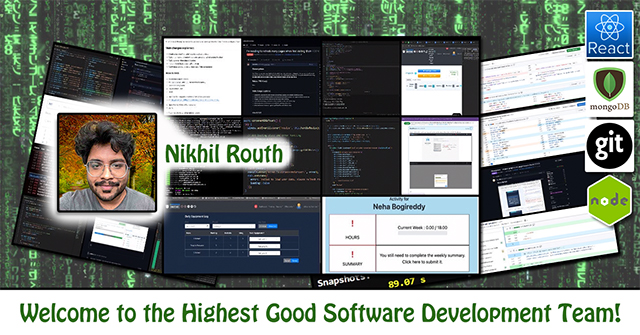
Nikhil is a passionate software developer with over 5 years of professional experience in full-stack development, test automation, and Guidewire platform engineering. A former full-stack developer at Capgemini, he has worked on large-scale enterprise applications, contributing to robust automation frameworks, building microservices, and developing end-to-end software solutions. He recently graduated with a Master’s in Computer Science from Virginia Tech, where he further strengthened his skills in Java, Python, scalable applications, and Agile methodologies. As a member of the One Community team, he is leading the migration of a high-impact internal application—the Highest Good Network (HGN)—from traditional CSS to a modular CSS architecture, enhancing maintainability, scoping, and scalability across components in a large codebase. Nikhil is dedicated to building efficient, scalable systems and enjoys collaborating in dynamic environments where he can continuously learn and grow.
WELCOME TO THE TEAM NIKHIL!
FOLLOW ONE COMMUNITY’S PROGRESS (click icons for our pages)
INVESTOR PAGES
GET INVOLVED
Self-replicating Highest Good Creation – One Community Weekly Progress Update #641
Posted on June 30, 2025 by One Community Hs
At One Community, we are pioneering self-replicating Highest Good creation that demonstrates sustainable approaches to food, energy, housing, education, economics, social architecture, fulfilled living, and global stewardship practices. Built entirely by an all-volunteer team, everything we’re developing is open source and free-shared to support global collaboration and inspire teacher/demonstration hubs around the world. By evolving sustainability and regenerating our planet, we are working to create a world that works for everyone—guided always by the purpose of The Highest Good of All. This is the June 30th, 2025 edition (#641) of our weekly progress update detailing our team’s development and accomplishments.
- Here’s our project overview
- Here’s our world-change methodology
- Here’s how this becomes self-replicating
- Here’s how we are open source and free-sharing all the do-it-yourself designs

OUR MAIN OPEN SOURCE HUBS
Click on each icon to be taken to the corresponding Highest Good hub page.
One Community’s physical location will forward this movement as the first of many self-replicating teacher/demonstration communities, villages, and cities to be built around the world. This is the June 30th, 2025 edition (#641) of our weekly progress update detailing our team’s development and accomplishments:
Self-replicating Highest Good Creation
One Community Progress Update #641
DONATE | COLLABORATE | HELP WITH LARGE-SCALE FUNDING
CLICK HERE IF YOU’D LIKE TO RECEIVE AN EMAIL EACH WEEK WHEN WE RELEASE A NEW UPDATE
YOU CAN ALSO JOIN US THROUGH SOCIAL MEDIA
ONE COMMUNITY WEEKLY UPDATE DETAILS
HIGHEST GOOD HOUSING PROGRESS
 One Community is pioneering self-replicating highest good creation through Highest Good housing that is artistic and beautiful, more affordable, more space efficient, lasts longer, DIY buildable, and constructed with healthy and sustainable materials:
One Community is pioneering self-replicating highest good creation through Highest Good housing that is artistic and beautiful, more affordable, more space efficient, lasts longer, DIY buildable, and constructed with healthy and sustainable materials:
- Learn about: Our Upcoming Crowdfunding Campaign
- Learn about the different village models: 7 Sustainable Village Models
- Visit the open source portals for the first two: Earthbag Village OS Hub | Straw Bale Village OS Hub
This week, Adil Zulfiquar (Engineer) worked on adding and formatting additional content to the Vermiculture Toilet website document, including updates to the slider design, related calculations, and the new version 2 design. He overhauled the operation and maintenance section to include detailed operating procedures. He also collected and compiled a folder of vermiculture design materials for use by the graphics team and participated in discussions with the team regarding the 2D architectural design of the vermiculture system. One Community’s open source launch of self-replicating highest good creation begins with Earthbag Village, the first of seven planned villages providing housing. See below for some of the pictures related to this work.
Karthik Pillai (Mechanical Engineer) worked on the final report for the Earthbag Village 4-dome cluster roof project, incorporating finite element analysis results from earlier stages and refining the structure of the report to align with the finalized roof design and selected materials. This ensured the report clearly presents the design rationale, analytical support, and material choices in a logical and coherent manner. In parallel, he contributed to the design development of the Vermiculture Toilet facility, focusing on the new drawer mechanism. This involved examining options for the drawer’s side-opening feature, which remains under discussion with the team as various design constraints and functional requirements are being considered. Additionally, he was involved in reworking the waste dumping mechanism for the same facility, evaluating modifications to improve efficiency and usability, with the aim of completing this component within the next couple of weeks. As the first of seven planned villages, the Earthbag Village provides the initial housing within One Community’s open source designs for self-replicating highest good creation. See the work in the collage below.
Ketsia Kayembe (Civil Engineer) worked on bringing the three-dome plans to a construction-ready level for the Earthbag Village. She identified the files that needed updates and added details such as correct naming, formatting, and symbols. She reviewed the template and tutorial to compare the drawings and ensure they were consistent with the requirements and standards. One Community’s open source framework of self-replicating highest good creation begins with Earthbag Village, the first of seven planned villages providing housing. See below for some of the pictures related to this work.
Michaela Silva (Architect) continued working on finalizing the interior of the Earthbag Village. She compiled the applicable plumbing code requirements for the roof drainage system and advanced the roof details in the construction documents. She created a new sheet for the roof plans, including an insulation plan and a pedestal plan that show the roof layers. She also completed the loft framing plan and placed it on structural sheet A103. The Earthbag Village is the first of seven villages to be built as part of One Community’s open source model for self-replicating highest good creation. See her work in the collage below.
Tejas Chhajer (Mechanical Engineer) finished the onboarding orientation and began work on the Vermiculture Toilet. Work continued on the AutoCAD floor plan of the vermiculture assembly, including a review of progress during a call with Adil. It was identified that the units of the dimensions needed to be updated to align with U.S. standards. In addition, a new task was assigned involving the design of a removable drawer end to enable easier disposal of waste from the vermiculture toilet. One Community’s open source launch of self-replicating highest good creation begins with Earthbag Village, the first of seven planned villages providing housing. See below for some of the pictures related to this work.
DUPLICABLE CITY CENTER PROGRESS
 One Community is pioneering self-replicating highest good creation through a Duplicable and Sustainable City Center that is LEED Platinum certified/Sustainable, can feed 200 people at a time, provide laundry for over 300 people, is beautiful, spacious, and saves resources, money, and space:
One Community is pioneering self-replicating highest good creation through a Duplicable and Sustainable City Center that is LEED Platinum certified/Sustainable, can feed 200 people at a time, provide laundry for over 300 people, is beautiful, spacious, and saves resources, money, and space:
- Learn about this building and it’s function: Duplicable City Center Open Source Hub
This week, Andrew Chen (Industrial Designer) continued working on the dormer second-floor window for the Duplicable City Center. He spent time repairing 3D model errors and worked on upgrading the model. New guidance parts were introduced at the base of the window frame to assist with smoother assembly and reduce the need for complicated measurements. He also continued developing the assembly instructions and adjusted the presentation layout to improve visual communication. The Duplicable City Center showcases One Community’s open-source contribution to self-replicating highest good creation. Browse the visuals below.
Ariana Virginia Gutierrez Doria Medina (Industrial Designer) has continued the analysis and cost estimation of the windows for the Duplicable City Center. She worked on the modifications suggested to improve the first documents submitted. Some of these changes included reducing the amount of text, updating the displayed measurements to use fractions instead of decimals, adding providers and images to clarify the assembly process, among other adjustments to maintain the style of the Murphy Bed presentation. Explore how the Duplicable City Center reflects One Community’s open-source approach to self-replicating highest good creation. Check out the photos below.
Nupur Shah (Mechanical Engineer) reworked the Row 2 assembly with new team members and guided them through the ongoing tasks to help them align with the project goals. Due to inconsistencies and missing references in earlier files, all the related part and assembly files for Row 2 had to be recreated from scratch. This involved remaking each component and ensuring proper alignment and positioning in the overall assembly. Conversations with Manjri provided additional clarity on her file structure and design choices, which informed the revisions. As part of the process, adjustments were made to improve how angles and connections were visualized. The next focus will shift toward the beam elements, which will be integrated based on the newly updated Row 2 structure. One Community’s Duplicable City Center is an open-source model for self-replicating highest good creation. Browse the images below.
Sandesh Kumawat (Mechanical Engineer) worked on understanding the design requirements and functional considerations for a spa cover, including exploring insulation configurations and reviewing existing concepts such as thermal blanket layering and folding strategies. He focused on developing a motion mechanism that would allow the spa cover flaps to fold while remaining parallel to the surface, ultimately formulating and modeling a four-bar parallelogram linkage to achieve this motion. Multiple iterations were considered in SolidWorks to refine the placement and length of the linkage arms for correct motion. The formulation included defining the coordinate positions of pivot points and validating that the flap would remain horizontal throughout the motion using equal-length arms. A motion simulation and sketch diagram were created to support the kinematic design, and kinematic equations for position and velocity were also developed for the final concept. Through open-source design, the Duplicable City Center represents a path to self-replicating highest good creation. Browse the photos below to explore this work.
Shu-Tsun (Engineer) continued working on the Duplicable City Center by dedicating her time to conducting the structural and frame analysis of the City Center dome using Autodesk Inventor, as well as working on the spreadsheet for which she is responsible. She has done performed a snow load analysis using real project data to validate and further refine her updated structural model. Her analysis involved detailed simulations and evaluations to ensure the model’s accuracy and reliability under various loading conditions. She also carried out a comparative study of snow loads on different roof geometries, paying special attention to the structural behavior and load distribution differences between flat and dome-shaped roofs. In addition to her technical work, Shu-Tsun dedicated time to drafting the final report. The open-source Duplicable City Center supports One Community’s mission of self-replicating highest good creation. Check out the photos below.
Srujan Pandya (Mechanical Engineer) continued helping with the Duplicable City Center FEA analysis. Updates were made across multiple sections of the dome documentation. The write-up for the DIY Modular Window Designs was reviewed, and a section for integration into the main report was introduced. New headings were added to the main table of contents, and internal links were adjusted to match the site’s formatting conventions. Descriptive images replaced tabular data where applicable, and partial graphics were inserted to assist non-technical readers. A clarification was added about the reduction in unique hub connectors under vertical loads. Source spreadsheet links were included multiple times within relevant sections to improve accessibility. One Community’s open-source Duplicable City Center exemplifies a blueprint for self-replicating highest good creation. Browse the visuals below.
HIGHEST GOOD FOOD PROGRESS
 One Community is pioneering self-replicating highest good creation through Highest Good food that is more diverse, more nutritious, locally grown and sustainable, and part of our open source botanical garden model to support and share bio-diversity:
One Community is pioneering self-replicating highest good creation through Highest Good food that is more diverse, more nutritious, locally grown and sustainable, and part of our open source botanical garden model to support and share bio-diversity:
- Learn about the structures: Hoop House Hub | Aquapini & Walipini Open Source Hub
- See what we’ll be growing: Gardens & Hoop Houses | Large-scale Structures | Food Forest | TA
This week, the core team continued updating the shortened abbreviations on the Master Tools, Equipment, and Materials/Supplies document by individual project name and eliminated additional duplicate and unnecessary information. The project names were alphabetized, and all acronyms were finalized and approved by the executive director to ensure consistency between the Master Tools, Equipment, Materials/Supplies document and the website. The Highest Good Food initiative is a key component of One Community’s open source plans, focused on self-replicating highest good creation, and exemplifies the organization’s commitment through innovative design and implementation. Below are some of the images showcasing this work.
Chelsea Mariah Stellmach (Project Manager) continued her work on the Transition Food Self-sufficiency Plan menus and customization spreadsheets. She updated content from the original Food Procurement and Storage Plan webpage and integrated it with Tanmay’s report, including the case study on Mariposa, California. She removed redundant content, provided instructions for backing up videos, adjusted formatting to meet current guidelines, and cleaned up the icon hyperlinks. As an essential aspect of One Community’s open source goals, the Highest Good Food initiative supports self-replicating highest good creation as a foundation for sustainable living. Below are some of the images showcasing this work.
Dirgh Patel (Volunteer Mechanical Engineer) continued assisting with the Climate Battery design evolutions. He edited the final report by adding detailed explanations about soil properties, underground temperature, and the key factors that influence them, replacing some images with written descriptions. He included the concept of convection with clarification of the value used in the simulation and added boundary condition explanations for better understanding. He specified where temperature and convection were applied in the model due to fan-induced airflow. In the results section, he added explanations for all four summer scenarios: warmest day, warmest night, coldest day, and coldest night. Dirgh also added corresponding thermal simulation analyses for the four winter scenarios and included a detailed explanation in the conclusion to help interpret all eight cases. One Community’s open source mission is powerfully reflected in the Highest Good Food initiative, which is focused on advancing self-replicating highest good creation for global benefit. The following visuals highlight key outcomes of this initiative.
Faeq Abu Alia (Architectural Engineer) continued his work on the Earthbag Village. He modeled the southeastern region in SketchUp and exported the model to Lumion, where initial renderings were generated. Following feedback on the southwest region, he updated the Lumion scenes to incorporate terrain features and vegetation, adjusted material settings to match design specifications, and integrated human figures to provide scale in the visuals. One Community’s open source launch of self-replicating highest good creation begins with Earthbag Village, the first of seven planned villages providing housing. See below for some of the pictures related to this work.
Jay Nair (BIM Designer) continued working on Aquapini and Walipini Planting and Harvesting lighting and HVAC design. He proceeded with the lighting energy calculations for the individual zones in Greenhouse Walipini 1. He incorporated updated fixture specifications and zone-specific data to adjust the calculations accordingly. The work aimed to ensure that energy estimates accurately reflect the requirements of each zone while following the standardized format used throughout the project. The Highest Good Food initiative plays a leading role in One Community’s open source platform, promoting self-replicating highest good creation through sustainable and participatory development. Below are some of the images showcasing this work.
Keerthi Reddy Gavinolla (Software Developer) continued enhancing the Highest Good Food page by adding content focused on small-business and urban community solutions. She worked on the Soil Amendment page, cross-checked both the Google Document and the website, and edited the content based on identified differences. Keerthi struck outdated text, updated formatting, adjusted headings, and fixed bullet points. Her focus was on improving structure and readability to ensure consistency between the source document and the live page. Built on One Community’s open source foundation, the Highest Good Food initiative is dedicated to self-replicating highest good creation, empowering communities through self-sustaining systems. Her contributions are showcased in the collage below.
Pallavi Deshmukh (Software Engineer) continued working on adding the new Zenapini 2 content to the Aquapini and Walipini Planting and Harvesting page. She completed six interviews and submitted the required details. She worked on the permaculture page by integrating GIS content provided by Chris, using the web design tutorial as a reference. She checked that all links and images on the page were functioning as expected. Pallavi also created Blog 640 and reviewed contributions from team members, incorporating their work to ensure consistency across the content. In alignment with One Community’s open source objectives, the Highest Good Food project integrates self-replicating highest good creation into a larger vision of regenerative living. Her contributions are highlighted in the collage below.
HIGHEST GOOD ENERGY PROGRESS
 One Community is pioneering self-replicating highest good creation through Highest Good energy that is more sustainable, resilient, supports self-sufficiency and includes solar, wind, hydro and more:
One Community is pioneering self-replicating highest good creation through Highest Good energy that is more sustainable, resilient, supports self-sufficiency and includes solar, wind, hydro and more:
- Learn about the open source sustainable-energy foundations: Solar, Hydro, and Wind
- Explore our research into the most sustainable products and companies for saving water and energy: Insulation, Eco-laundry, Lightbulbs and Light Bulb Companies, Doors and Door Companies, Windows and Window Companies, Toilets, Faucets and Faucet Accessories, Urinals, and more.
This week, Dishita Jain (Data Analyst) continued supporting the Highest Good Energy research and cost analysis for helping people create their own sustainable futures. Her tasks focused on Energy Infrastructure Cost Analysis and Visualizations, where images were resized to fit the webpage specifications, uploaded to WordPress, and captions were added for each image. This included adjusting image dimensions to 640 pixels and integrating them into the relevant documentation. Additional time was spent reviewing training teams as part of OC Administration tasks, where feedback was provided and a summary with a collage was prepared and added to WordPress for both the Blue Steel team and the Binary Brigade team. One Community’s open source mission is powerfully reflected in the Highest Good Energy initiative, which advances self-replicating highest good creation as a model for global benefit. Below are some of the images showcasing this work.
Shravan Murlidharan (Volunteer Electrical Engineer) started contributing to the Highest Good Energy component by assisting with off-grid and grid-tied solar microgrid design. He worked on understanding and comparing solar energy systems, specifically focusing on grid-tied, off-grid, and hybrid configurations. He studied the differences in system design, cost structure, and energy independence associated with each configuration. As part of his technical review, he applied standard formulas to calculate daily energy consumption using a bottom-up approach based on appliance wattage, usage duration, and quantity. He then used this information to determine the required solar panel capacity and the number of panels needed, incorporating real-world factors such as solar irradiance and derating factors. In addition, he explored battery sizing calculations based on system voltage, amp-hour rating, depth of discharge, and the number of backup days required. This work supports One Community’s mission of self-replicating highest good creation.
Shravan also evaluated commonly used assumptions in solar modeling, including 100% efficiency, constant irradiance, and absence of battery degradation, and proposed additional variables to increase model accuracy. He reviewed the functionality and limitations of different inverter types—grid-tied, off-grid, and hybrid—and analyzed how they impact energy flow, system control, and cost. As part of his research, he watched and summarized educational videos comparing solar system types and inverter configurations, extracting technical points relevant to system selection and usage scenarios. He generated discussion questions based on graphs and assumptions, commented on methodology slides, and prepared formatted calculations for documentation. He began outlining a report titled Grid-Tied vs Off-Grid Solar: Overview from My Perspective, aimed at presenting key technical and economic comparisons from a practical standpoint, including system selection criteria and potential application contexts. Guided by its open source philosophy, One Community developed the Highest Good Energy initiative to pioneer sustainable solutions by self-replicating highest good creation. His contributions are shown in the collage below.
HIGHEST GOOD EDUCATION PROGRESS
 One Community is pioneering self-replicating highest good creation through Highest Good education that is for all ages, applicable in any environment, adaptable to individual needs, far exceeds traditional education standards, and more fun for both the teachers and the students. This component of One Community is about 95% complete with only the Open Source School Licensing and Ultimate Classroom construction and assembly details remaining to be finished. We’ll report on the final two elements to be finished as we develop them. With over 8 years of work invested in the process, the sections below are all complete until we move onto the property and continue the development and open sourcing process with teachers and students – a development process that is built directly into the structure of the education program and everything else we’re creating too:
One Community is pioneering self-replicating highest good creation through Highest Good education that is for all ages, applicable in any environment, adaptable to individual needs, far exceeds traditional education standards, and more fun for both the teachers and the students. This component of One Community is about 95% complete with only the Open Source School Licensing and Ultimate Classroom construction and assembly details remaining to be finished. We’ll report on the final two elements to be finished as we develop them. With over 8 years of work invested in the process, the sections below are all complete until we move onto the property and continue the development and open sourcing process with teachers and students – a development process that is built directly into the structure of the education program and everything else we’re creating too:
- Program Overview: Education Open Source Hub
- How the components work together in designing human orchestrated eco-abundance: How to use the Education for Life Program
- Lesson Plans for Life – Lesson Plans How-to
- Foundations of Outstanding Leaders, Teachers, and Communicators
- Curriculum for Life
- Teaching Strategies for Life
- Learning Tools and Toys for Life
- Evaluation and Evolution
This week, Harshitha Rayapati (Program Manager) continued work on detailing deliverables for the Highest Good Education software platform, outlining various components, developing Figma designs, and expanding the visual layout of the student dashboard. She provided detailed comments on various sections of the student dashboard design files, including the knowledge evolution view, past lessons view, and detailed activity view. She contributed to enhancing the evaluation results page by expanding its component documentation and aligning its features with the teacher portal’s grade posting tool. Harshitha also worked on the “build a lesson plan” view, offering suggestions to refine the layout and functionality. Feedback was given on Ravi’s student dashboard designs to ensure consistency with the software component documentation. In addition, she compiled the weekly blog update, reviewed the Housing Team’s progress, edited the blog page, and created a visual collage for the update. The One Community model of self-replicating highest good creation, exemplified by sustainably built classrooms like this, represents sustainable change for the whole planet. See the collage below for her work.
Mai Mohamed (Electrical Engineer) continued working on drawing the building and its rooms, determining the story heights, and establishing the scale and X-Y coordinates to add spaces identified as classrooms. She generated the report using the documentation menu by navigating to the reporting section of the software, selecting the relevant project data, configuring the output settings to match the required specifications, and reviewing the selected content for consistency. She finalized the process by exporting the report in the correct format and saving it for internal team use. Sustainably built classrooms like this exemplify the One Community model of self-replicating highest good creation driving global sustainable change. See the collage below for her work.
HIGHEST GOOD SOCIETY PROGRESS
 One Community is pioneering self-replicating highest good creation through a Highest Good society approach to living that is founded on fulfilled living, the study of meeting human needs, Community, and making a difference in the world:
One Community is pioneering self-replicating highest good creation through a Highest Good society approach to living that is founded on fulfilled living, the study of meeting human needs, Community, and making a difference in the world:
- Read the Highest Good society overview: Highest Good Society
- Learn about the model for fulfilled living and sharing: A Day in the Life
- Learn about the 4 economic models: RBE | For-profit | Non-profit | Entrepreneurship
- Learn about our open source community collaboration and management software: The Highest Good Network
This week, the core team completed over 44 hours managing One Community’s volunteer-work review not included above, emails, social media accounts, web development, new bug identification and bug-fix integration for the Highest Good Network software, and interviewing and onboarding new volunteer team members. They also shot and incorporated the video above that explains how self-replicating highest good creation is a foundation of the bigger picture of everything One Community is doing. The image below shows some of this work.
Govind Sajithkumar (Project Manager) continued focusing on analytics and content management for Facebook and Instagram on Meta platforms. He handled the weekly content cycle for Meta platforms by preparing, scheduling, and publishing new posts for Facebook and Instagram. He populated the content calendar and logged all post information, including metadata and media types, in the Open Source tracking spreadsheet. Govind also completed the weekly update for the social media analytics spreadsheet, refreshing it with the latest audience demographics, performance metrics, and engagement statistics for both platforms. Additionally, he performed PR Review Team Management by providing feedback on team members’ documents, updating the WordPress site with the team’s weekly summary and collage, and filling in the PR Review Team Table and HGN PR spreadsheet. This effort supports One Community’s broader mission of self-replicating highest good creation. The images below showcase some of this work.

Jaiwanth Reddy Adavalli (Project Manager) continued developing the Job Applicants page along with components of the Highest Good Network Phase 2 and Phase 4 dashboards, including the PR Team analytics section. He focused on testing several PRs in the Highest Good Network software and continued work on the development of the PR Review Team Analytics software and dashboard. He updated the corresponding Figma wireframes, made changes to some action items, and discussed task management of the Analytics software with Neeharika. As part of the PR Review Team, Jaiwanth reviewed the pull requests of the volunteer team assigned to him. This project plays an important role in One Community’s commitment to self-replicating highest good creation. The following images show his work for the week.
ADMINISTRATION TEAM
The Administration Team summary, covering their work administrating and managing most of One Community’s ongoing process for self-replicating highest good creation was managed by Bhakti Tigdi (Project Manager) and includes Anuneet Kaur (Administrator), Himanshu Mandloi (Engineering Project Manager), Khushie Zaveri (Communication Strategist), Neeharika Kamireddy (Data Analyst), Olawunmi “Ola” Ijisesan (Administrative and Management Support), Olimpia Borgohain (Data Analyst and Team Administrator), Rachna Malav (Data Analyst), and Rishi Sundara (Quality Control Engineer and Team Administrator). The Highest Good Network software is how we will be managing and objectively measuring our process for self-replicating highest good creation through our social architecture, construction, production, and maintenance processes.
This week, the Administration team contributed to various operational, communication, and content tasks that supported the organization’s project management, outreach, and sustainability goals. Anuneet researched resources for sustainable insulation, updated and optimized web content and graphics based on team feedback, managed volunteer bios, and began drafting content for the Licensing and Accreditation page of the Highest Good Education Program. This progress is part of One Community’s work toward self-replicating highest good creation. Himanshu reviewed daily timelogs, followed up with team members on pending tasks, adjusted time entries as needed, and created a new construction-related task for the Earthbag Village project. He also developed a blog post and reviewed admin evaluations. Khushie expanded the metric system social media campaign with platform-specific content, added calls to action, coordinated graphics requests, and handled weekly admin tasks like editing summaries and backend documentation formatting. This contribution aligns with One Community’s mission of self-replicating highest good creation.
Neeharika monitored task assignments for the software development team by reviewing estimated hours and assigning work accordingly, tested pull requests, and completed her admin responsibilities. Ola supervised the pull request team, managed folder and image uploads, maintained admin team workspaces, and updated documentation to ensure reporting consistency. Olimpia worked on App Script development to automate post tracking for the social media dashboard, completed admin duties, and corrected issues in her blog content. Rachna focused on ongoing SEO content updates and responded to team communications but did not conduct interviews due to scheduling conflicts. Rishi created and uploaded team collages, consolidated individual blogs into the main weekly post, completed SEO work, and tested several development pull requests while assigning follow-ups for pending items. This work contributes to One Community’s commitment to self-replicating highest good creation. See below to view images of their work.
GRAPHIC DESIGN TEAM
The Graphic Design Team’s summary includes Aurora Juang (Graphic Designer), Junyuan Liu (Graphic Designer, UI/UX Designer), Yulin Li (Graphic Designer), Qinyi Liu (Graphic Designer), and Rutal Deshmukh (Graphic Designer), covering their work on graphic designs for self-replicating highest good creation.
This week, Aurora produced 12 social media posts, maintaining brand consistency and supporting audience interaction as part of the self-replicating highest good creation. The content aligns with the brand’s tone and contributes to a cohesive feed. Junyuan created social media content by collecting images, exploring design options, and adjusting the layout for the “Most Sustainable” image. He also documented key details for the next designer and explored ideas for future image creation. Rutal updated previous social media graphics, created new ones along with Metric Campaign logo variations for Week 4, and contributed to self-replicating highest good creation. She saved all work in the respective folders and is waiting for feedback.
Yulin created social media posters from village renderings, applied formatting standards, and submitted them for feedback. Qinyi began work on Wednesday, reviewed materials, and identified missing details like login access and photo requirements, while contributing to self-replicating highest good creation. She created and refined a game-style social media image in Photoshop, adjusting visuals and layout based on feedback and suggestions. See the Highest Good Society pages for more on how this contributes to self-replicating highest good creation. See the collage below to view some of their work.
HIGHEST GOOD NETWORK PROGRESS
 One Community is pioneering self-replicating highest good creation through open source Highest Good Network® software that is a web-based application for collaboration, time tracking, and objective data collection. The purpose of the Highest Good Network is to provide software for internal operations and external cooperation. It is being designed for global use in support of the different countries and communities replicating the One Community sustainable village models and related components.
One Community is pioneering self-replicating highest good creation through open source Highest Good Network® software that is a web-based application for collaboration, time tracking, and objective data collection. The purpose of the Highest Good Network is to provide software for internal operations and external cooperation. It is being designed for global use in support of the different countries and communities replicating the One Community sustainable village models and related components.
- Learn about our open source community collaboration and management software: The Highest Good Network
This week, the core team continued their work on the Highest Good Network pull requests and confirmed the following fixes: the modal now closes when clicking outside (#3379); the timeZone property was added to User Management in the frontend (#3393 and #1320); the custom carousel was replaced with Bootstrap’s carousel (#3363); updates were made to the project title, sorting task button, and spacing between the back button and return title (#3415); the issue with exporting badges to PDF was resolved (#3306); projects can now be deleted from the project page (#3417); insights for event personalization were created (#3133); and UI changes were implemented in a hotfix (#3422). This action reflects One Community’s dedication to self-replicating highest good creation.
The following issues remain unresolved: code replacement for inactive users (#3398 and #1324); user permissions for resetting and changing passwords (#2860 and #1146); and accuracy of first and last day data with auto-refresh on deactivation, for which issues were documented in a video (Bhavpreet PR3176 and PR3387). Additional work included assigning tasks to four volunteers, creating a record for the issue where a user with the appropriate permissions could not reset or change another user’s password, and noting that testing could not be completed for PR #1222 (fix lead team badge auto-assignment) due to a bug preventing the creation of a new team. These efforts represent incremental progress in helping people create their own sustainable futures. See the Highest Good Society and Highest Good Network pages for more on how this aligns with One Community’s commitment to self-replicating highest good creation. The collage below shows some of this work.
ALPHA SOFTWARE DEVELOPMENT TEAM
The Alpha Software Team, covering their progress on the Highest Good Network software, was managed by and includes Nikita Kolla (Full Stack Developer) and Varun Reddy Mogili (Software Engineer). This software is an internal management and communication platform with the goal of self-replicating highest good creation.
This week, Varun resolved merge conflicts in pull requests #1412 and #3554, fixed test failures, and improved report generation to stabilize the weekly summary reporting system, supporting the self-replicating highest good creation. He addressed conflicts between the development branch and his branch to ensure both sets of features functioned correctly. Nikita addressed the processing of Core Team members’ additional hours by identifying issues in the codebase, learning the bulkwrite function, and creating a standalone Python snippet to later convert into JavaScript. See the Highest Good Society and Highest Good Network pages to learn more on how this relates to self-replicating highest good creation. See some of the team’s work in the collage below.
BINARY BRIGADE SOFTWARE DEVELOPMENT TEAM
The Binary Brigade Team’s summary, overseeing advancements in the Highest Good Network, was managed by Aureliano Hubert Maximus (Volunteer Software Engineer) and includes Amalesh Arivanan (Software Engineer), Anirudh Sampath Kumar (Software Developer), Geeta Matkar (Software Engineer), Jaissica Hora (Software Engineer), Nikhil Routh (Software Engineer), Ramsundar Konety Govindarajan (Software Engineer), Vamshi Gutha (Full-Stack Developer), and Samman Baidya (Software Engineer). The Highest Good Network software is how we’ll be managing and objectively measuring our progress in self-replicating highest good creation through our social architecture, construction, production, and maintenance processes.
This week, Jaissica reviewed and reported several high-priority issues ahead of the next production release, including a bug where the “Share PDF” button broke the Total Construction Summary page. She reviewed the UI/UX elements on that page, documented related issues, resolved a major merge conflict on the main branch, addressed linting errors, and fixed failing tests. Samman began work on a Phase III task involving both front-end and back-end development for an event reschedule button. He reviewed the prior pull request, added the button near event details, set up the modal structure, and began implementing logic to handle dynamic date inputs and create necessary endpoints. Nikhil migrated legacy CSS files to CSS Modules, updated JSX files, resolved merge conflicts in PRs 3639, 3640, 3643, and 3644, and merged changes to development. Vamshi built a line chart component for the Phase 2 Summary Dashboard to visualize injury trends over time, enabling filtering by project and date with severity levels color-coded and responsive layout adjustments. This result is in line with One Community’s pursuit of self-replicating highest good creation.
Sabitha explored Chart.js for a horizontal bar graph, scaffolded the backend with new routes, added role-based pledge logic, encountered a frontend issue while wiring up the Bitly UI, and continued building the Bitly-posting interface. Anirudh finalized multiple pull requests—PRs 3079, 2989, 1850, and 1793—in preparation for his departure by resolving merge conflicts and addressing reviewer comments. Amalesh resolved merge conflicts for PRs 1444 and 3573, rewrote test cases for a new PR 1480, debugged code, fixed the Projects/People/Teams page design for narrow screens, documented with screenshots and videos, and ensured onboarding compliance. Ramsundar fixed an issue in the “Current Week: a/b” component so data displays only for the user’s own page, resolved a Project page rendering issue caused by invalid HTML structure introduced in PR 3520, and addressed a refresh-related bug that redirected users to the dashboard by ensuring permission data is retained. Geeta investigated people report miscalculations for users logging more than 10 hours, reviewed the frontend and backend logic, updated the count logic, and adjusted the layout for half-screen display. See the Highest Good Society and Highest Good Network pages to learn more about how this work relates to self-replicating highest good creation. View some of the team’s work in the collage below.
BLUE STEEL SOFTWARE DEVELOPMENT TEAM.
The Blue Steel Team’s summary, presenting their work on the Highest Good Network software, was managed by Sheetal Mangate (Software Engineer) and includes Humemah Khalid (Software Engineer/Backend Developer), Linh Huynh (Software Engineer), and Ramakrishna Aruva (Software Engineer). The Highest Good Network software is how we’ll be managing and objectively measuring our process for self-replicating highest good creation.
This week, Humemah worked on creating the “Interact with Set Final Day Button” permission as part of PR3245. This new permission was added under the Permissions Management > User Management section and is designed to control access to the “Set Final Day” button found on a person’s profile under Basic Information > End Date. The permission can be assigned to both individuals and roles and is enabled by default for Admin and Owner roles. When active, it allows users to view and interact with the “Set Final Day” button. This task supports the self-replicating highest good creation framework led by One Community. Linh completed unit tests for two controller files in the backend of the HGN application. For the file bmMaterialsController.js, all test cases were implemented and validated. For emailController.js, Linh resolved test issues related to the cheerio library and mocked the HTML parsing behavior. A new branch for inventoryController.js was then created and pushed, where 55 unit test cases were designed and implemented across five parts. These tests covered major logical branches such as permission checks, valid and invalid input scenarios, database errors, and conditional logic for creation and updates. Most of the tests are passing, with the remaining ones being debugged due to mocking inconsistencies and module path issues. Multiple commits were made to track progress and reflect partial completion. This work ties into One Community’s broader self-replicating highest good creation model.
Ramakrishna identified a design issue in previous work where summary data was stored in an array, leading to potential duplicate keys. To address this, the UserProfile model was refactored to use a map for storing summarySubmissionDates, and a new method was added separately to maintain clarity. A new router was created for the updated API endpoint, followed by testing and a pull request submission. He also updated the frontend components to connect them with the revised backend API and resolved merge conflicts in a previous pull request by switching to the affected branch and pushing the updated changes. Sheetal worked on Reddit application-only OAuth and found that it provides only read access, which results in an error when attempting to post due to missing user-context authorization. Since submitting a post requires browser interaction and a redirect URL, she began exploring how to implement OAuth with user authentication. See the Highest Good Society and Highest Good Network pages to learn more about how their work contributes to self-replicating highest good creation. See below to view images of their work.
CODE CRAFTERS SOFTWARE DEVELOPMENT TEAM
The Code Crafters Team, covering their work on the Highest Good Network software, was managed by Sai Moola (Software Engineer) and includes Ashrita Cherlapally (Software Engineer), Dhrumil Dhimantkumar Shah (Software Engineer), Greeshma Palanki (Software Engineer), Humera Naaz (MERN developer), Rahul Bagul (Software Engineer), Ravikumar Sripathi (Software Engineer), and Sundar Machani (Software Engineer). The Highest Good Network software is how we’ll manage and objectively measure our process for establishing abundant community systems through our social architecture, construction, production, and maintenance processes. This work ties into One Community’s broader self-replicating highest good creation model.
This week, Ashrita worked on implementing a job analytics dashboard that visualizes application counts across roles using a horizontal bar chart. She created a backend route to support filtering by date range, selected roles, and time granularity, and integrated it with the frontend using dynamic API queries. On the frontend, she addressed rendering problems by dynamically adjusting the chart height based on data length and repositioning the Y-axis title to avoid overlapping labels. This task supports the self-replicating highest good creation framework led by One Community. Dhrumil focused on unit testing, completing test cases for AddMaterial.jsx in PR #3708 and implementing necessary changes for AddTeamMember.jsx, submitted under PR #3695. Greeshma implemented a reusable canUserEditTask utility function to enforce role-based edit permissions, and it was integrated into task-related components to restrict unauthorized edits and display relevant messages. A runtime error caused by attempting to access properties of an undefined object, which was preventing the webpage from loading, was resolved by updating the useEffect logic. This work contributes to One Community’s commitment to self-replicating highest good creation. A SyntaxError: Unexpected token ‘<‘ resulting from an HTML error page being treated as JSON was also addressed by fixing the related fetch request. Work was initiated on PR2196, focusing on updating the logic to automatically assign a user’s end date based on the last day of the week they logged hours. This effort supports One Community’s focus on self-replicating highest good creation. Humera implemented backend logic for function streak badge assignment and added commit protection to critical badge scheduler functions through Husky in PR #1479. The logic included badge incrementing, replacement, and conditional removal or decrement of lower-level badges, with testing facilitated via local setup and Postman. She also documented the procedure for verifying commit protection by attempting to modify protected functions. This work ties into One Community’s broader self-replicating highest good creation model.
Rahul worked on automating user access management across Dropbox, Slack, Sentry, and GitHub, starting with backend investigation and issue resolution. He acquired necessary credentials, validated API functionality, and restructured the frontend UI to improve usability. Features added include individual and bulk invite and revoke options, along with a new MongoDB schema to track user invite status, enabling real-time access visibility in the UI and preparing the feature for team testing. This contribution aligns with One Community’s mission of self-replicating highest good creation. Ravi focused on enhancing the UI of the Activity Page to improve user experience and functionality. He introduced a clear separation between the unit and section selection components, making the navigation process more intuitive. The individual sub-task progress bar was removed to streamline the interface. He updated the dropdown menus for both unit and section selections, ensuring that once both are selected, the relevant sub-tasks and their associated progress bars appear dynamically. Ravi also added new UI elements, including buttons for uploading documents, accessing external or internal links, and redirecting users to the comments and feedback sections. Furthermore, he redesigned the upload and comments pages for a more user-friendly experience. Notably, he implemented a feature in the feedback section that allows students to submit comments anonymously. This progress is part of One Community’s work toward self-replicating highest good creation. Sai worked on the Phase 2 Summary Dashboard by completing the frontend for a bar graph visualizing project risk profiles using react-select for dropdowns, then shifted to backend development by creating a new schema linked to the issues schema, building a controller to handle CRUD operations and profile generation, and verifying the endpoints, with continued work on the getRiskProfileSummary endpoint. Sundar worked on resolving merge conflicts in PRs #3675, #3609, and #3433 in the HighestGoodNetworkApp repository, as well as PRs #1409, #1503, and #1502 in the HGNRest repository. He also assisted a peer with fixing CI build failures in PRs #3609 and #3675. He continued development on dark mode support for BM dashboard components, focusing on the material list page, and completed coding and testing for PR #1228, though production build issues remain. Additionally, he completed updates to badge scheduler logic functions, including checkPersonalMax, checkMinHoursMultiple, checkTotalHrsInCat, checkXHrsForXWeeks, and checkNoInfringementStreak, and pushed the changes to PR #1479. This action reflects One Community’s dedication to self-replicating highest good creation. See the Highest Good Society and Highest Good Network pages for more on how this relates to self-replicating highest good creation. View some of the team’s work in the collage below.
DEV DYNASTY SOFTWARE DEVELOPMENT TEAM
The Dev Dynasty Team’s summary, covering their work on the Highest Good Network software, was managed by Zhifan Jia (Software Engineer) and includes Dharmik Patel (Software Engineer), Manvitha Yeeli (Software Engineer), Mohan Satya Ram Sara (Software Engineer), Shraddha Shahari (Software Engineer), Vamsi Krishna Rolla (Software Engineer), and Vaibhav Koladiya (Software Engineer). The Highest Good Network software is how we’ll manage and objectively measure our process for establishing abundant community systems through our social architecture, construction, production, and maintenance processes.
This week, Dharmik finalized the implementation of the team code filter set functionality associated with PR1274. He addressed multiple backend issues, including saving filter sets to the database and modifying the character limit for filter names from five to seven. He also applied several fixes based on feedback provided earlier in the week, such as refining the backend logic and ensuring proper persistence of saved filters. This action reflects One Community’s dedication to self-replicating highest good creation. Dharmik continued testing the backend changes across several days and completed the weekly summary and video documentation for the work done. Manvitha fixed an issue in PR3697 where start and end dates showed as “N/A” in the People Report due to missing data and resolved a display problem in PR3670 by updating selector logic to group time entries by projectId for correct pie chart rendering. She created a PR Review Team Analytics Dashboard with two charts, implemented a shared dropdown duration filter, removed redundant internal filters, styled the charts, and added scroll support. She attempted to integrate the reviewers chart API but encountered authorization issues and contacted the team for clarification. This result is in line with One Community’s pursuit of self-replicating highest good creation. Mohan addressed duplicate time entry issues by implementing backend logic to detect overlapping entries for the same task and date, returning conflict messages, and modifying the frontend to trigger checks and show alerts or modals for user confirmation. He added a confirmation mechanism for overriding entries, evaluated database indexing options, ran data migration scripts, tested rollback strategies, and wrote unit tests for validation. This outcome is part of One Community’s self-replicating highest good creation approach.
Shraddha worked on resolving a UI issue caused by conflicting layout styles due to reused class names, confirmed through DOM structure analysis that nested components were inheriting unintended styles, and resolved the issue by separating components, updating class names, and applying proper style scoping. Vaibhav developed and integrated the Longest Open Issues bar chart into the Weekly Project Summary and Construction Summary Report pages, ensuring proper display in dark mode and on various devices, and submitted related frontend and backend pull requests. He also verified functionality in PR-3701 and PR-3707, confirming the timelog icon behavior in User Management and the Timer popout functionality on the dashboard. This progress helps fulfill One Community’s blueprint for self-replicating highest good creation. Vamsi developed the static version of the “Reviewers Ranked by Requirement Satisfied” stacked bar chart using dummy data, including axis labels, color-coded segments, and a legend. He implemented data labels, conditional styling to highlight mentor names in red, added a horizontal scrollbar for overflow handling, and made the layout responsive across screen sizes, completing initial UI testing. This work ties into One Community’s broader self-replicating highest good creation model. Zhifan worked on a bug where the user profile start date did not match the actual start date, added logging to trace the issue, and found that a function overwriting the variable was the cause. He reviewed how timestamps were converted to UTC and updated the system to use Pacific Time for dateOfWork calculations. After clarification, he updated the profile to support switching the data source for the start date, made styling updates, and submitted a pull request. This step supports One Community’s aim to build self-replicating highest good creation systems. See the Highest Good Society and Highest Good Network pages for more on how this relates to self-replicating highest good creation. View some of the team’s work in the collage below.
EXPRESSERS SOFTWARE DEVELOPMENT TEAM
The Expressers Team’s summary, which covers their work on the Highest Good Network, was managed by Casstiel Pi (Software Engineer), and includes Meenashi Jeyanthinatha (Full Stack Developer), Rahul Trivedi (Software Engineer), Reina Takahara (Software Developer), and Strallia Chao (Software Engineer). The Highest Good Network software helps us manage and objectively measure our progress toward self-replicating highest good creation through innovative software development, testing, and collaboration. This week, Casstiel started working on the auto-poster feature for MySpace by reviewing the existing codebase for related functionality and researching MySpace API documentation. He focused on understanding the backend logic required for the implementation and began transitioning into full managerial responsibilities in coordination with Strallia’s temporary absence. Rahul read the documentation and studied the Figma designs to understand the structure and layout requirements for the PR Review Team Analytics Dashboard. He created the initial file and folder structure, developed the base layout of the user interface, and explored React libraries to integrate graph components. He also created UI elements using mock data and applied styling based on the Figma design specifications. This task supports the self-replicating highest good creation framework led by One Community.
Reina resolved merge conflicts in pull requests #3458, #3610, and #3552, then continued developing the skills section of the personal dashboard. She worked on connecting user-submitted job form data to the skills interface and added permission restrictions so that users who had not completed the survey could not access the related page. Meenashi updated the application to pull question data from MongoDB instead of using hard-coded values. This action reflects One Community’s dedication to self-replicating highest good creation. She identified an issue caused by two Mongoose models with different casing that pointed to the same collection and led to type mismatches for the user_id field. After resolving the mismatch, she ensured that new questions on the /hgnform/page5 page saved correctly and appeared on the skills page. A new field called mern_work_experience with a 20-word validation rule was added and now displays properly, although editing is not yet enabled. Strallia investigated inconsistencies between volunteer statistics displayed on the Reports page and the Total Org Summary. She supported a manager-in-training, reviewed PR #3694, and flagged non-functional API requests related to the Total Summaries Submitted component. She also assisted a developer by clarifying backend data for the Volunteer Hours Distribution chart and examined discrepancies in the number of new volunteers shown across reports. See the Highest Good Society and Highest Good Network pages for more on how this contributed to self-replicating highest good creation. See the collage below to view the team’s work.
LUCKY STAR SOFTWARE DEVELOPMENT TEAM
The Lucky Star Team’s summary, which covers their work on the Highest Good Network, was managed by Barnaboss Puli (Volunteer Software Engineer), and includes contributions from Dipti Yadav (Software Engineer), Ganesh Karnati (Software Engineer), and Manoj Gembali (Software Engineer). Their work continued to support our goal of self-replicating highest good creation through collaborative and cross-functional software development. This week, Barnaboss continued backend development of the horizontal bar graph for the Utilization Rate and Downtime of Tools/Equipment component. He addressed multiple issues as part of the Elite Bug-fix Team, including correcting the misalignment of the search bar and dropdown on the User Management page. He also investigated a rendering issue on Tatyana’s profile page, compared JSON requests across accounts to identify discrepancies related to geolocation fields and user ID validity, worked on the Volunteer Hours Distribution Pie Chart, and resolved merge conflicts after a backend update. Dipti worked on task 263 and pull request 1455 concerning the Time Entry Controller. Because the PR lacked a description, she examined the code manually using print statements and a debugger to identify its purpose. She determined that it involved testing the controller’s functionality, reviewed the related test file, and prepared to either update the PR or submit a new one based on her findings. This aligns with One Community’s vision for scalable, self-replicating highest good creation.
Ganesh made improvements to the Loss Tracking Line Chart, adding a Reset Filters option to allow users to clear selected criteria such as material type, year, and date range. He added a no-data message to improve feedback when no results are returned and enhanced the tooltip to show values from all active year lines at any given month, helping with year-over-year comparison. This contribution aligns with One Community’s mission of self-replicating highest good creation. Manoj generated mock data for the Cost Prediction Chart and inserted it into a new MongoDB collection. He then created router, model, and controller files to support two endpoints—one for retrieving all project IDs and another for performing linear regression based on category filters. He tested both endpoints using Postman to confirm proper functionality and data response. See the Highest Good Society and Highest Good Network pages for more on how this relates to self-replicating highest good creation. See the collage below to view the team’s work.
MOONFALL SOFTWARE DEVELOPMENT TEAM
The Moonfall Team’s summary, which covers their work on the Highest Good Network, was managed by Alisha Walunj (Software Engineer), Bhavpreet Singh (Software Engineer), and Shashank Kumar (Software Engineer). The Highest Good Network software is how we’ll manage and objectively measure our progress toward self-replicating highest good creation through innovative software development, testing, and collaboration. This week, Alisha completed the task to prevent the User Management page from redirecting to the dashboard on refresh. She resolved this by updating router permissions to maintain access across roles such as Admin, User, and Manager after state reloads. She raised the associated pull request and began working on a new task to create a display box for confirming promotions as part of the PR Review Team Analytics Dashboard. She designed the component using mock data and configured its routing, uploading screen prints to Dropbox. This contribution is part of One Community’s open-source self-replicating highest good creation system.
Bhavpreet resolved merge conflicts in previously submitted pull requests and started building two new analytics features—one for the job portal and one for pull requests. He created the basic structure and initial frontend page for job portal analytics, implemented a chart component, and established a foundational layout for the pull request analytics section, including one graph. Shashank focused on a deeper investigation into the user data contributing to network delays, revealing a high number of unnecessary API calls and endpoints triggered across multiple pages, which will require further optimization. Work also progressed on the HGN skills component in preparation for a pull request, including the completion of associated reducers and actions. See the Highest Good Society and Highest Good Network pages for more details on how this work supports self-replicating highest good creation. See the collage below to view the team’s work.
REACTONAUTS SOFTWARE DEVELOPMENT TEAM
The Reactonauts Team’s summary, covering their work on the Highest Good Network was managed by Olimpia Borgohain (Data Analyst and Team Admin). The team includes Ghazi Rahman Shaik (Software Engineer Intern), Guirong Wu (Software Engineer), Haocheng Xu (Software Engineer), Kristin Dingchuan Hu (Software Engineer), Mrinalini Raghavendran (Software Developer), Peterson Rodrigues dos Santos (Full Stack Developer), Rishwa Patel (Software Developer) and Siva Putti (Software Engineer). The Highest Good Network software helps manage and objectively measure progress by focusing on self-replicating highest good creation, social architecture, construction, production, and maintenance processes to build sustainable and thriving ecosystems. This solution is portable, scalable, and ideal for off-grid or sustainable living communities.
This week, Ghazi worked on self-replicating highest good creation. He enhanced task assignment in the HGN Software Development project by refactoring components for faster client-side searching, added dynamic member suggestions, standardized data structures, and resolved a critical test failure. Guirong concentrated on automation functionality but experienced delays due to limited dashboard access; she also improved the pop-out window and updated the task modal with creator information and mouseover features. Haocheng identified and fixed a bug that blocked task edits and began addressing issues related to pushing local Git branches. Kristin investigated a bug concerning task visibility for unassigned users, but could not replicate it, and created and tested backend unit tests before submitting her changes for review. This work contributes to One Community’s commitment to self-replicating highest good creation.
Mrinalini finalized the PR Review document and continued work on the hours report feature, addressed calculation errors and integrated new components for tracking hours across people, teams, and projects. She debugged local issues, extended the functionality, and incorporated the changes into the parent component. This effort supports One Community’s focus on self-replicating highest good creation. Peterson resolved a persistent issue with the Teams page, ensuring the “Create New Team” button remained visible after page reloads, improving the user experience. Rishwa implemented a user skill radar chart on the HGN Questionnaire Dashboard, integrated backend survey data, ensuring accurate skill labeling, and made the chart responsive with tooltips for each skill. Siva took over the Team Member Page Search functionality, resolved React component and dropdown import errors, implemented the missing search display logic with error handling, and addressed pull request conflicts based on feedback from other contributors. See below for the work done on self-replicating highest good creation.
SKYE SOFTWARE DEVELOPMENT TEAM
Skye Team’s summary, covering their work on the Highest Good Network was managed by Olimpia Borgohain (Data Analyst and Team Admin) and Anthony Weathers (Software Engineer). The team includes Gopikalakshmi Asok Kumar (Software Developer), Julia Ha (Software Engineer), and Luis Arevalo (Software Engineer). The Highest Good Network software helps manage and objectively continue to support by focusing on self-replicating highest good creation, social architecture, construction, production, and maintenance processes to build sustainable and thriving ecosystems. This solution is portable, scalable, and ideal for off-grid or sustainable living communities.
This week, Anthony continued working on the fixed badge earned icon on Profile page’s task by adding a white border to the summary bar icons that appears on hover and updated the blue square icon to match the hover behavior of other icons while maintaining its redirect to the user profile page. He adjusted the text color of the personal max logged hours to white, improving visibility against the previously implemented purple background. He added logic to reset the red number notification on the blue square icon to zero after a user clicks it, with the number incrementing again when new blue squares are earned. He also ensured the red notification icon can handle triple-digit values if needed. Additionally, he began review of the Edit Task permission for managers to begin evaluating the work needed to be done. This work contributes to One Community’s commitment to self-replicating highest good creation. Gopika worked on the bell notification feature for meetings, merging PR3374 and PR1308, though the merged features did not function as expected. To address this, she created a new branch and repeated the merge process. While running the application, she encountered and resolved several errors. Her focus was on fixing the popup bar that displays upcoming meetings for the next three days, replacing the existing implementation with one similar to the access permission popup bar to improve alignment and add a close function. Gopika also updated the meeting controller to retrieve and display all upcoming meetings within the three-day timeframe, correcting an issue where only the latest notification was shown.
Julia created three integration tests for the isEmailExistsController route and opened pull request 1488 to merge the changes into the development branch. She also worked on implementing a filter feature for selecting teams and individuals on the Weekly Summaries Report page, enabling updates to the pie chart, table, and summary data based on user selections in the Extra Member dropdown. This contribution aligns with One Community’s mission of self-replicating highest good creation. Additionally, she addressed various interface issues on the page, such as toggle and button styling adjustments, and added Select Filter and Save Filter buttons in preparation for future features. Luis completed work on the “generate summary intro” button, which provides information about a lead’s team members if they are out, have not submitted their summary, or have not completed their hours. After debugging and addressing related issues, he informed Jae that the feature was ready for review. During this process, a linting error occurred, and Luis identified the source as a specific pull request and reported it to Jae. The issue was resolved, and the update is now ready to be merged into production. See below for the work done on self-replicating highest good creation. This action reflects One Community’s dedication to self-replicating highest good creation.
SOFTWARE PR REVIEW TEAM A-F
This week, the PR Review Team’s summary for team members with names starting from A–F, covering their work on the Highest Good Network software, was managed by Neeharika Kamireddy (Data Analyst). The Highest Good Network software is a foundation of what we’ll be using to measure our results of self-replicating highest good creation. This week’s active members of this team were: Abdelmounaim Lallouache (Software Developer), and Durga Venkata Praveen Boppana (Software Engineer). They assisted with the research for pioneering self-replicating highest good creation by reviewing all the Highest Good Network PRs (Pull Requests) shared in this week’s update. Learn more about how the Highest Good Network measures self-replicating highest good creation by exploring the Highest Good Network open-source hub. The collage below shows a compilation of the work from this team.
SOFTWARE PR REVIEW TEAM G-N
This week, the PR Review Team’s summary for team members with names starting from G–N, covering their work on the Highest Good Network software, was managed by Govind Sajithkumar (Software Project Manager). The Highest Good Network software is a foundation for measuring our results of self-replicating highest good creation. This week’s active members of this team were: Kedarnath Ravi Shankar Gubbi (Software Engineer), Kurtis Ivey (Full Stack Developer), Marcus Yi (Software Engineer), Nathan Hoffman (Software Engineer) and Neel Singh (Software Engineer). They reviewed all the Highest Good Network PRs (Pull Requests) shared in this week’s update. Learn more about how the Highest Good Network measures self-replicating highest good creation by exploring the Highest Good Network open-source hub. The collage below shows a compilation of the work from this team.
SOFTWARE PR REVIEW TEAM O-Z
This week, the PR Review Team’s summary for team members with names starting from O–Z, covering their work on the Highest Good Network software, was managed by Jaiwanth Reddy Adavalli (Software Project Manager). The Highest Good Network software is a foundation for measuring our results of self-replicating highest good creation. This week’s active members of this team were: Pranav Govindaswamy (Software Developer), Prasanth Bhimana (Software Engineer), Saicharan Reddy Kotha (Software Engineer), Tanmay Arora (Software Engineer), Varsha Karanam (Software Engineer), Veda Bellam (Software Engineer), Venkataramanan Venkateswaran (Software Engineer), and Yiyun Tan (Software Engineer). They reviewed all the Highest Good Network PRs (Pull Requests) shared in this week’s update. Learn more about how the Highest Good Network measures pioneering self-replicating highest good creation by exploring the Highest Good Network open-source hub. The collage below shows a compilation of the work from this team.
AND WE PRODUCED THIS WEEKLY UPDATES BLOG – CLICK HERE TO SUBSCRIBE
FOLLOW ONE COMMUNITY’S PROGRESS (click icons for our pages)
INVESTOR PAGES
GET INVOLVED
One Community Welcomes Anuneet Kaur to the Administration Team!
Posted on June 29, 2025 by One Community Hs
One Community welcomes Anuneet Kaur to the Administration Team as our newest Volunteer/Consultant!

Anuneet brings a multidisciplinary background, holding a Master of Science in Administration with a concentration in Project Management from Central Michigan University and a Bachelor’s degree in Dentistry. With one year of clinical experience in dentistry, she has transitioned into a growing role in project coordination, sustainability research, and digital content management. As a member of the One Community team, Anuneet supports various sustainability initiatives by researching sustainable materials for the graphic team, optimizing and compressing images for SEO, and ensuring accuracy in content updates across multiple web pages. She is actively involved in volunteer onboarding—creating bio announcements, verifying bios, and maintaining bio tracking systems—as well as participating in the hiring and training process. Anuneet also serves as an administrator for the Highest Good Education, Highest Good Society, and Core Teams, where she reviews submissions, ensures completeness, and promotes operational consistency. Her ongoing work on Phase 4 of the Highest Good Education Software and her contributions to the Education Program Licensing and Accreditation content reflect her design thinking and user-focused approach. Her combined strengths in research, administration, and collaboration help advance One Community’s mission of open-source sustainability and global transformation.
WELCOME TO THE TEAM ANUNEET!
FOLLOW ONE COMMUNITY’S PROGRESS (click icons for our pages)
INVESTOR PAGES
GET INVOLVED
Helping People Create Their Own Sustainable Futures – One Community Weekly Progress Update #640
Posted on June 23, 2025 by One Community Hs
One Community is dedicated to helping people create their own sustainable futures through open source sustainability solutions for all aspects of a thriving civilization. Our open source and free-shared tools, tutorials, and DIY resources include food, energy, housing, education, for-profit and non-profit economic design, social architecture, fulfilled living, global stewardship practices, and more. Together, these resources are intended to support the development of teacher/demonstration hubs that will continue to expand and evolve open source solutions for a better world.
- Here’s our project overview
- Here’s our world-change methodology
- Here’s how this becomes self-replicating
- Here’s how we are open source and free-sharing all the do-it-yourself designs

OUR MAIN OPEN SOURCE HUBS
Click on each icon to be taken to the corresponding Highest Good hub page.
One Community’s physical location will forward this movement as the first of many self-replicating teacher/demonstration communities, villages, and cities to be built around the world. This is the June 23rd, 2025 edition (#640) of our weekly progress update detailing our team’s development and accomplishments:
Helping People Create
Their Own Sustainable Futures
One Community Progress Update #640
DONATE | COLLABORATE | HELP WITH LARGE-SCALE FUNDING
CLICK HERE IF YOU’D LIKE TO RECEIVE AN EMAIL EACH WEEK WHEN WE RELEASE A NEW UPDATE
YOU CAN ALSO JOIN US THROUGH SOCIAL MEDIA
ONE COMMUNITY WEEKLY UPDATE DETAILS
HIGHEST GOOD HOUSING PROGRESS
 One Community is helping people create their own sustainable futures through Highest Good housing that is artistic and beautiful, more affordable, more space efficient, lasts longer, DIY buildable, and constructed with healthy and sustainable materials:
One Community is helping people create their own sustainable futures through Highest Good housing that is artistic and beautiful, more affordable, more space efficient, lasts longer, DIY buildable, and constructed with healthy and sustainable materials:
- Learn about: Our Upcoming Crowdfunding Campaign
- Learn about the different village models: 7 Sustainable Village Models
- Visit the open source portals for the first two: Earthbag Village OS Hub | Straw Bale Village OS Hub
This week, Derrell Brown (Plumbing Designer) continued working on the Earthbag Village 4-dome home plumbing and mechanical details. Derrell coordinated with Michaela to address follow-up items related to finalizing the plumbing plans. These items included analyzing the plumbing wall that contains the majority of fixtures in the Earthbag dome. Following the discussion, he updated fixtures in the model, including the shower and sink, to incorporate flex piping for clarity. He also added a separate hot and cold water riser diagram to the model. One Community’s open source launch of helping people create their own sustainable futures begins with Earthbag Village, the first of seven planned villages providing housing. See below for some of the pictures related to this work.
Faeq Abu Alia (Architectural Engineer) continued his work on the Earthbag Village. He began modeling the southwest-facing aquapini and walipini landscape in SketchUp and exported the model to Lumion for visualization. In Lumion, he added terrain features, placed vegetation components including trees, shrubs, and groundcover, applied realistic landscape materials to the earth surfaces, and inserted scaled human figures to illustrate design use. One Community’s open source launch of helping people create their own sustainable futures begins with Earthbag Village, the first of seven planned villages providing housing. See below for some of the pictures related to this work.
Karthik Pillai (Mechanical Engineer) focused on the development of the waste dumping mechanism for the Vermiculture Toilet facility, which has become the primary area of work. He focused on refining the waste dumping mechanism, specifically analyzing the current arm movement system to identify areas where motion could be simplified or adjusted for better efficiency. He explored various mechanical configurations and considered alternative joint placements to improve performance while reducing complexity. He and Adil discussed potential changes and began outlining a set of modifications that could be tested over the next few development cycles. Further, he continued drafting the report for the 4-dome cluster roof design, organizing structural details, spatial layout considerations, and preliminary material choices to ensure clarity and consistency in the documentation. For the vermiculture toilet project, Karthik shared the design of the unistrut assembly with the team, providing background context and functional requirements so that it could be translated into an accurate 2D technical drawing for further use in construction planning. As the first of seven planned villages, the Earthbag Village provides the initial housing within One Community’s open source designs for helping people create their own sustainable futures. See the work in the collage below.

Ketsia Kayembe (Civil Engineer) began working on bringing the Earthbag Village files to construction-ready level. She worked on understanding the Earthbag Village AutoCAD drawing and plan files while waiting for the tutorial to be completed. She read materials related to the construction of the Earthbag Village and gathered information to support progress on the task. Ketsia reviewed the template document along with comments and previously completed drawings. She also scheduled a meeting with Rumi to review the work required and address any questions. One Community’s open source framework of helping people create their own sustainable futures begins with Earthbag Village, the first of seven planned villages providing housing. See below for some of the pictures related to this work. See below for some of the pictures related to this work.
Michaela Silva (Architect) continued working on finalizing the interior of the Earthbag Village. She modeled the framing for the loft floor using 2x8s spaced 16 inches on center and verified that the configuration meets load and deflection requirements based on the dome calculations excel file. Michaela also modeled the third rain collection gutter and cistern, determining that a 2-inch by 3-inch rectangular gutter or a 5-inch round gutter is required at all three collection points to handle the maximum rainfall intensity for a 100-year storm. The Earthbag village is the first of 7 villages to be built as part of One Community’s open source model for helping people create their own sustainable futures. See her work in the collage below.

Rumi Shah (Civil Engineer) continued working on the Earthbag Village upgrades to bring our designs closer to construction-ready plans. The focus was on completing the tutorial and refining the 3-dome and 6-dome files. Work involved following a checklist to ensure the files met the required specifications and quality standards. Efforts were made to address any inconsistencies and optimize the overall structure. The process aimed at improving the clarity and functionality of the files for further use. One Community’s open source resources for helping people create their own sustainable futures begins with the Earthbag Village, the first of seven planned villages providing housing. See below for some of the pictures related to this work.
Tejas (Mechanical Engineer) finished the onboarding orientation and began work on the Vermiculture Toilet. Work continued on the AutoCAD layout with a focus on organizing the vermiculture assembly into two distinct sections. The top section was designated for toilets, wash basins, and urinals, while the lower section was allocated for the vermiculture tanks. Separating the layout in this manner allowed for improved visualization of each area. One Community’s open source launch of helping people create their own sustainable futures begins with Earthbag Village, the first of seven planned villages providing housing. See below for some of the pictures related to this work.
DUPLICABLE CITY CENTER PROGRESS
 One Community is helping people create their own sustainable futures through a Duplicable and Sustainable City Center that is LEED Platinum certified/Sustainable, can feed 200 people at a time, provide laundry for over 300 people, is beautiful, spacious, and saves resources, money, and space:
One Community is helping people create their own sustainable futures through a Duplicable and Sustainable City Center that is LEED Platinum certified/Sustainable, can feed 200 people at a time, provide laundry for over 300 people, is beautiful, spacious, and saves resources, money, and space:
- Learn about this building and it’s function: Duplicable City Center Open Source Hub
This week, Ariana Virginia Gutierrez Doria Medina (Industrial Designer) continued the analysis and cost estimation of the windows for the Duplicable City Center. Her team worked on the suggested corrections to improve the first assigned task. Measurement units were changed from decimals to fractions, and the mayority of text was removed to simplify the presentation. In addition, the images are showing the required cuts for each wood board to illustrate the amount of work required to build the windows. The Duplicable City Center showcases One Community’s open-source contribution to helping people create their own sustainable futures. Browse the visuals below.
Shu-Tsun (Engineer) continued working on the Duplicable City Center by conducting the structural and frame analysis of the City Center dome using Autodesk Inventor, as well as working on the spreadsheet for which she is responsible. She performed a detailed snow load analysis using real project data to validate and refine her updated model. She also compared snow loads across different roof types, focusing on the differences between flat and dome structures. In addition, she met with Dipak to review her work and will revise her model based on his feedback and suggestions. One Community’s Duplicable City Center is an open-source model for helping people create their own sustainable futures. Browse the images below.
Srujan Pandya (Mechanical Engineer) continued helping with the Duplicable City Center FEA analysis. He focused on finalizing the editing for the City Center Dome report. Images and captions were added for all three dome versions, with intros to each section explaining the information for the technical and the general audience. The vertical loads section was revised to include references to all three designs, not just two. References to version-specific elements were added in the frame analysis section to improve clarity. Mentions of weight values (including nuts and bolts) throughout the document were linked directly to the weight calculations sheet or section to maintain consistency. Other general formatting considerations were implemented based on the set format for the website. Through the Duplicable City Center, One Community promotes helping people create their own sustainable futures using open-source design. Check out the photos below.
Yan “Jenni” Zu (Architectural Designer) continued her work on the greenhouse area of the Duplicable City Center. She adjusted the placement and types of animals in the animal area to create a more natural and balanced composition. She carefully positioned each animal to enhance interaction with the environment and improve the overall realism of the scene. In addition, Jenni optimized the plants in the animal area by selecting more suitable species and refining their distribution to better complement the layout and visual flow. These adjustments improved both the ecological diversity and the aesthetic appeal of the space. The combined updates contributed to a more vivid, dynamic, and immersive environment that aligns with the project’s design goals. As an open-source hub, the Duplicable City Center supports helping people create their own sustainable futures with practical solutions. Browse the photos below to explore this work.
HIGHEST GOOD FOOD PROGRESS
 One Community is helping people create their own sustainable futures through Highest Good food that is more diverse, more nutritious, locally grown and sustainable, and part of our open source botanical garden model to support and share bio-diversity:
One Community is helping people create their own sustainable futures through Highest Good food that is more diverse, more nutritious, locally grown and sustainable, and part of our open source botanical garden model to support and share bio-diversity:
- Learn about the structures: Hoop House Hub | Aquapini & Walipini Open Source Hub
- See what we’ll be growing: Gardens & Hoop Houses | Large-scale Structures | Food Forest | TA
This week, the core team continued working on the Master Tools, Equipment, and Materials/Supplies document. They continued changing the shortened abbreviations on the doc while adding the wooden and magnesium float entries and eliminating the duplication of the jack plane entry. All fencing materials were added for the Large Garden (LG), Botanical Garden (BG), and Hoop House (HH) projects. The Highest Good Food initiative is a key component of One Community’s open source plans, focused on helping people create their own sustainable futures, and exemplifies the organization’s commitment through innovative design and implementation. Below are some of the images showcasing this work.
Chelsea Mariah Stellmach (Project Manager) continued her work on the Transition Food Self-sufficiency Plan menus and customization spreadsheets. She reviewed the older “Suggested Initial Dry Pantry” content and reformatted it for inclusion in the FAQ section of the food procurement and storage plan. She created a new FAQ entry specifically focused on whole grains, explaining the exclusion of wheat and limited use of gluten-containing grains while providing a general percentage-based breakdown of gluten-free options. This work helps support users who are not using the recipe tool but still want a general reference. Chelsea also followed guidance to restructure and move outdated or overly detailed content to a supplemental section, aligning it with the current version of the plan and ensuring it reflects current formatting standards and nutritional guidance. As an essential aspect of One Community’s open source goals, the Highest Good Food initiative supports helping people create their own sustainable futures as a foundation for sustainable living. Below are some of the images showcasing this work.
Jay Nair (BIM Designer) continued working on Aquapini and Walipini Planting and Harvesting lighting and HVAC design. He continued working on the lighting energy calculations for the zones in Greenhouse Walipini 1. The task involved applying zone-specific data, reviewing fixture specifications, and updating formulas to ensure the calculations accurately reflect the energy needs across the different sections of the greenhouse while maintaining alignment with the project’s standardized format. The Highest Good Food initiative plays a leading role in One Community’s open source platform, promoting and helping people create their own sustainable futures through sustainable and participatory development. Below are some of the images showcasing this work.
Keerthi Reddy Gavinolla (Software Developer) continued enhancing the Highest Good Food page by adding content focused on small-business and urban community solutions. She updated the Moonfall, Expressers, and Lucky Star Team Blog #639. Completed final edits to the Highest Good Food Infrastructure website, submitted it for review, and marked it as complete. Removed unnecessary <span> code from the site to clean up formatting. Keerthi also started working on editing and publishing the Soil Amendment page updates. Built on One Community’s open source foundation, the Highest Good Food initiative is dedicated to helping people create their own sustainable futures, empowering communities through self-sustaining systems. Her contributions are showcased in the collage below.
Pallavi Deshmukh (Software Engineer) continued working on adding the new Zenapini 2 content to the Aquapini and Walipini Planting and Harvesting page. She completed nine interviews and submitted the required details. She worked on the web page design by integrating Chris’s GIS content into the permaculture page using the web design tutorial and addressed all review comments from Jae. She checked that all links and images were properly connected to the appropriate pages. Pallavi also created blog 639 and reviewed team members work and incorporated their contributions to maintain completeness of the content. In alignment with One Community’s open source objectives, the Highest Good Food project integrates helping people create their own sustainable futures into a larger vision of regenerative living. Her contributions are highlighted in the collage below.
HIGHEST GOOD ENERGY PROGRESS
 One Community is helping people create their own sustainable futures through Highest Good energy that is more sustainable, resilient, supports self-sufficiency and includes solar, wind, hydro and more:
One Community is helping people create their own sustainable futures through Highest Good energy that is more sustainable, resilient, supports self-sufficiency and includes solar, wind, hydro and more:
- Learn about the open source sustainable-energy foundations: Solar, Hydro, and Wind
- Explore our research into the most sustainable products and companies for saving water and energy: Insulation, Eco-laundry, Lightbulbs and Light Bulb Companies, Doors and Door Companies, Windows and Window Companies, Toilets, Faucets and Faucet Accessories, Urinals, and more.
This week, Dishita Jain (Data Analyst) continued supporting with the Highest Good Energy research and cost analysis for helping people create their own sustainable futures. Her tasks included linking spreadsheets, updating document references, and organizing related image files into a centralized Dropbox folder. Visual assets were prepared for web integration by adding captions and gray bars beneath images to hold spreadsheet links. Chart formatting and design were also updated to improve visual clarity. Additionally, Dishita contributed to OC Administration tasks related to Training Team review and feedback, which involved reviewing peer submissions, incorporating feedback into personal documentation, providing comments on the Step 4 document, and compiling visual collages for two review teams. One Community’s open source mission is powerfully reflected in the Highest Good Energy initiative, which advances helping people create their own sustainable futures as a model for global benefit. Below are some of the images showcasing this work.
Muhammad Sarmad Tariq (Electrical Engineer) continued contributing to the Highest Good Energy component by assisting with off-grid and grid-tied solar microgrid. He submitted a summary on integrating net-zero PV system in the report on the calculator for calculating profit and net savings for an off-grid and a grid-tied solar PV system. He started calculating the investment on a yearly basis for the net-zero PV system size. This investment is to be calculated on a 5-yearly basis and will form the basis for calculating the final payback period for a net-zero PV system. Guided by its open source philosophy, One Community developed the Highest Good Energy initiative to pioneer sustainable solutions by helping people create their own sustainable futures. His contributions are shown in the collage below.
HIGHEST GOOD EDUCATION PROGRESS
 One Community is helping people create their own sustainable futures through Highest Good education that is for all ages, applicable in any environment, adaptable to individual needs, far exceeds traditional education standards, and more fun for both the teachers and the students. This component of One Community is about 95% complete with only the Open Source School Licensing and Ultimate Classroom construction and assembly details remaining to be finished. We’ll report on the final two elements to be finished as we develop them. With over 8 years of work invested in the process, the sections below are all complete until we move onto the property and continue the development and open sourcing process with teachers and students – a development process that is built directly into the structure of the education program and everything else we’re creating too:
One Community is helping people create their own sustainable futures through Highest Good education that is for all ages, applicable in any environment, adaptable to individual needs, far exceeds traditional education standards, and more fun for both the teachers and the students. This component of One Community is about 95% complete with only the Open Source School Licensing and Ultimate Classroom construction and assembly details remaining to be finished. We’ll report on the final two elements to be finished as we develop them. With over 8 years of work invested in the process, the sections below are all complete until we move onto the property and continue the development and open sourcing process with teachers and students – a development process that is built directly into the structure of the education program and everything else we’re creating too:
- Program Overview: Education Open Source Hub
- How the components work together in designing human orchestrated eco-abundance: How to use the Education for Life Program
- Lesson Plans for Life – Lesson Plans How-to
- Foundations of Outstanding Leaders, Teachers, and Communicators
- Curriculum for Life
- Teaching Strategies for Life
- Learning Tools and Toys for Life
- Evaluation and Evolution
This week, Harshitha Rayapati (Program Manager) continued work on detailing deliverables for the Highest Good education software platform, outlining various components, developing Figma designs, and expanding the visual layout of the student dashboard. She focused on organizing and refining the HGN Phase 4 software components document by updating the status of various deliverables, linking relevant content, removing outdated sections, and enhancing overall navigation. She collaborated with Ravi to improve the student lessons dashboard view and clarify the growth portfolio and knowledge evolution sections. Harshitha also updated the teacher dashboard workflow, specifically refining the evaluation results page and enhancing the ability to view student learning insights. In addition, Harshitha compiled the weekly blog update, reviewed the Duplicity City Center and Housing Teams’ weekly progress, edited the blog page, and created image collages. The One Community model of helping people create their own sustainable futures, exemplified by sustainably built classrooms like this, represents sustainable change for the whole planet. See the collage below for her work.
Mai Mohamed (Electrical Engineer) continued working on drawing the building and its rooms, determining the story heights, and establishing the scale and X-Y coordinates to add spaces identified as classrooms. She worked on lighting analysis using DIALux evo by creating a calculation surface to measure the uniformity ratio (Uo) across a defined area. Mai also selected the appropriate space, accurately positioned the calculation surface within the environment, and configured the settings to extract relevant data on lighting uniformity for evaluation. Sustainably built classrooms like this exemplify the One Community model of helping people create their own sustainable futures and driving global sustainable change. See the collage below for her work.
HIGHEST GOOD SOCIETY PROGRESS
 One Community is helping people create their own sustainable futures through a Highest Good society approach to living that is founded on fulfilled living, the study of meeting human needs, Community, and making a difference in the world:
One Community is helping people create their own sustainable futures through a Highest Good society approach to living that is founded on fulfilled living, the study of meeting human needs, Community, and making a difference in the world:
- Read the Highest Good society overview: Highest Good Society
- Learn about the model for fulfilled living and sharing: A Day in the Life
- Learn about the 4 economic models: RBE | For-profit | Non-profit | Entrepreneurship
- Learn about our open source community collaboration and management software: The Highest Good Network
This week, the core team completed over 47 hours managing One Community’s volunteer-work review not included above, emails, social media accounts, web development, new bug identification and bug-fix integration for the Highest Good Network software, and interviewing and getting set up new volunteer team members. They also shot and incorporated the video above that talks about how helping people create their own sustainable futures is a foundation of the bigger picture of everything One Community is doing. The image below shows some of this work.
Govind Sajithkumar (Project Manager) continued focusing on analytics and content management for Facebook and Instagram on Meta platforms. He managed content for Meta platforms by refreshing the Facebook and Instagram feeds with new, scheduled posts. He recorded content details and metadata in the Open Source spreadsheet and updated tracking documentation. He also updated social media analytics by collecting and processing new audience data, adding the refreshed demographics and engagement statistics to the master spreadsheet. Additionally, Govind performed PR Review Team Management, which involved providing feedback on team members’ documents, modifying a WordPress site with the team’s weekly summary and collage, and updated the PR Review Team Table and HGN PR spreadsheet. He also reviewed fellow admins and submitted his admin feedback table. This effort supports One Community’s broader mission of helping people create their own sustainable futures. The images below showcase some of this work.
Jaiwanth Reddy Adavalli (Project Manager) continued developing the Job Applicants page along with components of the Highest Good Network Phase 2 and Phase 4 dashboards, including the PR Team analytics section. He worked on the development of the PR Review Team Analytics Software and Dashboard. Jaiwanth also discussed possible features and the overall design of the software with Neeharika, created wireframes, and wrote action items to guide further development. As part of the PR review team, he reviewed the pull requests of the volunteer team assigned to him. This project plays an important role in One Community’s commitment to helping people create their own sustainable futures. The following images show his work for the week.
ADMINISTRATION TEAM
The Administration Team summary, covering their work administrating and managing most of One Community’s ongoing process for helping people create their own sustainable futures was managed by Bhakti Tigdi (Project Manager) and includes Anuneet Kaur (Administrator), Himanshu Mandloi (Engineering Project Manager), Khushie Zaveri (Communication Strategist), Neeharika Kamireddy (Data Analyst), Olawunmi “Ola” Ijisesan (Administrative and Management Support), Rachna Malav (Data Analyst), and Rishi Sundara (Quality Control Engineer and Team Administrator). The Highest Good Network software is how we’ll be managing and objectively measuring our process for helping people create their own sustainable futures through our social architecture, construction, production, and maintenance processes.
This week, the Administration team contributed to key operational, content, and coordination efforts that support One Community’s long-term sustainability and outreach goals. Anuneet focused on researching sustainable faucet solutions, compressing and optimizing images for SEO, and updating various Highest Good webpages. She also coordinated volunteer bios, maintained the volunteer tracking spreadsheet, and initiated content development for the Licensing and Accreditation page under the Highest Good Education Program. Himanshu managed the daily timelog process, communicated follow-ups via WhatsApp to maintain task alignment, and compiled weekly progress images. He also authored a blog post aligned with One Community’s mission and reviewed admin work for accuracy and completeness. Khushie finalized the social media calendar for the metric system campaign, created post content with platform-specific strategies, incorporated feedback, and completed weekly admin tasks such as reviewing blogs and supporting other teams.
Neeharika completed and finalized the PR data analysis dashboard after multiple rounds of feedback and also participated in the weekly hiring process. Ola ensured proper execution of review processes for the PR team, updated documentation, and maintained image and folder organization to support weekly reporting. Olimpia continued work on the social media master dashboard by developing key KPI visualizations, reviewed blog submissions, and supported the Skye and Reactronauts teams with blog setup. Rachna focused on pending SEO page updates and responded to outstanding communication items. However, interview scheduling challenges limited her participation in candidate screening. Rishi merged individual blogs into the consolidated weekly update blog post, tested a large number of pending and completed pull requests, and assigned new action items to the development team to maintain workflow continuity. This work contributes to One Community’s commitment to helping people create their own sustainable futures. See below to view images of their work.
GRAPHIC DESIGN TEAM
The Graphic Design Team’s summary includes Aurora Juang (Graphic Designer), Junyuan Liu (Graphic Designer, UI/UX Designer), Yulin Li (Graphic Designer), and Rutal Deshmukh (Graphic Designer), covering their work on graphic designs for helping people create their own sustainable futures.
This week, Aurora designed social media images to boost brand engagement, using past data and visual trends to create a consistent style that supports helping people create their own sustainable futures. Junyuan created social media content by collecting images, exploring design options, adjusting layouts, and inserting text for the “Most Sustainable” image, covering work on graphic design. She also brainstormed approaches for future image creation. Rutal updated social media graphics to match One Community’s visual style, submitted new designs and a Metric Campaign logo for review, and contributed to helping people create their own sustainable futures. Michelle created social media posters using 4-dome renderings, applied formatting guidelines, submitted them for feedback, and confirmed tasks with her manager—all while supporting helping people create their own sustainable futures. See the Highest Good Society pages for more on how this contributes to helping people create their own sustainable futures. See the collage below to view some of their work.
HIGHEST GOOD NETWORK PROGRESS
 One Community is helping people create their own sustainable futures through open source Highest Good Network® software that is a web-based application for collaboration, time tracking, and objective data collection. The purpose of the Highest Good Network is to provide software for internal operations and external cooperation. It is being designed for global use in support of the different countries and communities replicating the One Community sustainable village models and related components.
One Community is helping people create their own sustainable futures through open source Highest Good Network® software that is a web-based application for collaboration, time tracking, and objective data collection. The purpose of the Highest Good Network is to provide software for internal operations and external cooperation. It is being designed for global use in support of the different countries and communities replicating the One Community sustainable village models and related components.
- Learn about our open source community collaboration and management software: The Highest Good Network
This week, the core team continued their work on the Highest Good Network pull requests and confirmed the following fixes: revision of the navbar with new Phase III requirements (#3391); user notifications via popup when permissions are changed (#3294 + #1278 → RW3395 + #1323); correction of project and task hours (#3193); adjustments to the People Report for Projects and Tasks With Completed Hours, including number and percentage toggles and improved formatting (PR #3594); and the creation of the Village Map selection frontend (#3293). Unresolved issues include: the job title field remaining empty (#1192), for which a video was recorded and a message sent to the developer on Slack; incorrect behavior of the streak badge for “x hours in x weeks” (#1208), with a description and screenshot shared on Slack; formatting inconsistencies in the bell notification feature, where the search box and dropdown are misaligned with surrounding elements (#3401); and a white screen error when accessing the Summary Dashboard test page (#3275).
Additionally, the team assigned a task to Akshay J to add a timelog icon and link to the bottom-right corner of the first column on the User Management page (20 hours), and communicated with a volunteer on Slack regarding layout issues in PR #3391. These efforts represent incremental progress in helping people create their own sustainable futures. See the Highest Good Society and Highest Good Network pages for more on how this aligns with One Community’s commitment to helping people create their own sustainable futures. The collage below shows some of this work.
ALPHA SOFTWARE DEVELOPMENT TEAM
The Alpha Software Team, covering their progress on the Highest Good Network software, was managed by Lin Khant Htel (Frontend Software Developer), and the team includes Nikita Kolla (Full Stack Developer), and Varun Reddy Mogili (Software Engineer). This software is an internal management and communication platform with the goal of helping people create their own sustainable futures.
This week, Lin approved PR #1461 after testing it locally and confirming all test cases passed. He also reviewed the Alpha team’s weekly summaries, photos, and videos, and handled team management duties, while supporting helping people create their own sustainable futures. Nikita fixed a dark mode bug on the dashboard by refactoring the countdown timer using the useEffect hook, improving color handling, and eliminating repeated setTimeout calls. She submitted a pull request for the changes. Varun created text modules and implemented a force logout feature that detects permission changes, shows a PopUpBar, stops the countdown timer, and logs the user out—with the goal of helping people create their own sustainable futures. He resolved initial issues and began debugging the remaining problems. See the Highest Good Society and Highest Good Network pages to learn more on how this relates to selfish philanthropy by giving people what they want. See some of the team’s work in the collage below.
BLUE STEEL SOFTWARE DEVELOPMENT TEAM
The Blue Steel Team’s summary, presenting their work on the Highest Good Network software was managed by Sheetal Mangate (Software Engineer) and includes Humemah Khalid (Software Engineer/Backend Developer), Linh Huynh (Software Engineer), and Ramakrishna Aruva (Software Engineer). The Highest Good Network software is how we’ll be managing and objectively measuring our process for helping people create their own sustainable futures.
This week, Linh completed writing and finalizing unit tests for the bmMaterialsController.js file, ensuring all test cases passed and were integrated with GitHub CI checks. Her work involved mocking Mongoose operations and addressing edge cases such as stock validation, error responses, and conditional updates for material records. A bug related to MongoMemoryServer was identified and resolved by removing its usage to maintain CI compatibility. Time entries were updated to reflect all contributions, and she is now preparing to begin unit testing the next controller modules in the /bmdashboard backend system. This work contributes to One Community’s commitment to helping people create their own sustainable futures.
Ramakrishna enhanced the putUserProfile API by adding logic to capture the timestamp of each weekly summary update, appending the current epoch time to the summarySubmissionDates array when weeklySummaries are modified. These updates were integrated into the existing codebase while preserving permission checks, caching, and audit logging. After validating the changes locally, he committed and pushed them to the feature branch. He also began backend development for the listings module by pulling the latest development changes, resolving merge conflicts, and implementing logic to fetch filtered listings, followed by committing the updates with supporting documentation. This effort reflects One Community’s focus on helping people create their own sustainable futures. Sheetal investigated why submitting a post using a Reddit access token was failing. To narrow down the issue, she tested other Reddit API endpoints such as retrieving user scope and verifying post requirements using the same token. All these endpoints responded as expected—except the submit API—confirming that the token is valid and authenticated but may not be tied to a user. She was able to successfully access endpoints like /api/v1/me and /api/v1/me/prefs. See the Highest Good Society and Highest Good Network pages to learn more about how their work contributes to helping people create their own sustainable futures. See below to view images of their work.
BINARY BRIGADE SOFTWARE DEVELOPMENT TEAM
The Binary Brigade Team’s summary, overseeing advancements in the Highest Good Network, was managed by Dishita Jain (Data Analyst) and includes Amalesh Arivanan (Software Engineer), Anirudh Sampath Kumar (Software Developer), Geeta Matkar (Software Engineer), Jitesh Parapoil (Software Engineer), Jaissica Hora (Software Engineer), Nikhil Routh (Software Engineer), Ramsundar Konety Govindarajan (Software Engineer), Taariq Mansurie (Full-Stack Developer), Vamshi Gutha (Full-Stack Developer), and Samman Baidya (Software Engineer). The Highest Good Network software is how we’ll be managing and objectively measuring our progress in helping people create their own sustainable futures through our social architecture, construction, production, and maintenance processes.
This week, Amalesh wrote unit tests for the bmMaterialsController.js, helpCategoryController.js, and hgnFormResponseController.js files. His work included writing test cases, debugging failing scenarios, and resolving merge conflicts caused by changes in related files. He tested and documented everything with screenshots and videos, uploading them to the shared Dropbox folder using the required naming conventions. Anirudh addressed a visual bug affecting the hours bar on the main dashboard by identifying the affected pixel range and adjusting the relevant CSS files to restore proper layout across screen widths. Geeta resolved a backend error following a recent pull and investigated miscalculations in the people reports by reviewing both frontend and backend components. Jaissica reviewed and reported multiple high-priority issues, including a broken “Share PDF” button, hardcoded values in metric cards, a MissingSchemaError from an unregistered model, Redis ECONNREFUSED errors, and a recurring time tracker issue caused by local caching. These contributions align with One Community’s commitment to helping people create their own sustainable futures.
Jitesh worked on debugging a white screen issue encountered when navigating to a specific page. He reviewed the routing structure and component rendering and attempted to open a pull request, which was later deleted due to an error. Nikhil migrated legacy CSS files to the CSS Modules format, updated related JSX files, and resolved merge conflicts on two existing pull requests. Ramsundar ensured that the “Add Task” dropdown only displayed active users for the relevant project and fixed an issue where the projects table failed to display after page reloads by updating the useEffect hook dependencies. Samman continued development on the Daily Activity Log feature, adding a dynamic table with check-in/check-out functionality, filters, and a multi-select dropdown. He also resolved alignment issues from a previously merged task. This work directly supports One Community’s objective of helping people create their own sustainable futures.
Taariq reviewed multiple frontend pull requests for the HighestGoodNetwork application as part of his onboarding process. He verified code changes, tested functionality locally, and confirmed proper behavior across various themes and environments. Vamshi developed a line chart component for the Phase 2 Summary Dashboard to display injury trends, implementing project filters, date range selectors, and severity levels using a responsive layout and color-coded legends. See the Highest Good Society and Highest Good Network pages to learn more about how this work relates to helping people create their own sustainable futures. View some of the team’s work in the collage below.
CODE CRAFTERS SOFTWARE DEVELOPMENT TEAM
The Code Crafters Team’s summary, which covers their work on the Highest Good Network, was managed by Sai Moola (Software Engineer) and includes Ashrita Cherlapally (Software Engineer), Dhrumil Dhimantkumar Shah (Software Engineer), Greeshma Palanki (Software Engineer), Humera Naaz (MERN developer), Pratyush Prasanna Sahu (Software Engineer), Rahul Bagul (Software Engineer), Ravikumar Sripathi (Software Engineer), Sundar Machani (Software Engineer), and Sravan Kumar Bodakonda (Software Engineer). The Highest Good Network software is how we’ll manage and objectively measure our process for establishing abundant community systems through our social architecture, construction, production, and maintenance processes. This supports One Community’s initiative focused on helping people create their own sustainable futures.
This week, Sundar worked on various tasks within the HGN Software Development project. On June 17, he identified PR952 as a duplicate of PR1146 and began code fixes for the outdated frontend PR1808. On June 20, he completed and tested updates for PR1808 and pushed them for review. On June 21, he worked on PR1228, made and tested changes to the Material List page, and identified issues still needing debugging. He also participated in testing badge-related features in PR1479, confirming expected functionality for the minHR, catHr, and personalMax badges, while planning protections against future unauthorized edits. This effort is a step toward helping people create their own sustainable futures, in line with One Community’s mission.
Pratyush rebuilt the frontend interface and created a new bar graph with percentage labels, added filters for project name and date, and adjusted styling for responsiveness. On the backend, he created model and controller files, developed a GET API with validation and save functionality, and planned to test endpoints using Postman. Dhrumil addressed a bug where new users were not appearing at the top of the list by completing PR1465 and began writing unit tests for the addMaterial.jsx component. This work is consistent with One Community’s aim of helping people create their own sustainable futures. Humera created a pull request for full badge functionality, including user activity evaluation, badge replacement, and new badge awarding. During the merge, she found missing elements due to branch inconsistencies, reinitialized the development branch, and re-implemented key modules to align with the backend schema before resubmitting the pull request. Rahul moved from code review to active development and handled two major tasks: resolving UI issues involving table layout, dark mode styling, and CSS refinements; and implementing a full-stack feature to allow editing recipient emails for weekly summaries. This included frontend enhancements like scrollable tables and improved search, as well as backend work such as creating a new method and PUT endpoint, with updates to the Redux reducer and error handling logic. This contribution helps fulfill One Community’s vision of helping people create their own sustainable futures.
Sravan worked on the Diigo Auto-Poster feature by integrating backend functionality with the Diigo API for automatic posting, adding input fields for user customization, applying basic authentication, and implementing toast notifications. He performed end-to-end testing and made UI changes and bug fixes to prepare the feature for deployment. Ashrita addressed issues related to undefined environment variables and 404 errors by correcting endpoint configurations. She fixed frontend layout problems by adjusting the chart’s responsiveness, dynamically scaling its height based on data length, and repositioning the Y-axis title to avoid overlap with role labels. She created a new backend route to handle filtering by date range, selected roles, and time granularity, and connected it to the frontend through a dynamic API call. This aligns with One Community’s dedication to helping people create their own sustainable futures. Greeshma implemented centralized role-based access control by creating a reusable utility that evaluates access permissions based on user roles, ensuring consistent enforcement across components such as Timelog and Dashboard. While working on the Team Member Task page, she added handleClick methods to address an issue where clicking the red dot icon did not function correctly, unlike its behavior in the Leaderboard view. She reviewed code and tested role-based access flows in the Profile, Reports, and User Management pages, identifying console errors responsible for the blank dashboard, with a fix pending. She also investigated PR1356, where the frontend UI is mostly functional but the backend route appears to fail due to an API issue, and PR2196, where the blank dashboard is linked to unresolved errors and missing logic for user end dates. This development helps progress One Community’s work in helping people create their own sustainable futures. Ravi completed the Figma Phase 4 updates, created wireframes for the Knowledge Evolution section, and made updates to the Activity Page including changes to the progress bar, sub-task layout, and interactivity. He also updated the Past Lesson Plans based on points discussed during the meeting. See the Highest Good Society and Highest Good Network pages for more on how this relates to helping people create their own sustainable futures. View some of the team’s work in the collage below.
DEV DYNASTY SOFTWARE DEVELOPMENT TEAM
The Dev Dynasty Team’s summary, which covers their work on the Highest Good Network, was managed by Zhifan Jia (Software Engineer), and includes Dharmik Patel (Software Engineer), Manvitha Yeeli (Software Engineer), Mohan Satya Ram Sara (Software Engineer), Shraddha Shahari (Software Engineer), Vaibhav Koladiya (Software Engineer), and Vamsi Krishna Rolla (Software Engineer). The Highest Good Network software is how we’ll manage and objectively measure our process for establishing abundant community systems through our social architecture, construction, production, and maintenance processes. This outcome contributes to One Community’s broader strategy for helping people create their own sustainable futures.
This week, Shraddha addressed several issues across the application, confirmed that the featured badges bug and email editing issue were resolved on the development branch, and continued investigating a Slack-reported bug in the send email functionality involving Blob FileReader API errors. She also worked on resolving a non-functional equipment list update button and tested it to identify the root cause. This effort reflects One Community’s focus on helping people create their own sustainable futures. Vamsi focused on resolving integration bugs between the frontend and backend APIs for the stacked horizontal bar graph related to reasons for tool stoppage, fixed issues with missing fields in the data collection, enhanced the interactive issues table, and opened pull requests for testing. This contribution aligns with One Community’s goal of helping people create their own sustainable futures. Vaibhav reviewed multiple pull requests, verifying chart filters and layout in PR-3662 and PR-1468, identifying backend issues in PR-3667, and validating layout changes in PR-3644 and PR-3670. He checked dashboard alignment in PR-3676, flagged dark mode issues in PR-3675, confirmed task creator display in PR-3682 and PR-1474, tested the HGN Skills Profile and Help Modal in PR-3643, and recommended UI spacing fixes in PR-3641. This project advances One Community’s vision of helping people create their own sustainable futures.
Dharmik finalized the team code filter set feature in PR1274 by adding support for named filters with character limits, styled save and remove icons, and tested functionality. He created a new branch to manage complexity and encountered a bug with filter saving logic, which is under further investigation. This aligns with One Community’s commitment to helping people create their own sustainable futures. Manvitha resolved layout inconsistencies in the People Report page by implementing conditional rendering and spacing logic for the user details panel, addressed visual issues like scrollbars and padding, and submitted PR3670. She also worked on front-end cleanup by cloning PR2196 and fixed a timezone-related date display error by modifying the formatDate function to use UTC formatting. This supports One Community’s efforts in helping people create their own sustainable futures. Mohan investigated a backend issue allowing duplicate time entries by analyzing the time entry creation logic, identifying missing validations, replicating the issue manually, creating test cases, and planning API behavior for duplicate detection with logic to be placed between the service layer and controller. This work is part of One Community’s plan for helping people create their own sustainable futures. Zhifan continued addressing the missing logged hours in Jae’s weekly email by adding logging, attempting to run the cron job, and bypassing a failing component that caused the Node process to hang. After isolating the issue, he confirmed that the summary variable was undefined, reviewed the development branch, and began implementing a function to fetch logged hours. He also investigated a bug where the start date in user profiles did not match the actual start date by tracing data through components and backend controllers, adding logging to identify where the date shifted by one day during database handling. This work directly aids One Community’s objective of helping people create their own sustainable futures. See the Highest Good Society and Highest Good Network pages for more on how this relates to helping people create their own sustainable futures. View some of the team’s work in the collage below.
EXPRESSERS SOFTWARE DEVELOPMENT TEAM
The Expressers Team’s summary, which covers their work on the Highest Good Network, was managed by Strallia Chao (Software Engineer), and includes Casstiel Pi (Software Engineer), Meenashi Jeyanthinatha (Full Stack Developer), Rahul Trivedi (Software Engineer), and Reina Takahara (Software Developer). The Highest Good Network software helps us manage and objectively measure our progress toward helping people create their own sustainable futures through innovative software development, testing, and collaboration. This week, Casstiel continued working on resolving repository errors. While researching and attempting fixes, additional errors were introduced, prompting a decision to revert to a previous commit with fewer issues. These errors were primarily related to ESLint, although all functionalities worked correctly on the local setup. Some variable-related errors were flagged in files unrelated to the feature being worked on. This supports One Community’s initiative focused on helping people create their own sustainable futures. Casstiel also claimed a new feature to create an appropriate auto-poster for MySpace, with an estimated completion time of 40 hours.
Meenashi created a new feature branch to display “Work Experience” and “Additional Info” on the Skills page, returning mock data through the backend and updating the frontend to pull from Redux. The task scope was clarified with Jae. Rahul investigated and resolved merge conflicts in Routes.js, checked related files, confirmed UI stability on the Members List page of the HGN Questionnaire dashboard, and submitted PR 3460. This effort is a step toward helping people create their own sustainable futures, in line with One Community’s mission. Reina started a task to link a survey form to the questionnaire job application and integrated an API to display user skill data in a table. She also updated previous pull requests related to expenditure graphs and a map of organizations. Strallia submitted PR 1466 to implement Pacific Time for the Total Org Summary page, coordinated with team members on frontend components, documented statistical bugs, and investigated data inconsistencies across reporting pages. Her work supports One Community’s commitment to helping people create their own sustainable futures. See the Highest Good Society and Highest Good Network pages for more on how this contributed to helping people create their own sustainable futures. See the collage below to view the team’s work.
LUCKY STAR SOFTWARE DEVELOPMENT TEAM
The Lucky Star Team’s summary, which covers their work on the Highest Good Network, was managed by Koushica Bosadi Ulaganathan (Software Engineer), and includes contributions from Barnaboss Puli (Volunteer Software Engineer), Dipti Yadav (Software Engineer), and Ganesh Karnati (Software Engineer). Their work continued to support our goal of helping people create their own sustainable futures through collaborative and cross-functional software development. This week, Barnaboss worked on multiple components of the HGN Software Development project. As part of the Elite Bug-fix Team, he investigated an issue affecting Dirgh’s weekly report submission and confirmed all required fields were sent by the API, though the underlying issue remains unresolved. He also addressed a separate bug preventing a user from submitting a weekly summary. Additionally, Barnaboss worked on the auto-poster feature for X by fixing incorrect API calls. He progressed on the backend for the Phase 2 Summary Dashboard, focusing on a horizontal bar graph for Utilization Rate and Downtime of Tools/Equipment, and completed backend work for the Volunteer Hours Distribution Pie Chart under the Total Org Summary section. This work is consistent with One Community’s aim of helping people create their own sustainable futures.
Dipti worked on task 163 to fix the User Management table’s default row setting. She initially examined related frontend files but identified the issue in the Redux reducer, where the default pageSize was incorrectly set to 10. She updated it to 20, verified the fix, and submitted a pull request with documentation and a demonstration video. Ganesh refined the Loss Tracking Line Chart using Recharts and HTML filters. He implemented logic for filtering by material, year, and date range, adjusted data mapping for multi-year comparisons using colored lines, and emphasized months along the X-axis. Ganesh restructured JSX for control, converted CSS for dark mode using media queries, and applied modern UI standards including tooltips, responsive layout, and improved visual clarity across devices. This task is one part of how One Community is helping people create their own sustainable futures. Koushica raised a pull request to fix a redirect issue to the dashboard on page refresh. She also resolved follow-up action errors for Owner/Admin roles, addressed layout and style issues in the User Management page and Add Task modal, finalized pending pull requests, resolved merge conflicts, and fixed problems in GitHub Actions before merging her work to the development branch. See the Highest Good Society and Highest Good Network pages for more on how this relates to helping people create their own sustainable futures. See the collage below to view the team’s work.
MOONFALL SOFTWARE DEVELOPMENT TEAM
The Moonfall Team’s summary, which covers their work on the Highest Good Network, was managed by Bhavpreet Singh (Software Engineer), and Shashank Kumar (Software Engineer). The Highest Good Network software is how we’ll manage and objectively measure our progress toward helping people create their own sustainable futures through innovative software development, testing, and collaboration. This week, Bhavpreet finished two features that had been in progress over the past few weeks. He completed and tested the backend API routes for managing listing availability and integrated them with frontend components. Bhavpreet also completed bidding-related routes for the homepage and future use. This development helps progress One Community’s work in helping people create their own sustainable futures. Shashank focused on both frontend and backend development of a review component. He also investigated delays in network requests on the site, though the root cause was not identified. The component remained incomplete because pulling the latest development branch broke the local page. Screenshots of the component UI could not be captured, but code screenshots will be shared instead. See the Highest Good Society and Highest Good Network pages for more information on how this contributed to helping people create their own sustainable futures. See the collage below to view the team’s work.
REACTONAUTS SOFTWARE DEVELOPMENT TEAM
The Reactonauts Team’s summary, which covers their work on the Highest Good Network, was managed by Olimpia Borgohain (Data Analyst and Team Admin) and Akshay Jayaram (Software Engineer). The team includes Ghazi Rahman Shaik (Software Engineer Intern), Gmon Kuzhiyanikkal (Software Engineer), Guirong Wu (Software Engineer), Kristin Dingchuan Hu (Software Engineer), Mrinalini Raghavendran (Software Developer), Pallavi Thorat (Software Engineer), Peterson Rodrigues dos Santos (Software Engineer), and Siva Putti (Software Engineer). The Highest Good Network software helps manage and objectively measure our progress toward helping people create their own sustainable futures. It supports social architecture, construction, production, and maintenance processes to build sustainable and thriving ecosystems. This solution is portable, scalable, and ideal for off-grid or sustainable living communities.
This week, Akshay worked on the HGN Phase 2 timelog pull request by fixing an issue where members were not displaying and by applying the correct color scheme based on user roles. He continued developing stop, pause, and reset timer functions, ensuring proper backend syncing, persistence across page refreshes, and accurate UI updates. He also managed team responsibilities for Reactonauts by monitoring daily contributions and submitting the weekly review. This outcome contributes to One Community’s broader strategy for helping people create their own sustainable futures. Ghazi concentrated on optimizing task assignment functionality within the HGN Software Development project. He enhanced the user experience by implementing dynamic member suggestions on input focus and ensured that users already assigned to a task were intelligently excluded from the suggestion list. He resolved several data structure inconsistencies — such as standardizing identifiers (_id vs. userID) and name fields (firstName vs. first) across the codebase — and fixed a critical test failure that was hindering branch merges.
Gmon worked on the dashboard, completing his task of adding active/inactive numbers by teams on the team page and creating a new pull request branch called Gmon-Active-NonActive-team. This work supports One Community’s mission of helping people create their own sustainable futures. Guirong focused on two primary tasks. For the YouTube video tracking feature, she created a dedicated history page, added functionality to view scheduled videos, and implemented cover image displays for uploaded content. For the weekly report template, she corrected dark mode styling issues, removed redundant buttons, and added customizable image fields for headers and video covers while integrating social media icons. Kristin reviewed backend PR782 related to showing days left until a member’s last day on the Leaderboard and frontend PR2011, which contained outdated changes. She extracted relevant changes into a new branch, rewrote supporting logic, and validated that part of the functionality had already been merged in PR2220. She then investigated the issue of task time decreasing when updating a time entry’s project or task, which is linked to the updateTaskLoggedHours function. She also revisited PR3613 to resolve merge conflicts involving the “Set Inactive” button for projects. This project advances One Community’s vision of helping people create their own sustainable futures.
Mrinalini worked on calculating the hours for individual people from projects in the reports section and added basic code while debugging local errors and fixing existing code. She then added frontend and backend requirements to the documentation, organized them into components, and included example data structures for reference. She continued by adding more frontend and backend requirements with properly formatted response data structures and made basic formatting updates to the requirements page. This effort reflects One Community’s focus on helping people create their own sustainable futures. Pallavi explored Material UI components and design patterns to support modern UI library integration and researched best practices for responsive layouts and component styling. She worked on helping people create their own sustainable futures by refining CSS in previous pull requests to resolve design inconsistencies, developing and debugging JavaScript functions for data filtering, and optimizing state management using React hooks. She also implemented reusable utility functions, handled asynchronous data operations, and refined array manipulation logic. Additional tasks included resolving layout issues in analytics components, creating new pull requests, improving styling in existing submissions, resolving merge conflicts, and applying merge and rebase strategies to sync branches. Peterson added a new feature to the User Permissions page by implementing a message that appears when no matching user is found in the input field, improving feedback when user search returns empty. Siva completed updates to the Dashboard Tasks interface to restrict visibility of the Delete Task option based on user permissions. See below for the work done on helping people create their own sustainable futures.
SKYE SOFTWARE DEVELOPMENT TEAM
Skye Team’s summary, which covers their work on the Highest Good Network, was managed by Olimpia Borgohain (Data Analyst and Team Admin) and Luis Arevalo (Software Engineer). The team includes Anthony Weathers (Software Engineer), Gopikalakshmi Asok Kumar (Software Developer), Julia Ha (Software Engineer), and Prit Patel (Software Engineer). The Highest Good Network software helps manage and objectively support social architecture, construction, production, and maintenance processes to build sustainable and thriving ecosystems. It focuses on helping people create their own sustainable futures. This solution is portable, scalable, and ideal for off-grid or sustainable living communities.
This week, Anthony worked on helping people create their own sustainable futures by fixing an issue with the badge icon in the summary bar, where the notification number was not resetting after viewing the badges tab. He imported a function and accessed a Redux store variable to sync the badge count correctly, allowing it to increase with new badges and reset to zero when viewed. He reviewed the possibility of adding a total badge count to the tab but noted it had already been implemented elsewhere, so both approaches are being retained pending further guidance. He also revisited a previous pull request, optimizing it by reducing redundant code and fixing the display of star icons in dark mode. Additionally, Anthony reviewed the task related to “Edit Task” permissions for managers to better understand the issue. This work supports One Community’s mission of helping people create their own sustainable futures.
Gopika completed testing for the “Report issue” feature and created new pull requests for both backend and frontend components. She worked on a second issue concerning bell notifications for meetings and verified that the changes were present in the dev regional branch. Although initial tests of frontend and backend pull requests did not work as expected, she resolved errors found in two additional pull requests and confirmed that bell notifications appeared during a test meeting, despite some noted UI problems. Gopika then created a new branch to merge the pull requests related to bell notifications, but the new features were not visible after merging.
Julia created unit and integration tests for the isEmailExistsController, developing three unit tests and reviewing the code in preparation for integration testing. She also implemented a special filter on the Weekly Summaries Report page to allow selection of teams and individuals, building a multi-select dropdown that dynamically updates based on the selected team code. In addition, Julia resolved several frontend display issues, such as centering the remove options button, adjusting the dropdown heading to fully expand, and ensuring dropdown content is not obscured by other elements. Luis reviewed his tasks following time off, and ensured his previous pull request containing styling changes was ready to be merged. After resolving merge conflicts and confirming the updates, Jae merged the pull request, updating the warnings component with the requested styles. Prit worked on implementing a second visibility rule restricting access to a specific permission to only active software development team members who have completed the required survey. He updated backend logic to verify user eligibility and implemented frontend logic to conditionally display the permission based on this rule. Additionally, Prit created a new page called HGNSkillsDashboard to test these changes. See below for the work done on helping people create their own sustainable futures.
SOFTWARE PR REVIEW TEAM A-F
The PR Review Team’s summary for team members’ names starting with A–F and covering their work on the Highest Good Network software was managed by Neeharika Kamireddy (Data Analyst). The Highest Good Network software is a foundation of what we’ll be using to measure our results of helping people create their own sustainable futures. This week’s active members of this team were: Abdelmounaim Lallouache (Software Developer), Abhishek Jain (Software Engineer), Alisha Walunj (Software Engineer), Durga Venkata Praveen Boppana (Software Engineer), and Fatima Villena (Software Engineer). They assisted with the research for helping people create their own sustainable futures by reviewing all the Highest Good Network PRs (Pull Requests) shared in this week’s update. Learn more about how the Highest Good Network measures helping people create their own sustainable futures by exploring the Highest Good Network open-source hub. The collage below shows a compilation of this team’s work.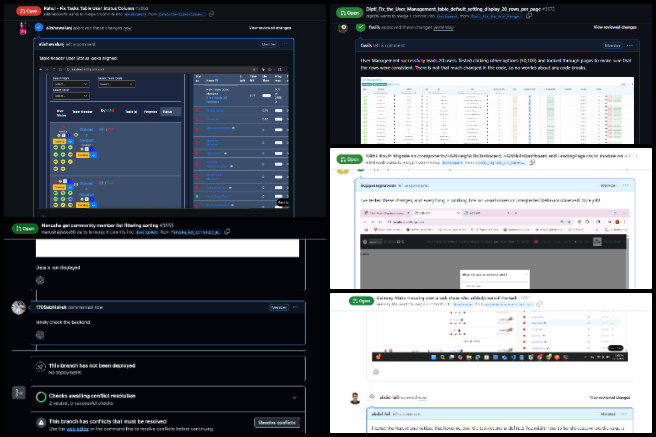
SOFTWARE PR REVIEW TEAM G-N
The PR Review Team’s summary for team members’ names starting with G–N and covering their work on the Highest Good Network software was managed by Govind Sajithkumar (Software Project Manager). The Highest Good Network software is a foundation for measuring our results of helping people create their own sustainable futures. This week’s active members of this team were: Haocheng Xu (Developer), Kedarnath Ravi Shankar Gubbi (Software Engineer), Kurtis Ivey (Full Stack Developer), Nahiyan Ahmed (Full Stack Software Developer), Nathan Hoffman (Software Engineer), and Neel Singh (Software Engineer). They reviewed all the Highest Good Network PRs (Pull Requests) shared in this week’s update. Learn more about how the Highest Good Network measures helping people create their own sustainable futures by exploring the Highest Good Network open-source hub. The collage below shows a compilation of the work from this team.
SOFTWARE PR REVIEW TEAM O-Z
The PR Review Team’s summary for team members’ names starting with O–Z and covering their work on the Highest Good Network software was managed by Jaiwanth Reddy Adavalli (Software Project Manager). The Highest Good Network software is a foundation for measuring our results of helping people create their own sustainable futures. This week’s active members of this team were: Pranav Govindaswamy (Software Developer), Prasanth Bhimana (Software Engineer), Saicharan Reddy Kotha (Software Engineer), Shreyas Bedekar (Software Engineer), Varsha Karanam (Software Engineer), Veda Bellam (Software Engineer), Venkataramanan Venkateswaran (Software Engineer), and Yiyun Tan (Software Engineer). They reviewed all the Highest Good Network PRs (Pull Requests) shared in this week’s update. Learn more about how the Highest Good Network measures helping people create their own sustainable futures by exploring the Highest Good Network open-source hub. The collage below shows a compilation of the work from this team.
AND WE PRODUCED THIS WEEKLY UPDATES BLOG – CLICK HERE TO SUBSCRIBE
FOLLOW ONE COMMUNITY’S PROGRESS (click icons for our pages)
INVESTOR PAGES
GET INVOLVED
One Community Welcomes Khushie Zaveri to the Administration Team!
Posted on June 20, 2025 by One Community Hs
One Community welcomes Khushie Zaveri to the Administration Team as our newest Volunteer/Consultant!

Khushie is a marketing and communications professional with experience spanning campaign strategy, digital outreach, and cross-functional collaboration. With a strong foundation in audience engagement and content development, she brings a research-driven, design-conscious approach to every project. Her background includes work across nonprofit, agency, and in-house teams, with a focus on aligning communications with long-term impact. As part of the One Community team, Khushie contributes to metrics campaign development, email marketing, media kit creation, and Reddit and Mastodon engagement for public awareness initiatives.
WELCOME TO THE TEAM KHUSHIE!
FOLLOW ONE COMMUNITY’S PROGRESS (click icons for our pages)
 One Community
One Community